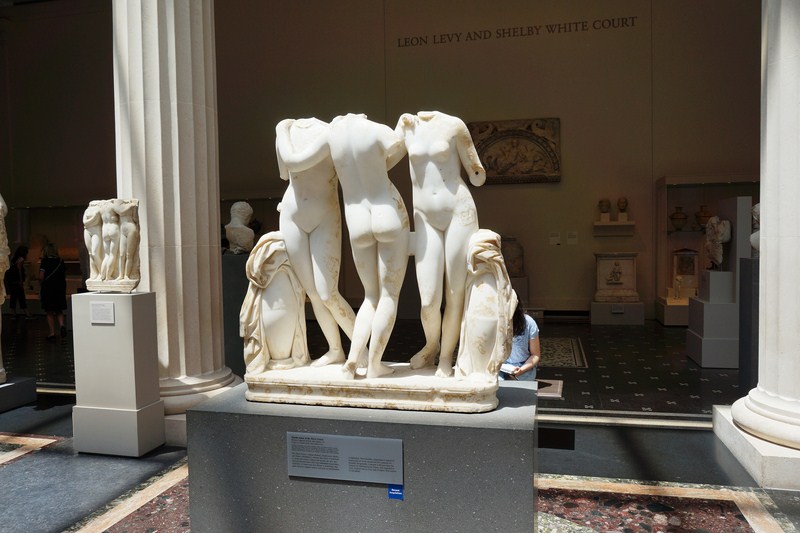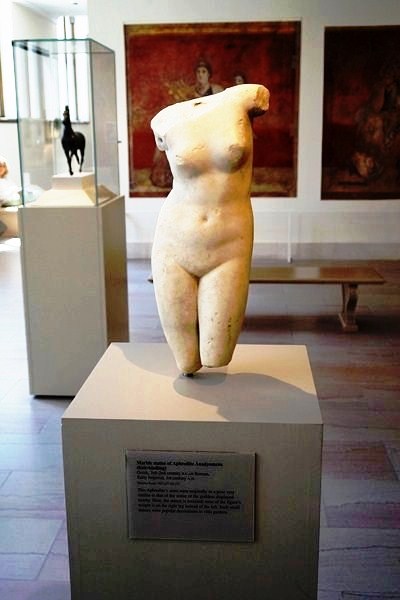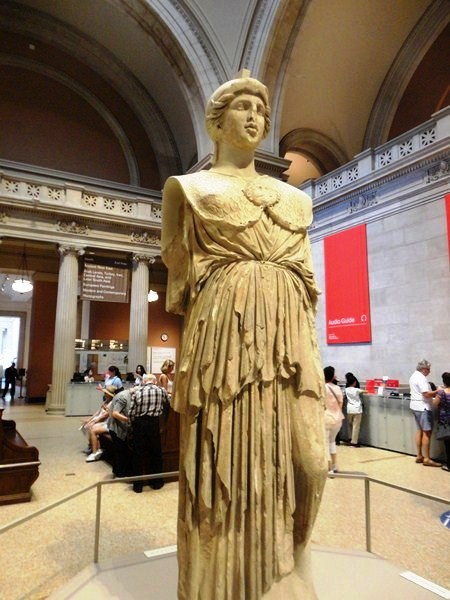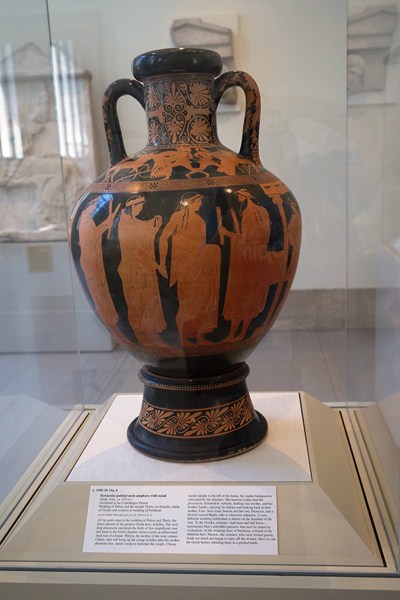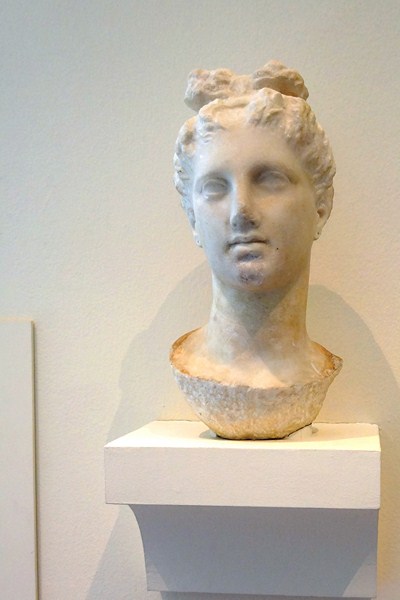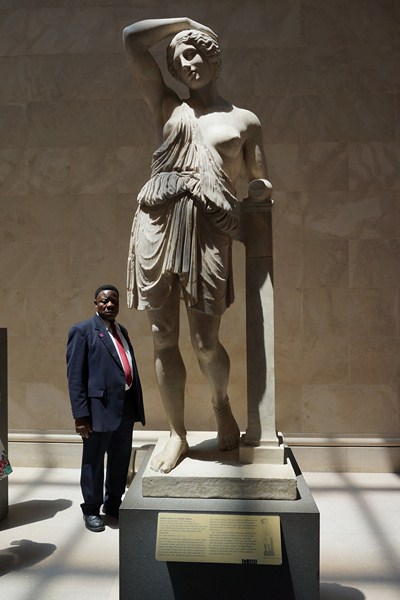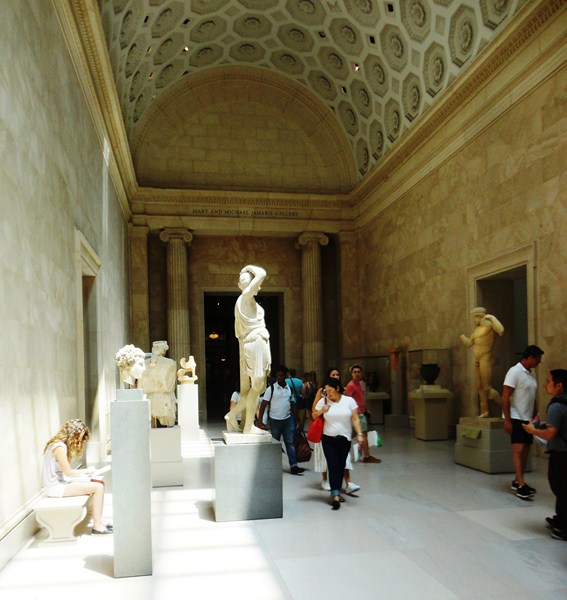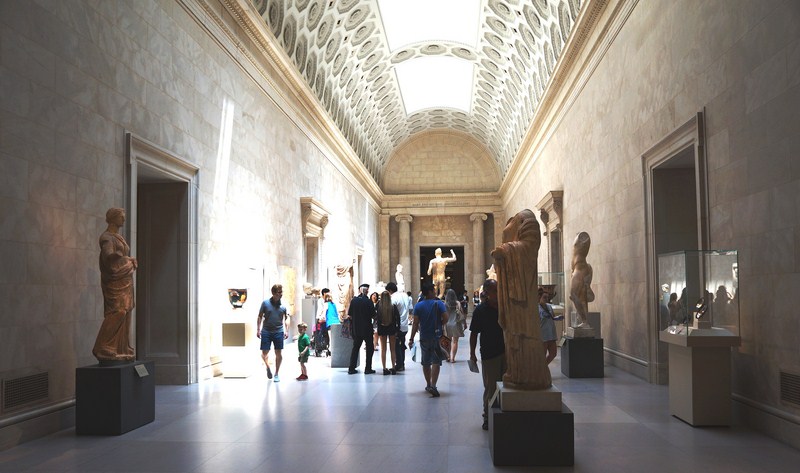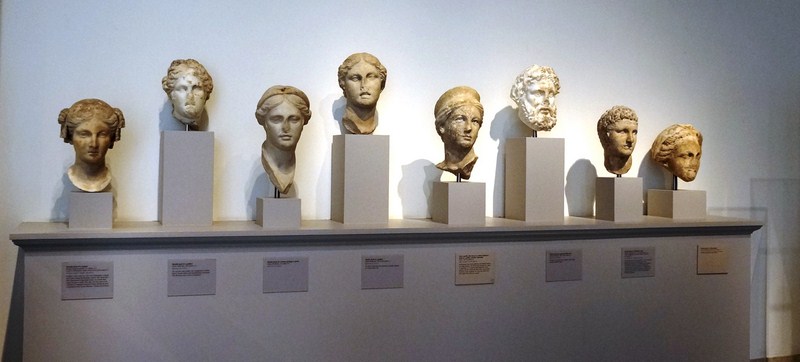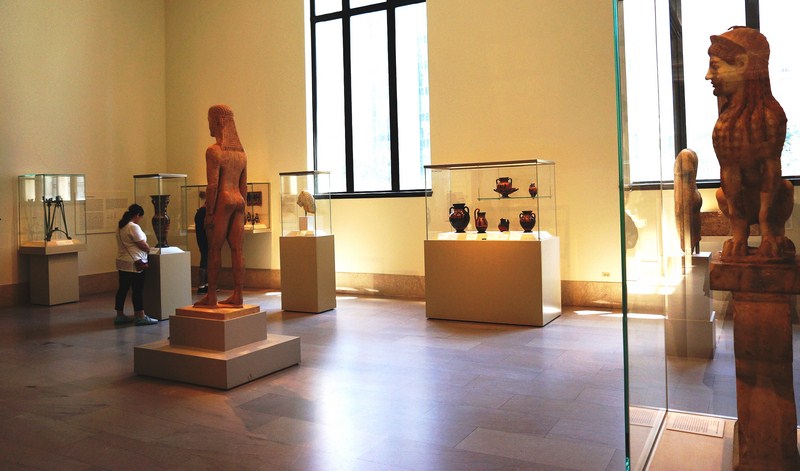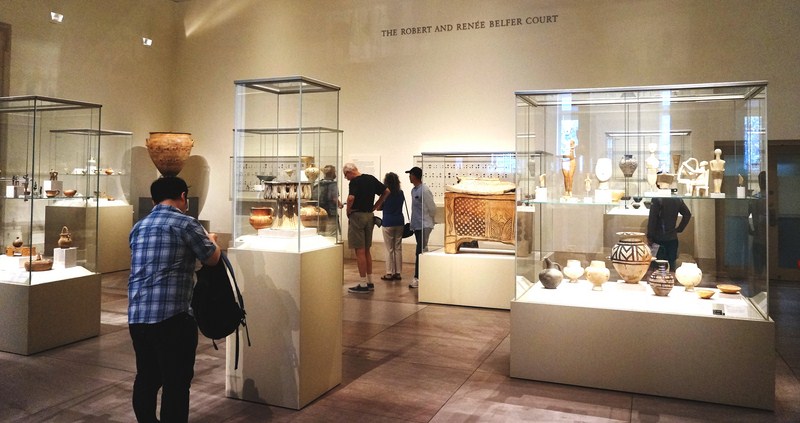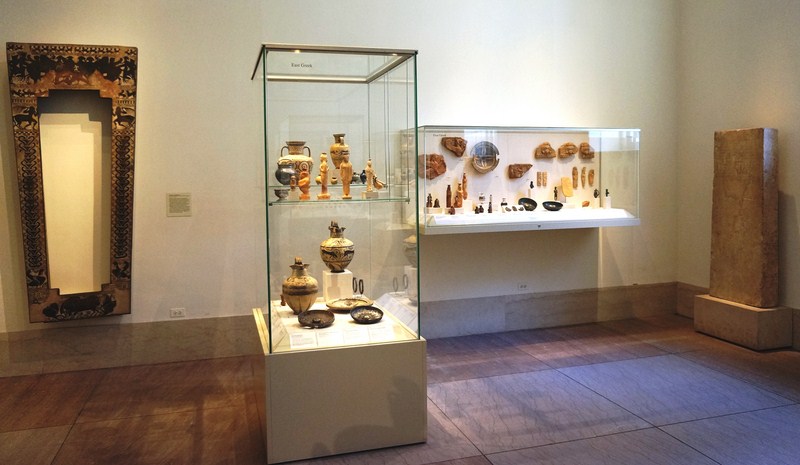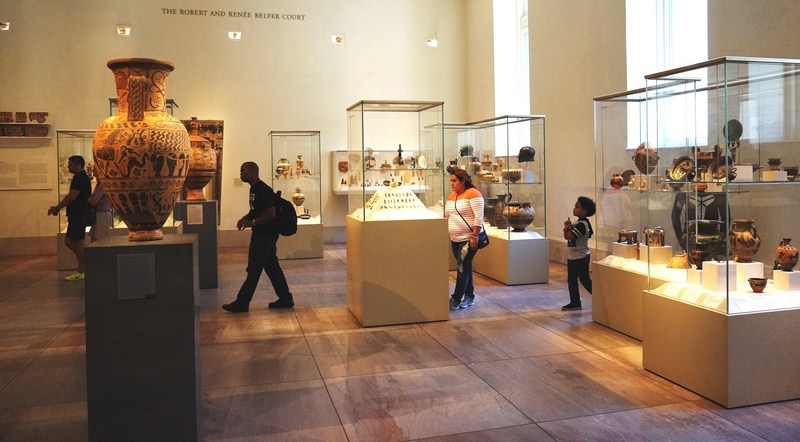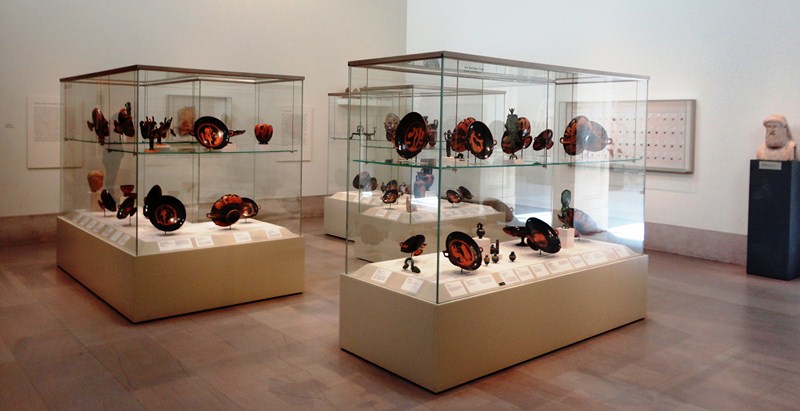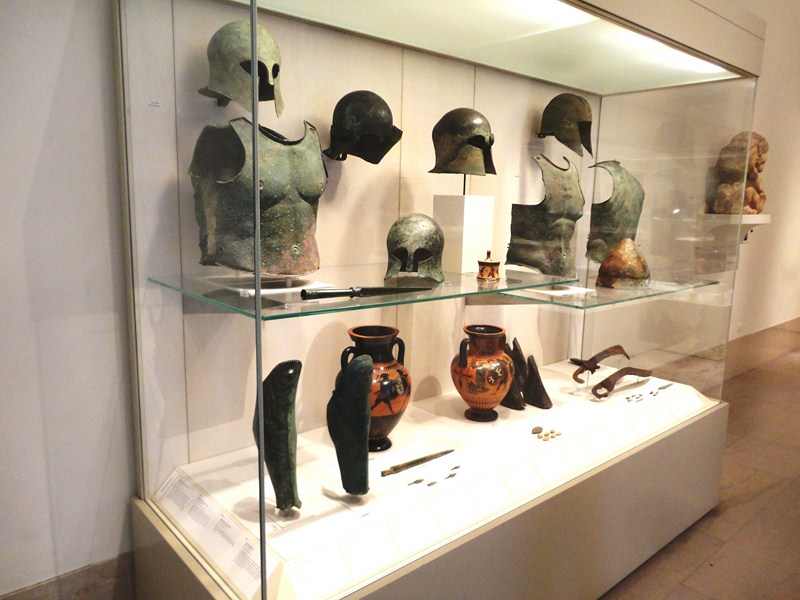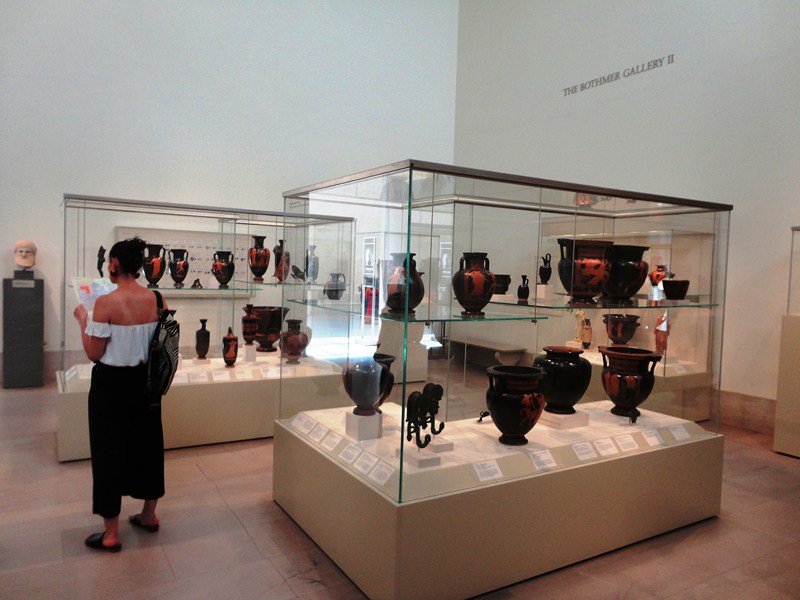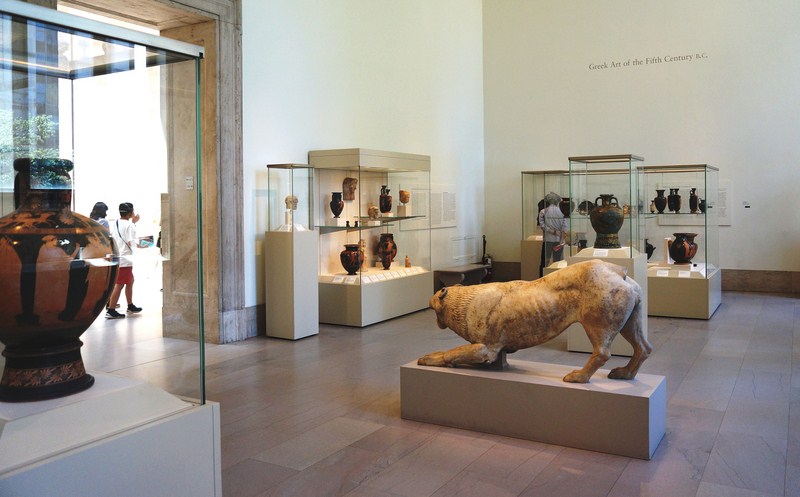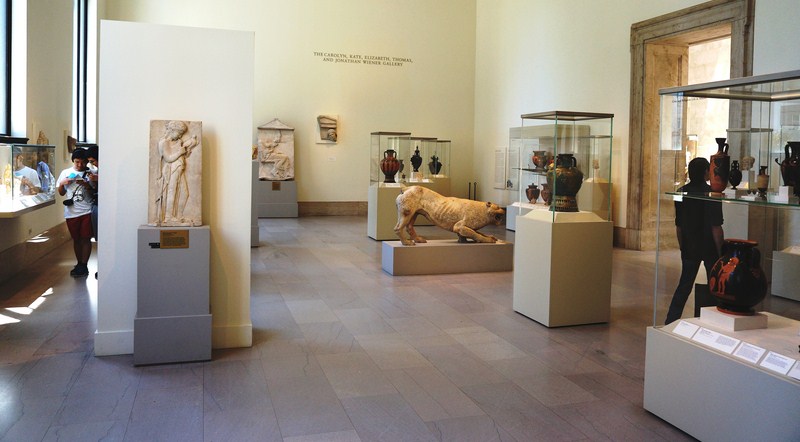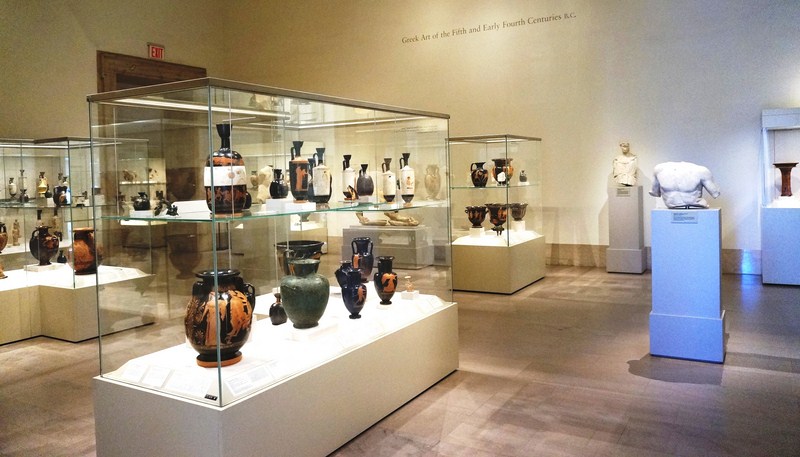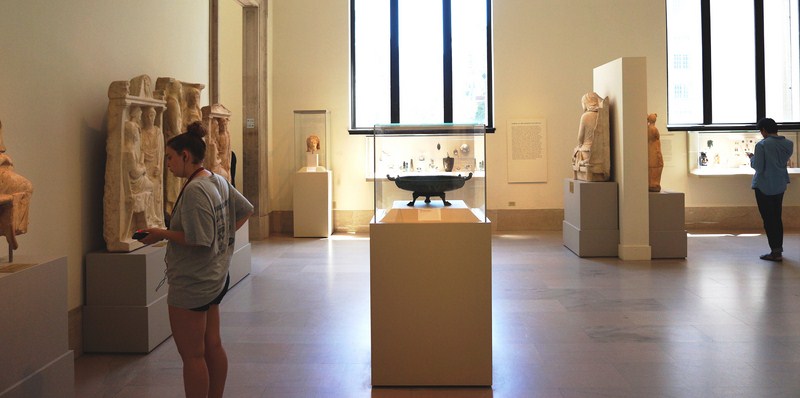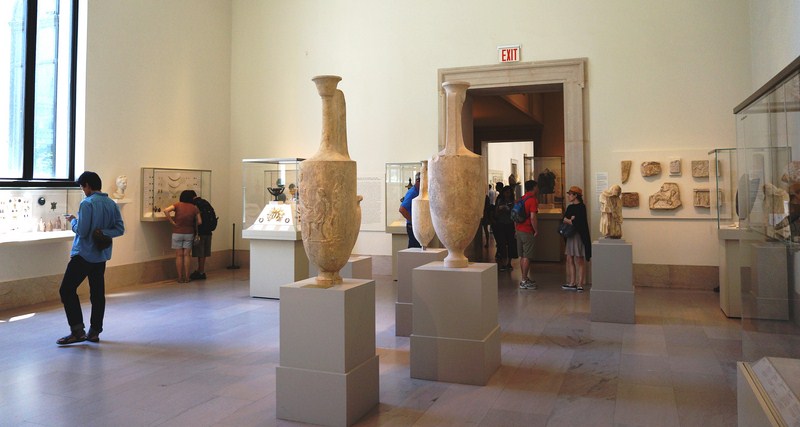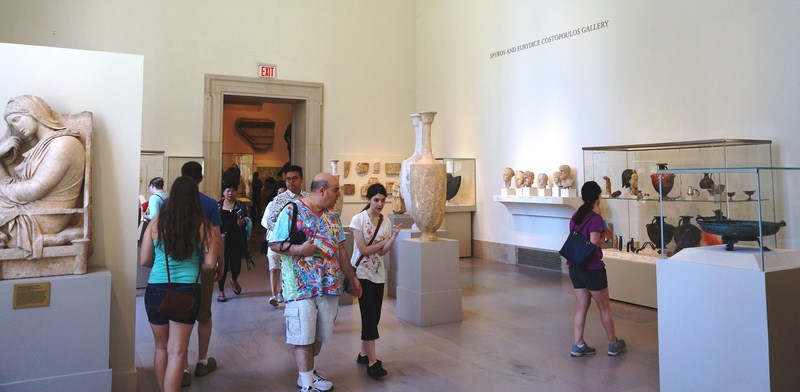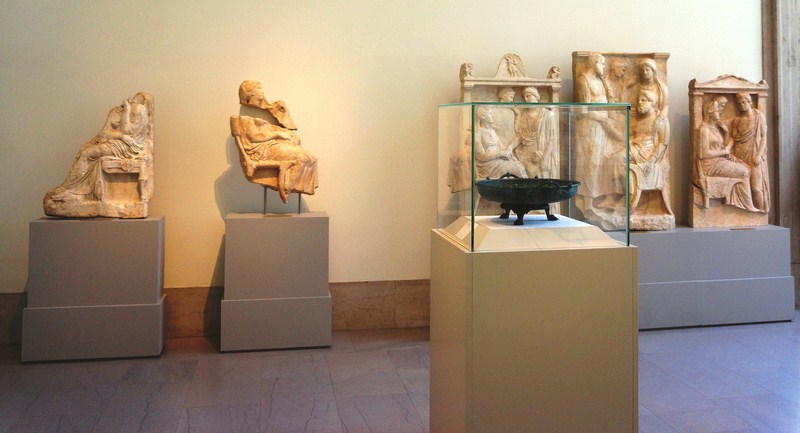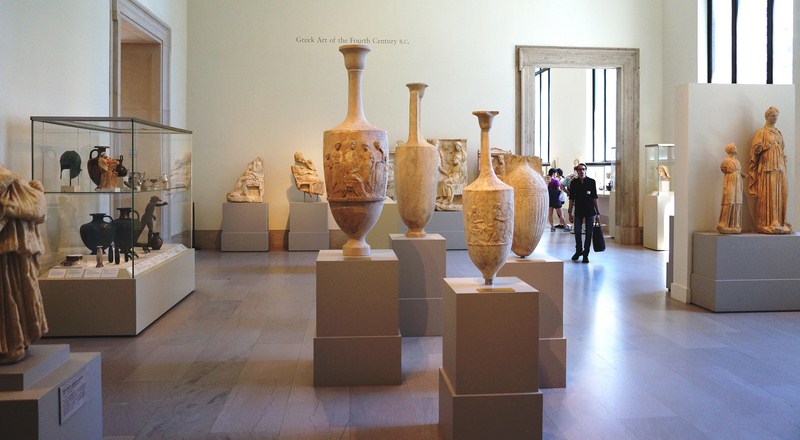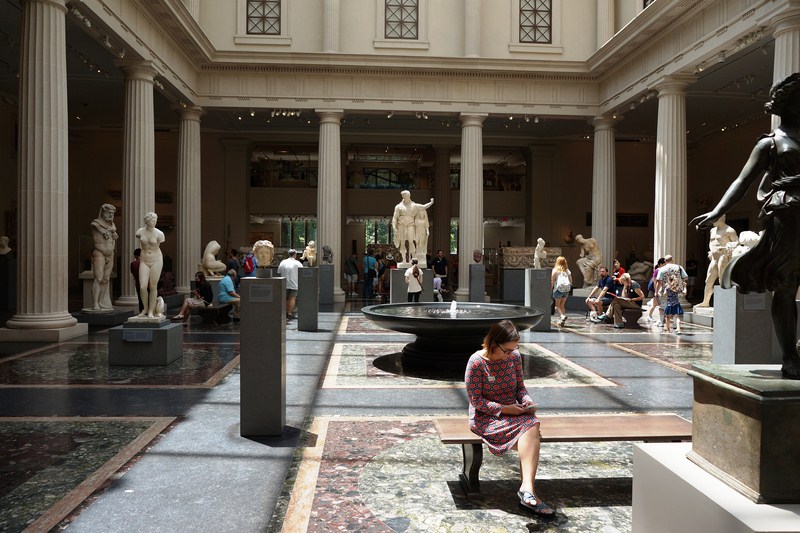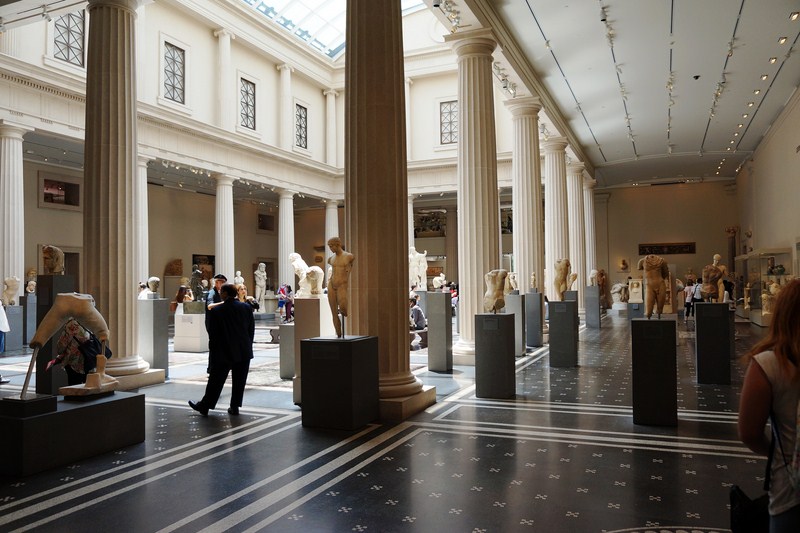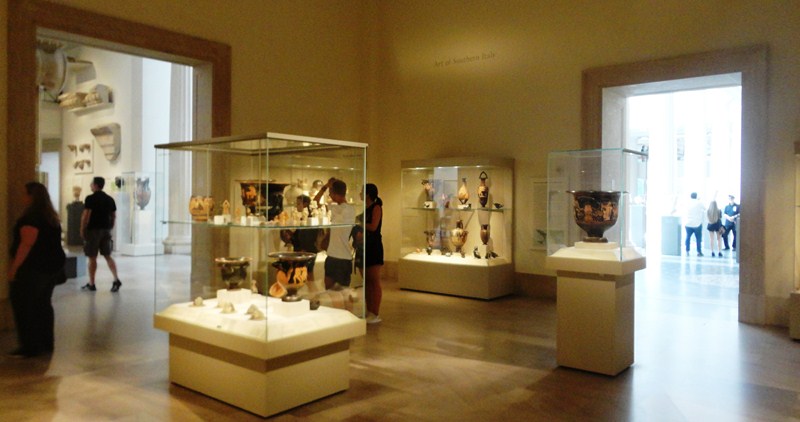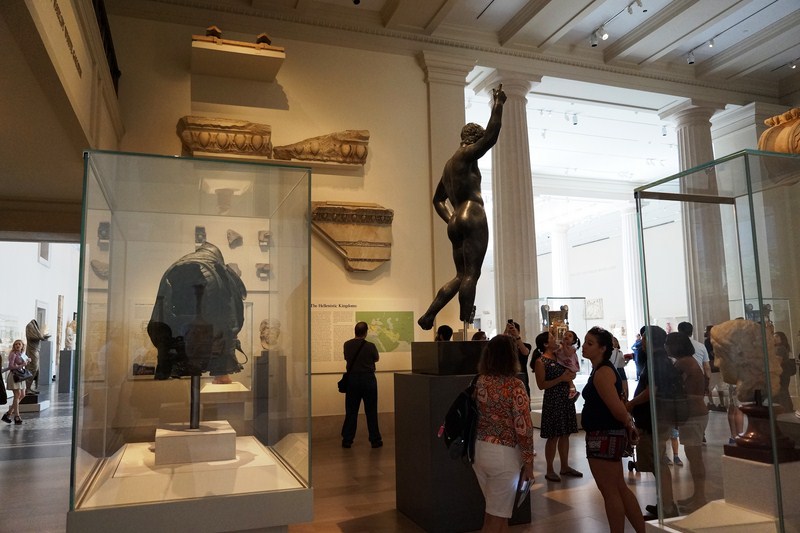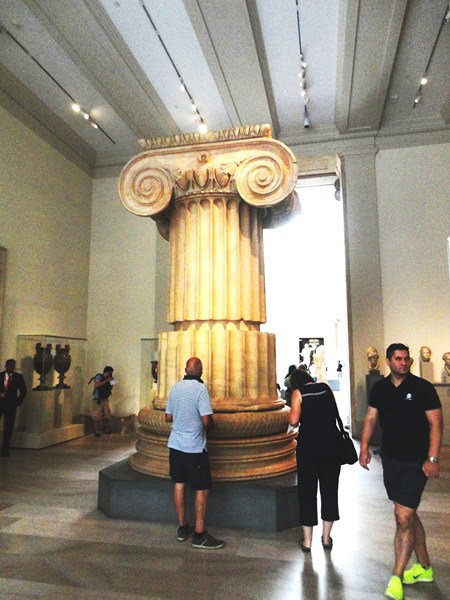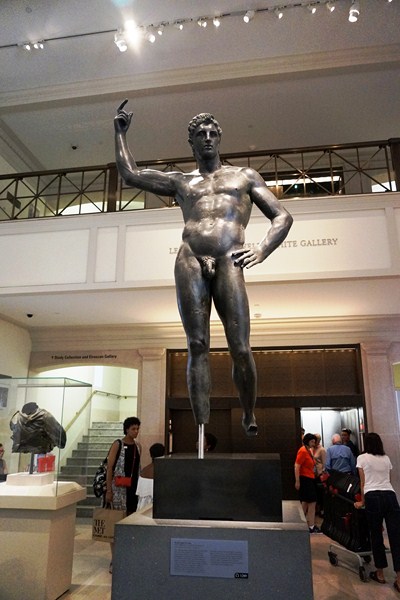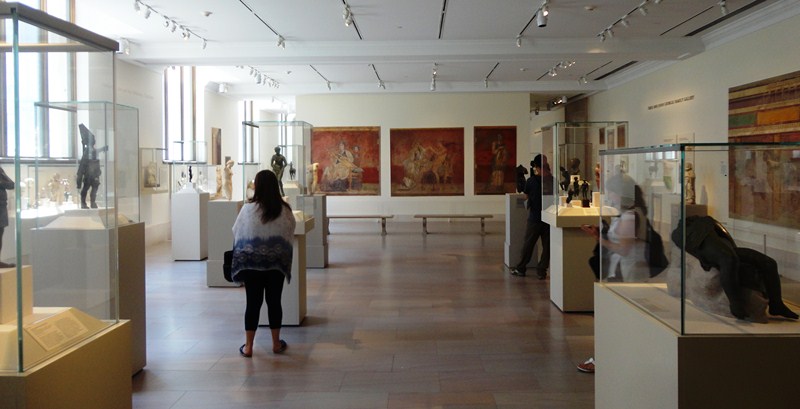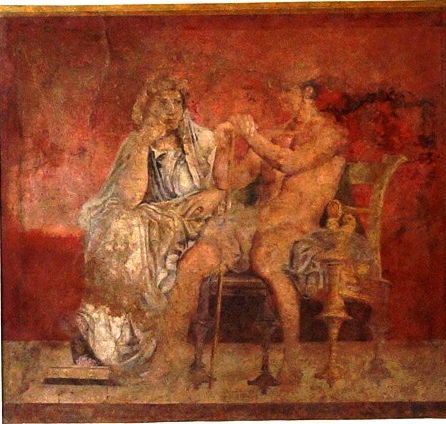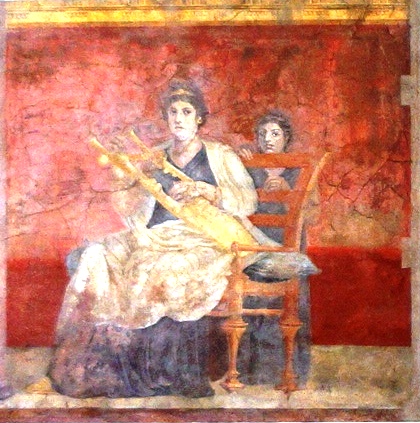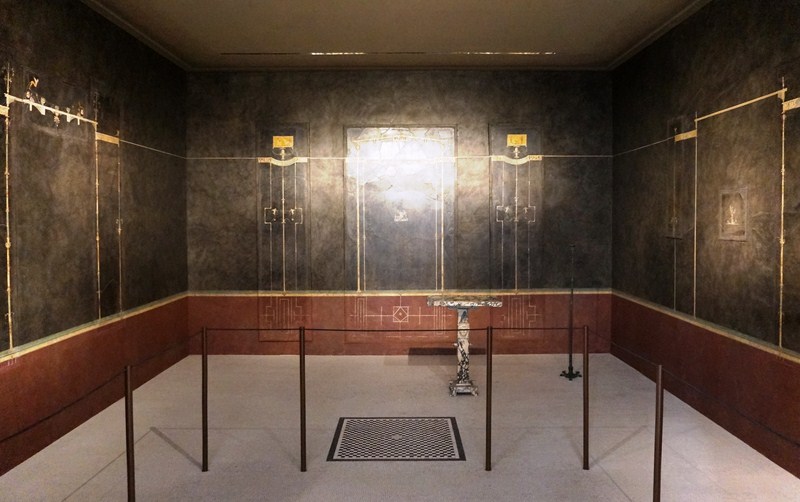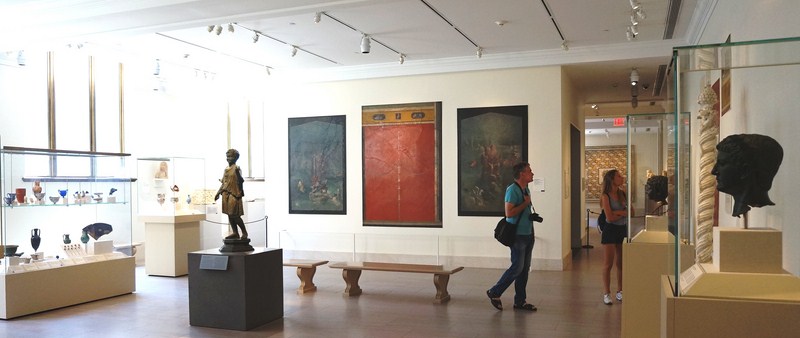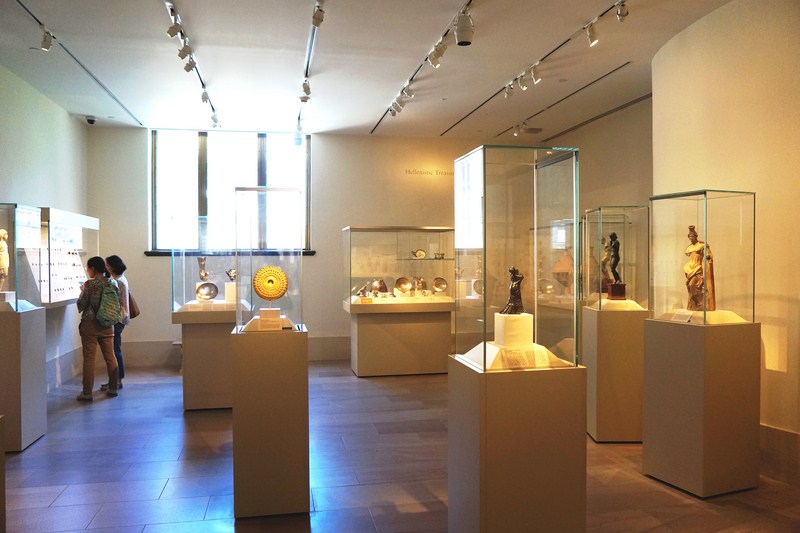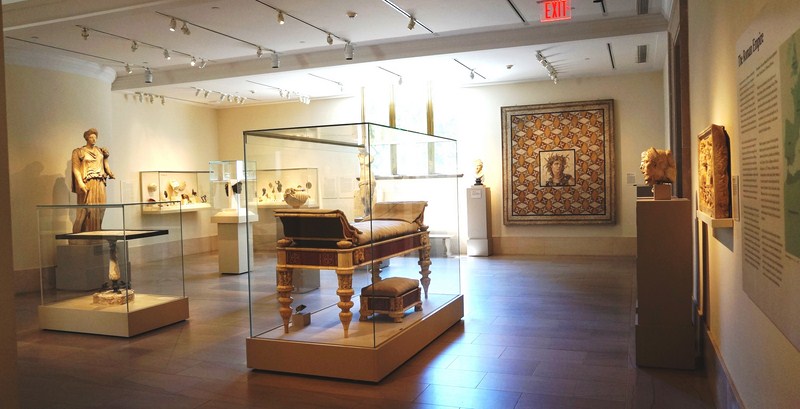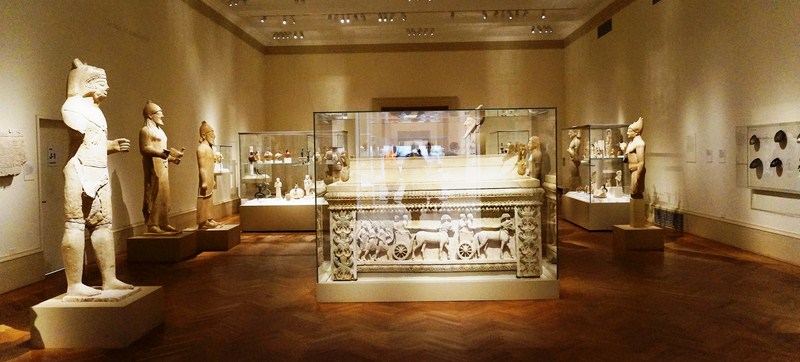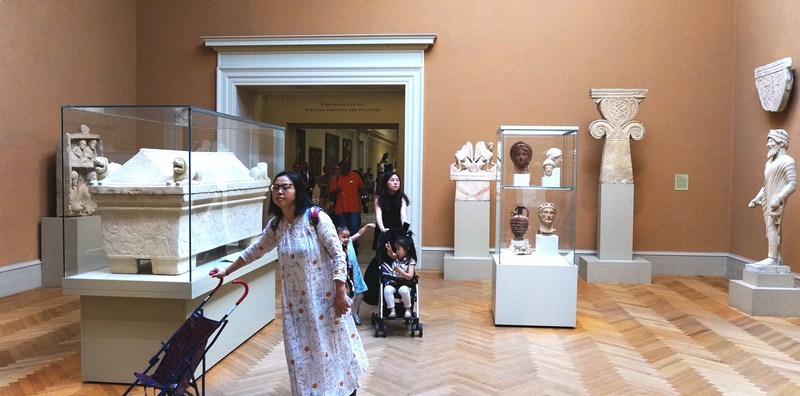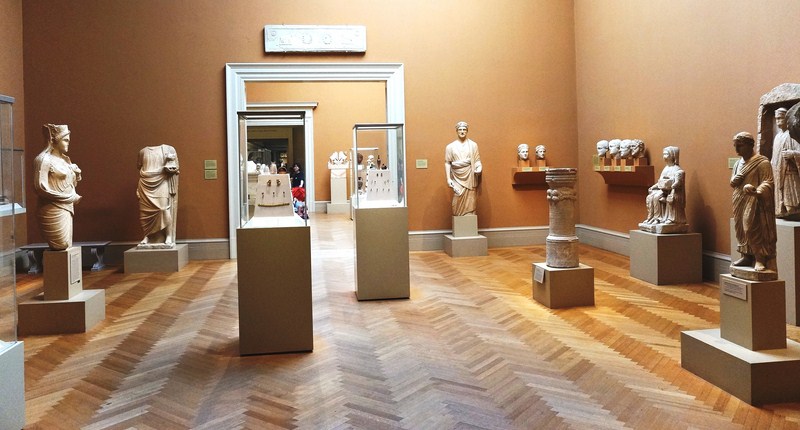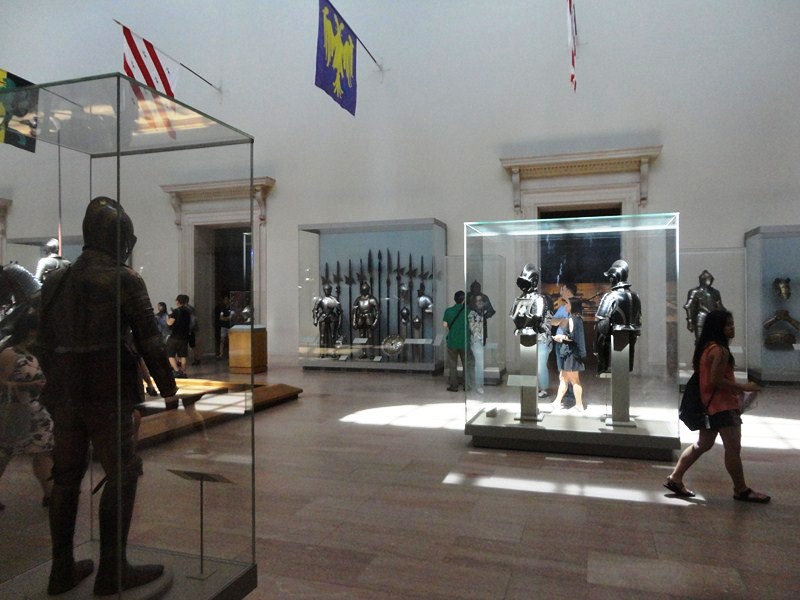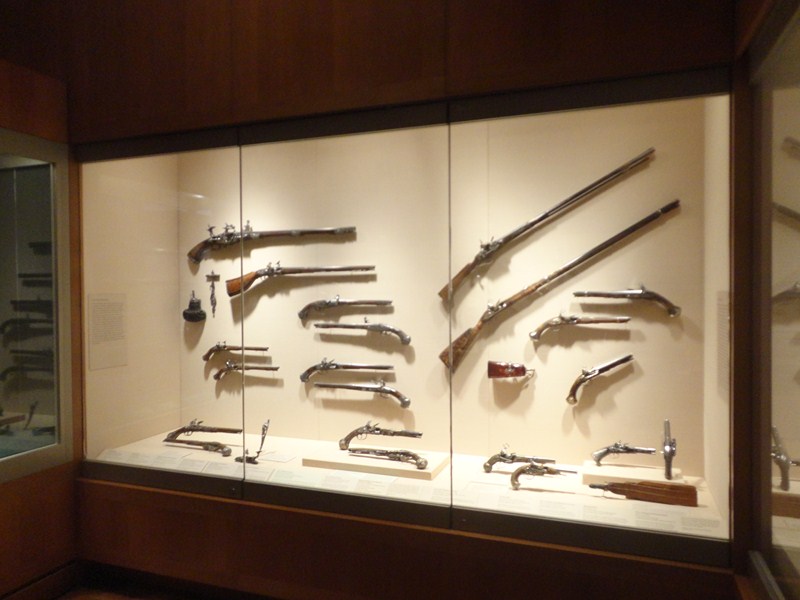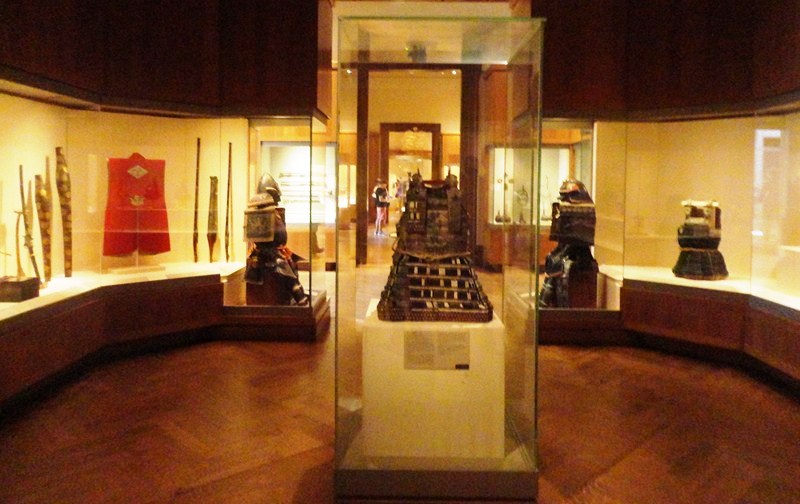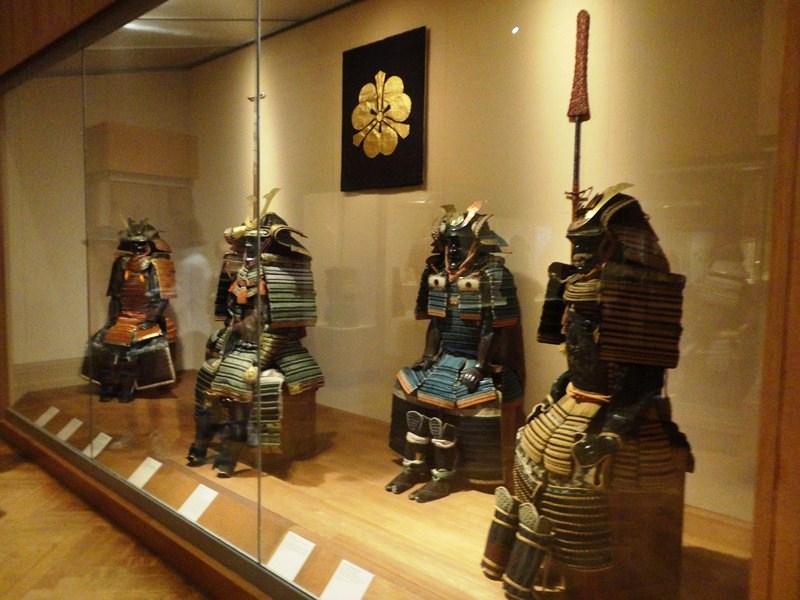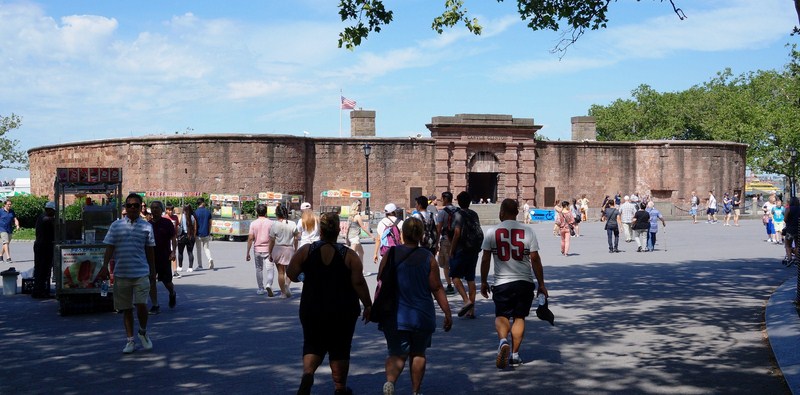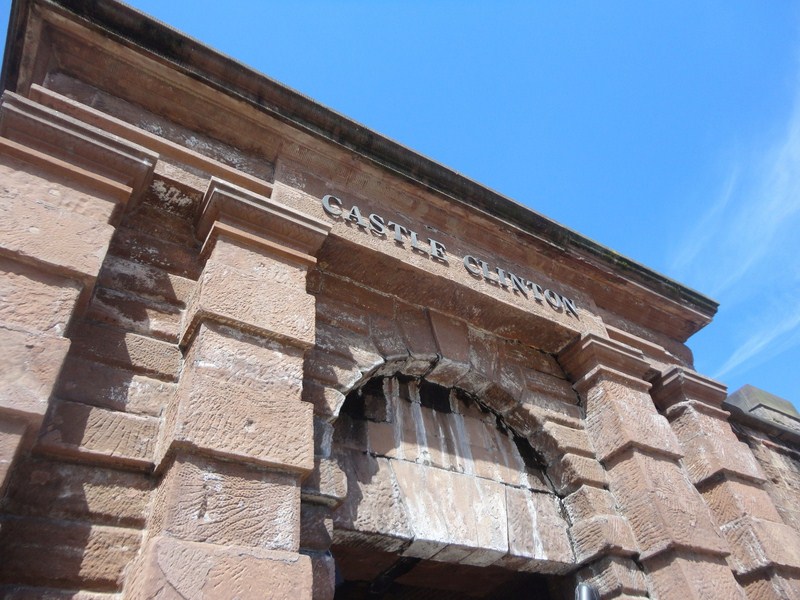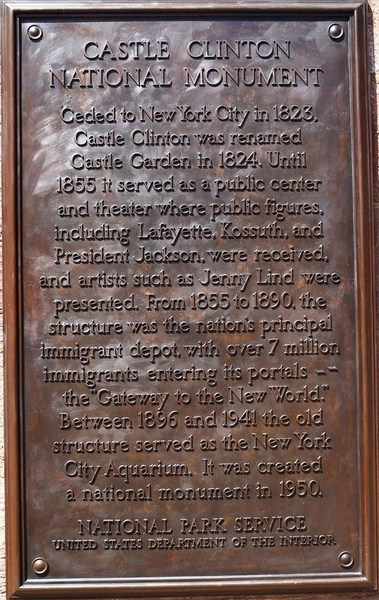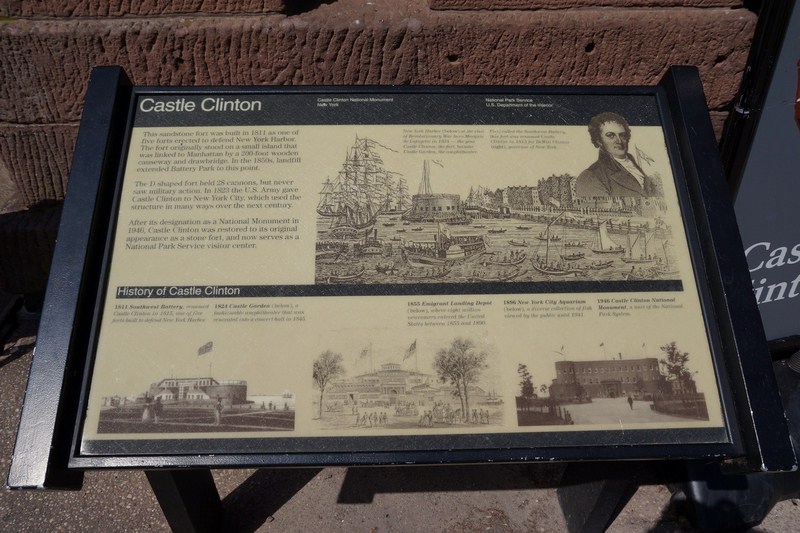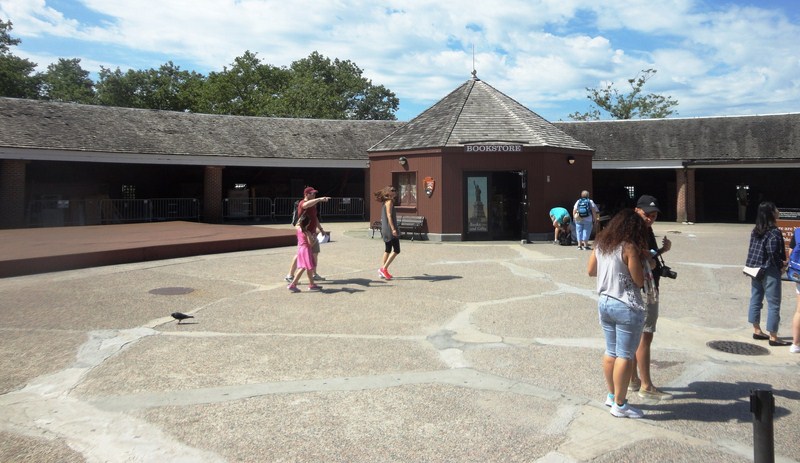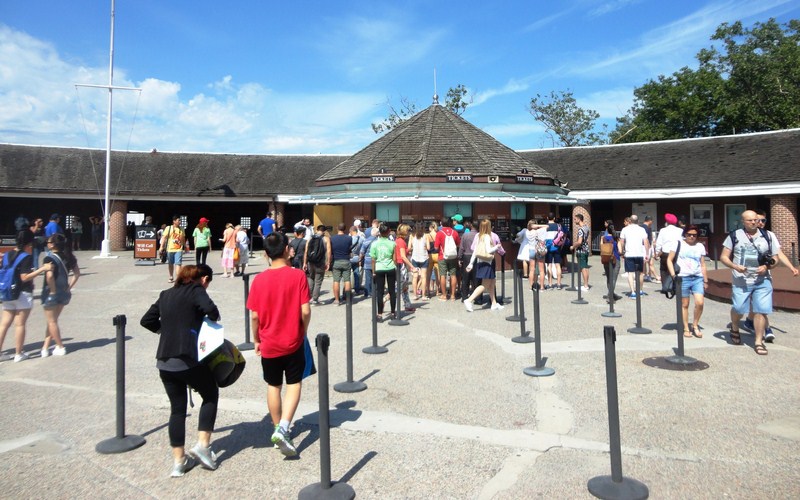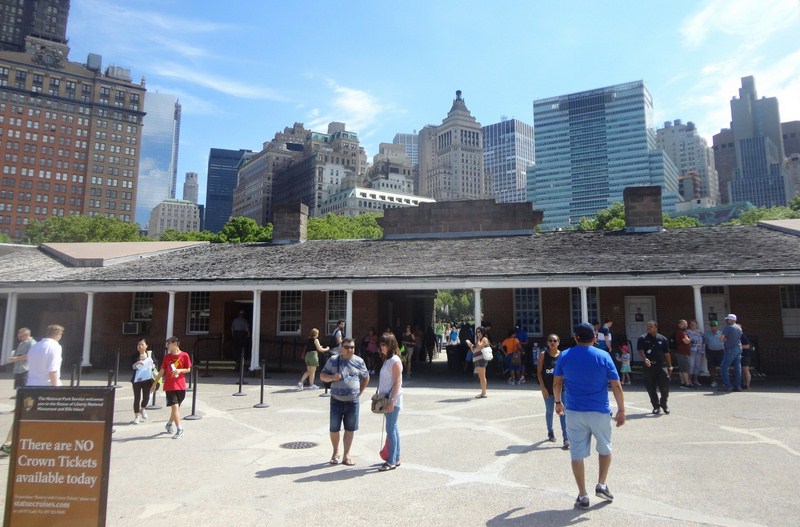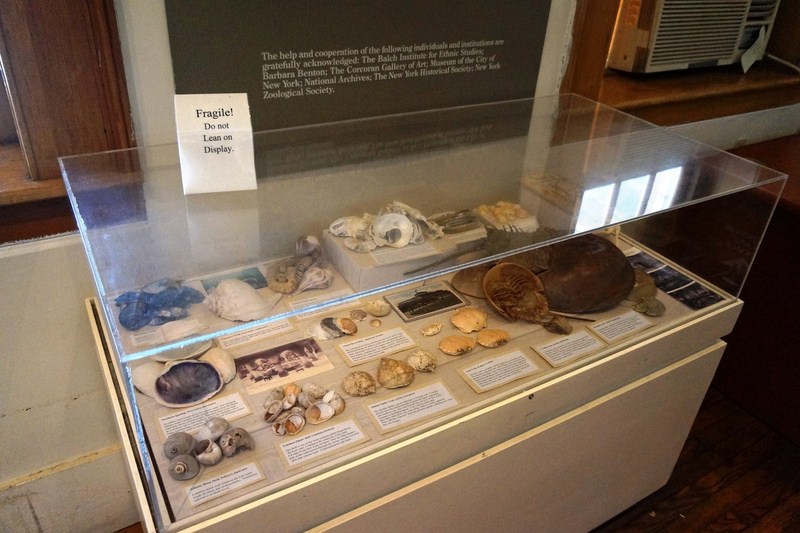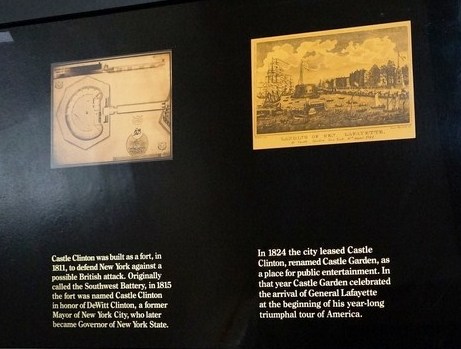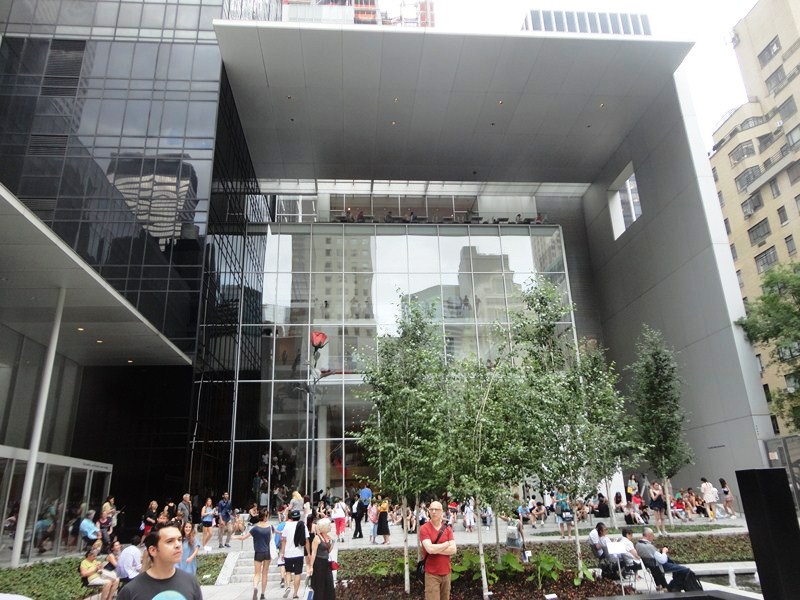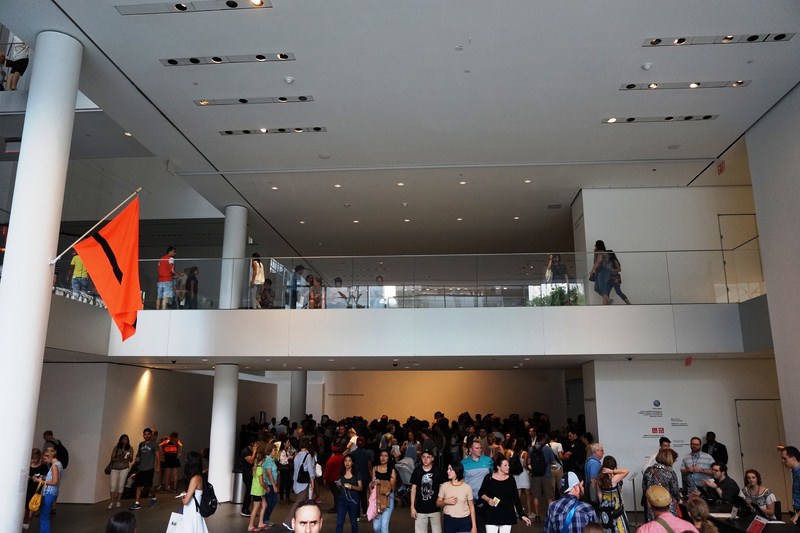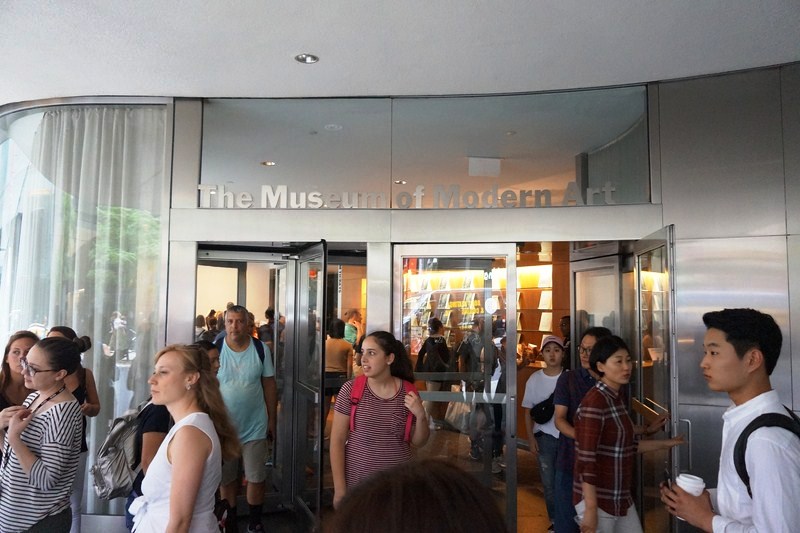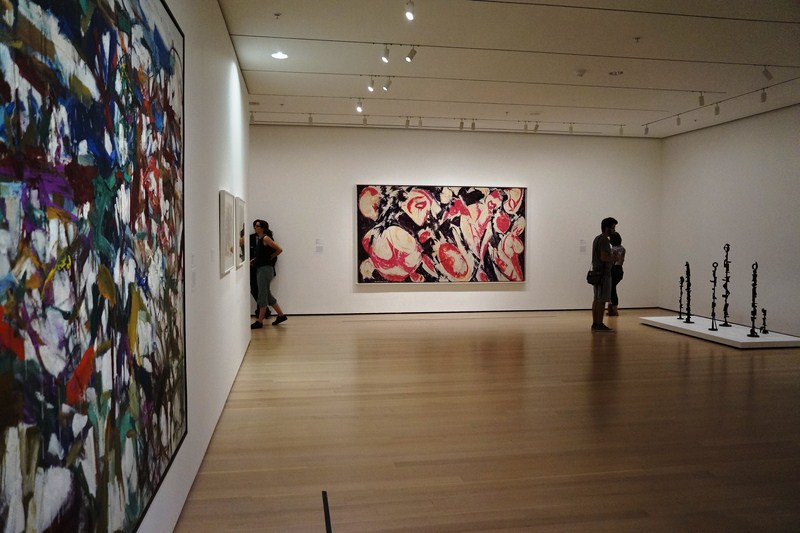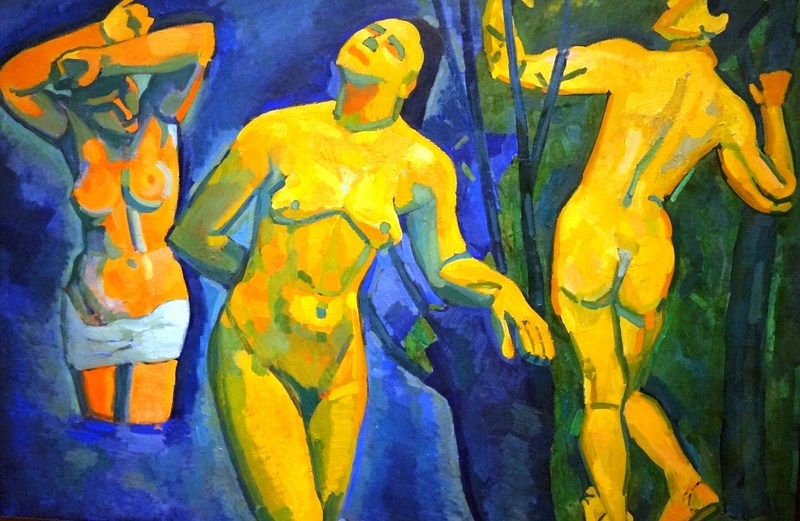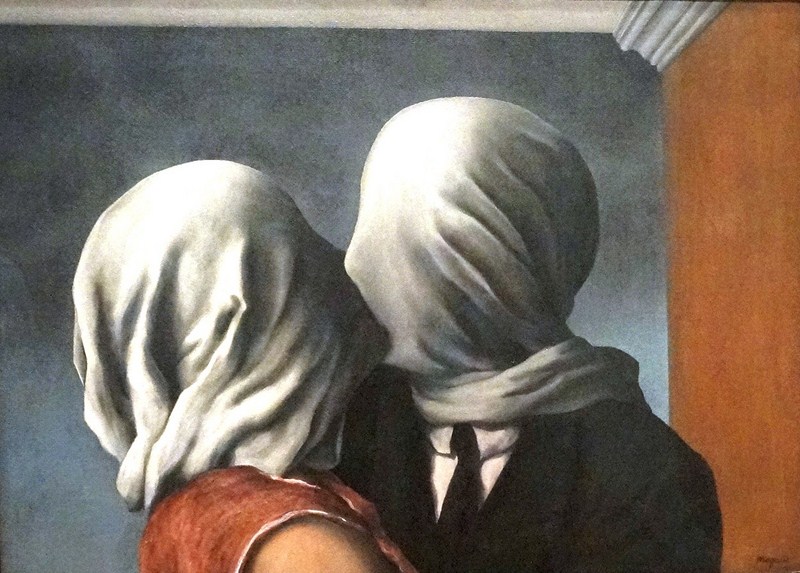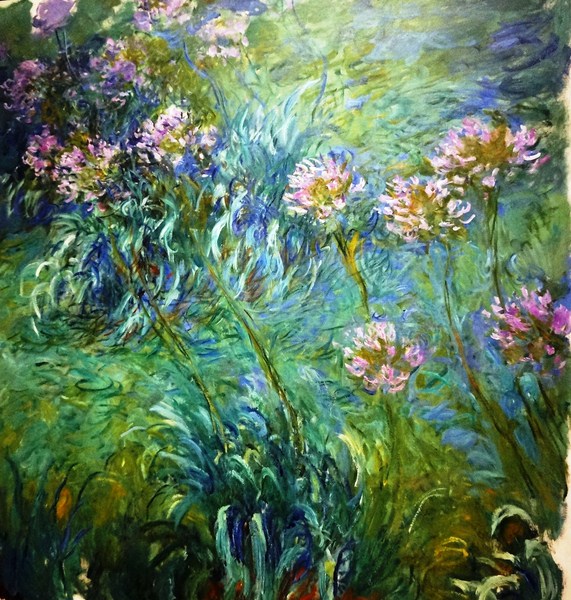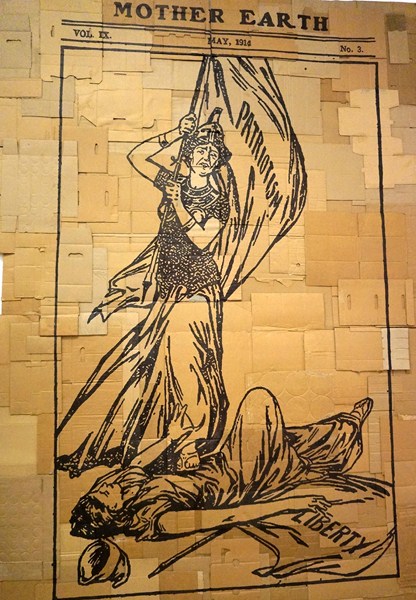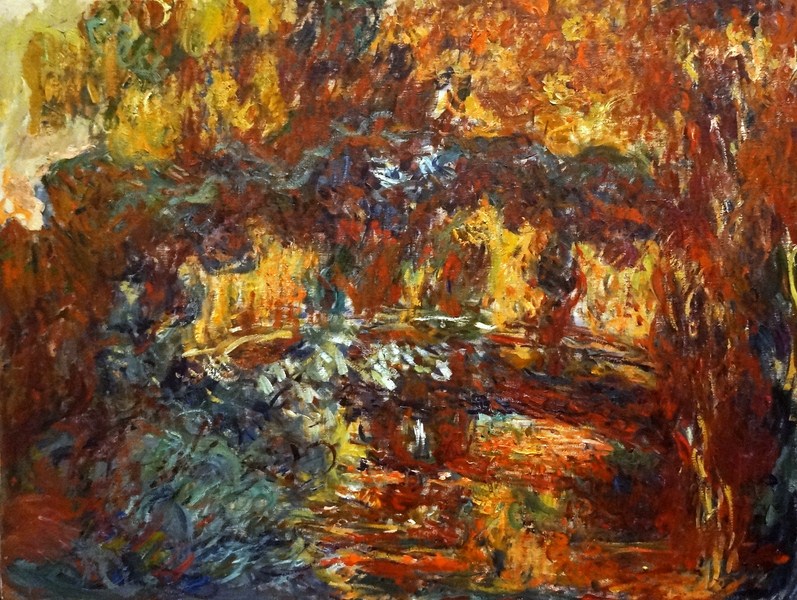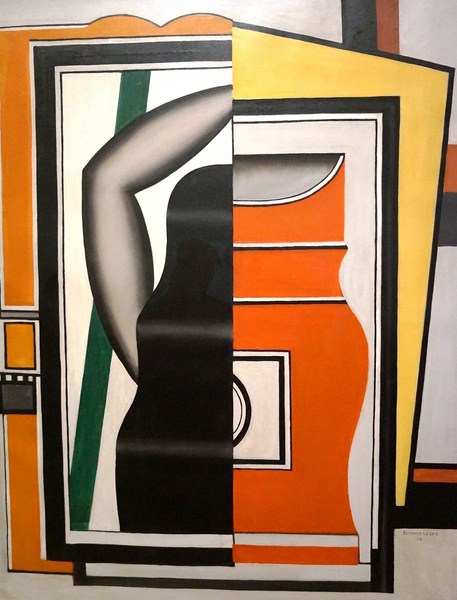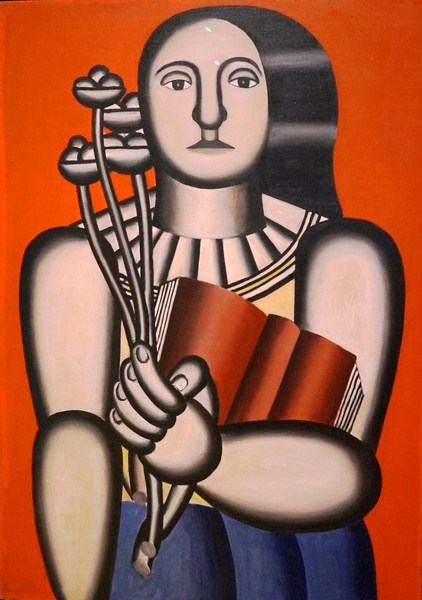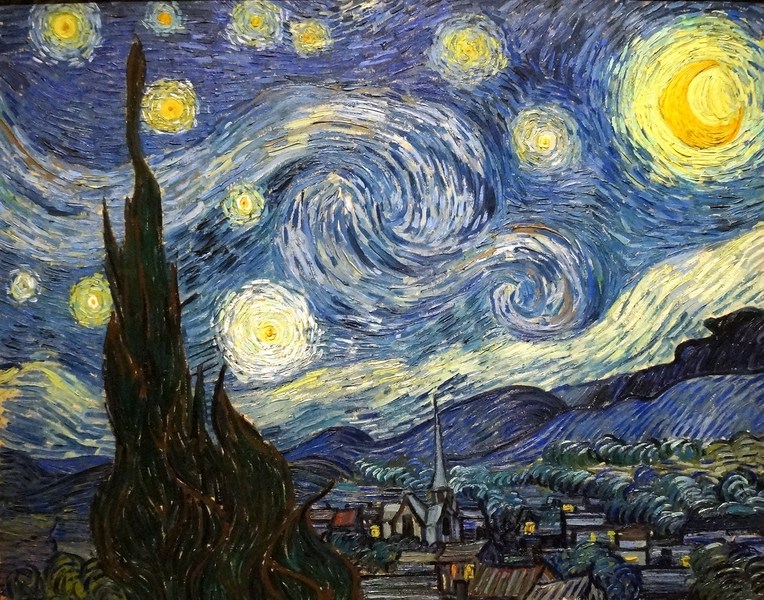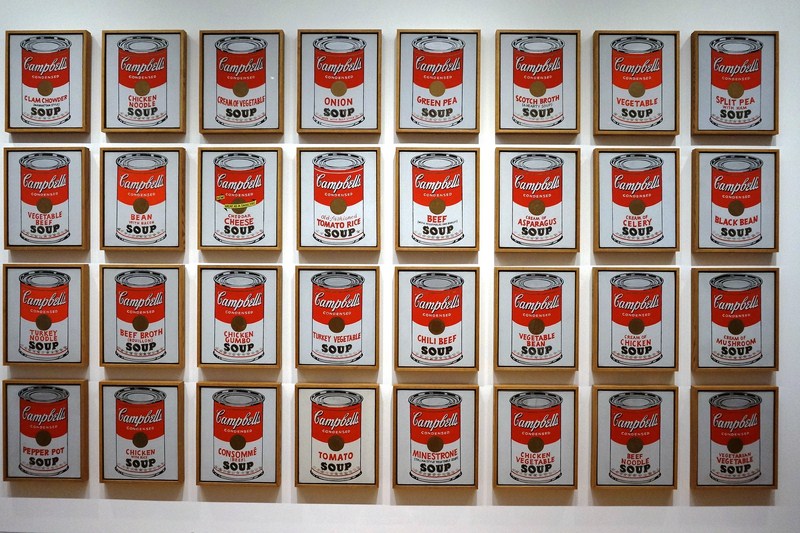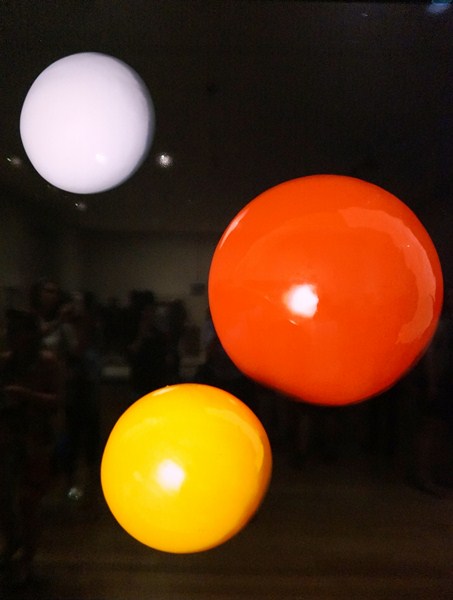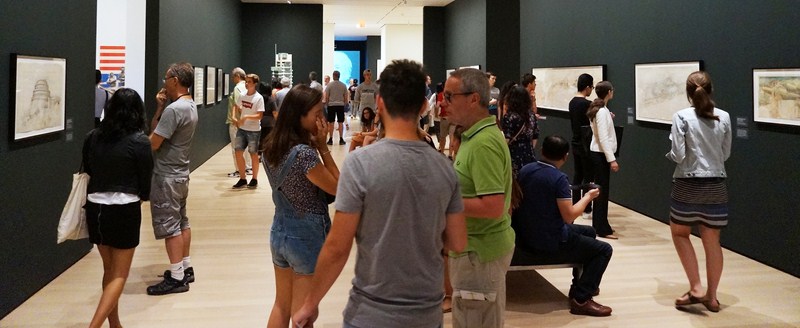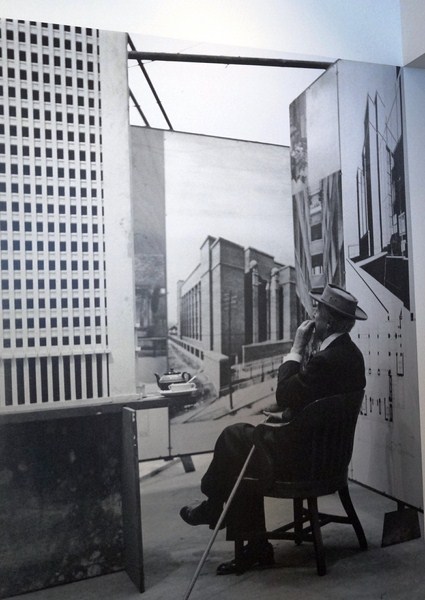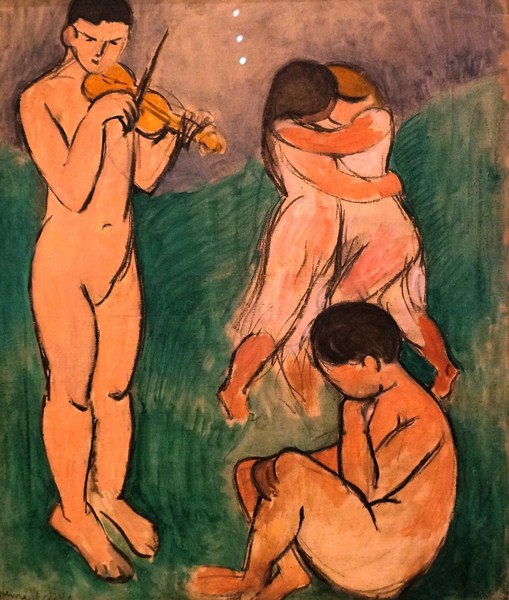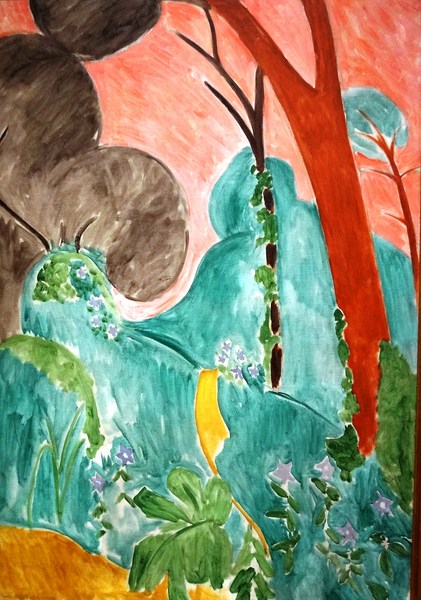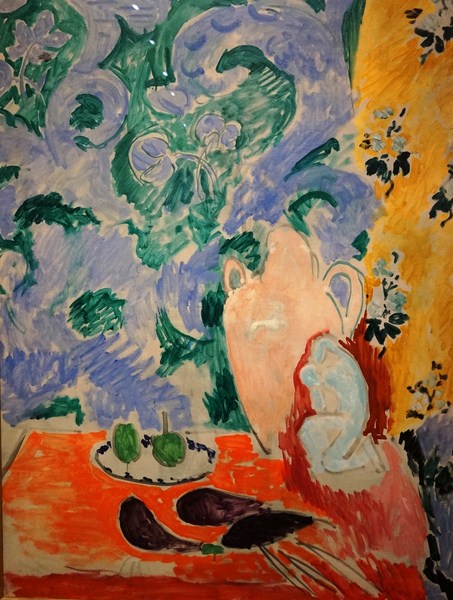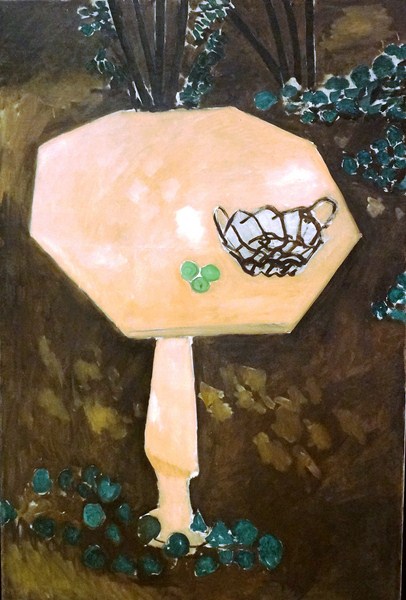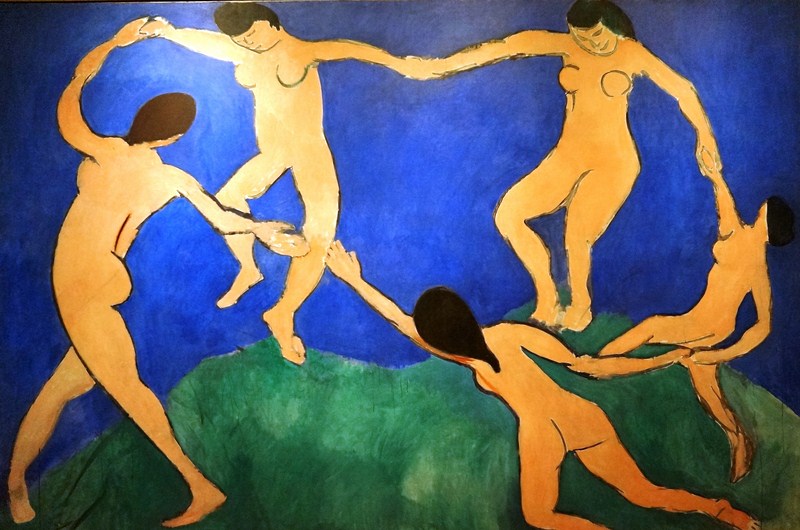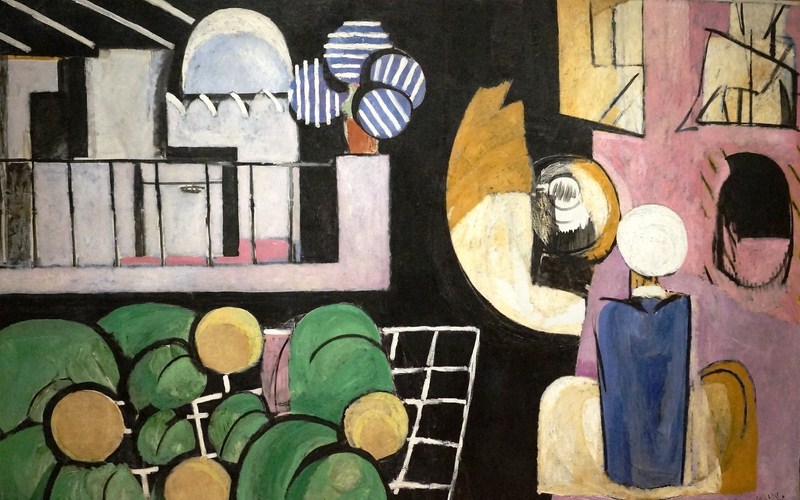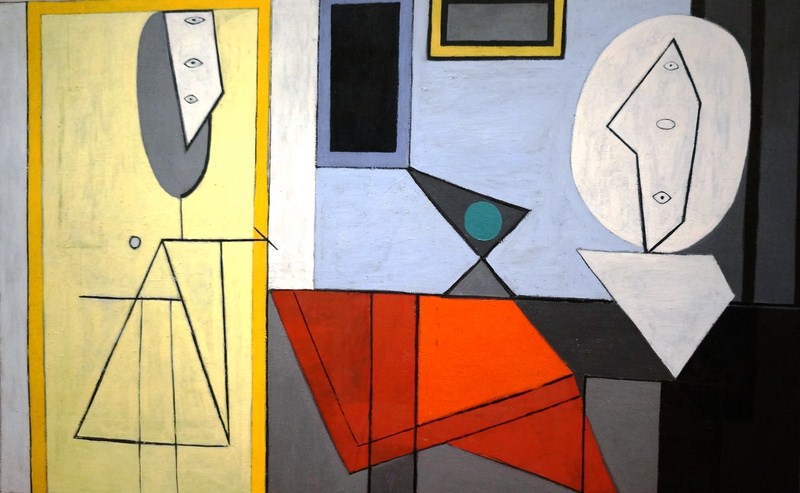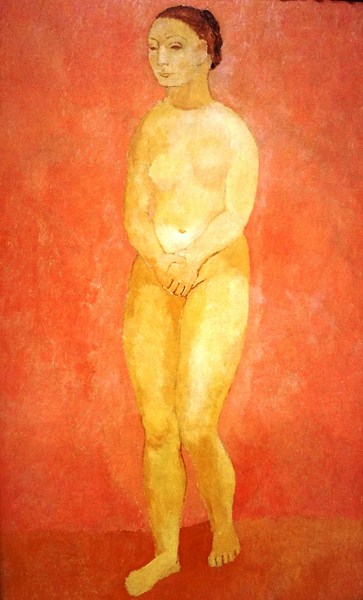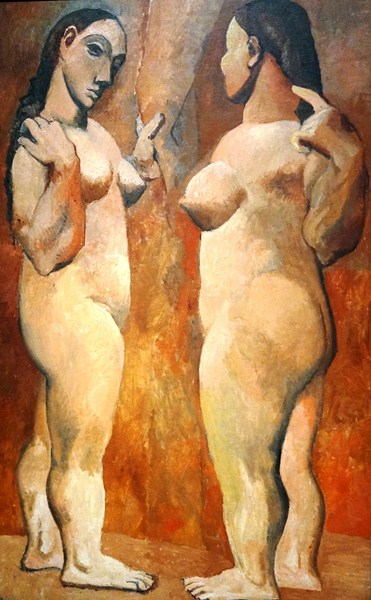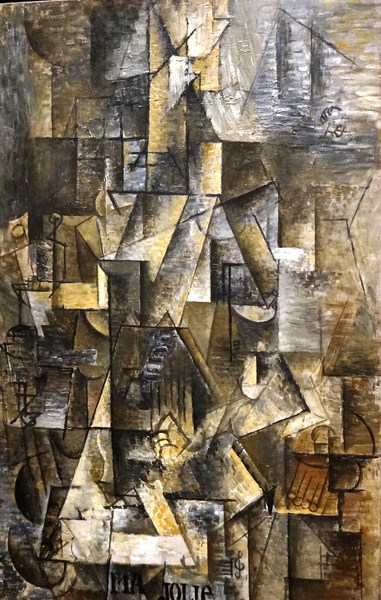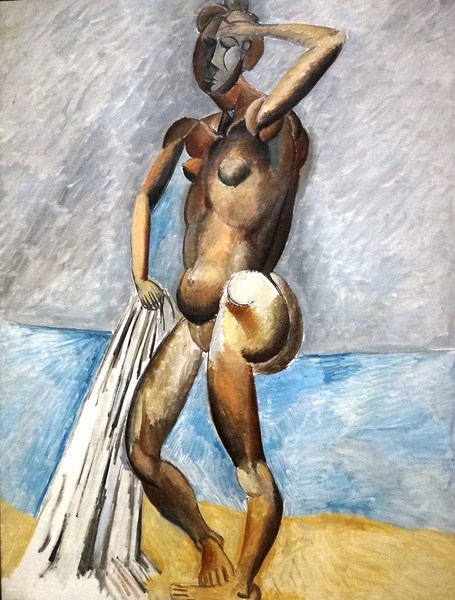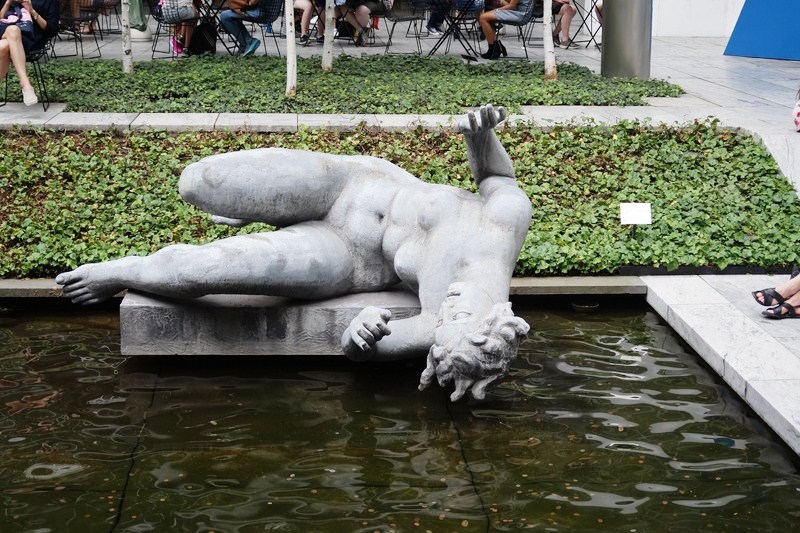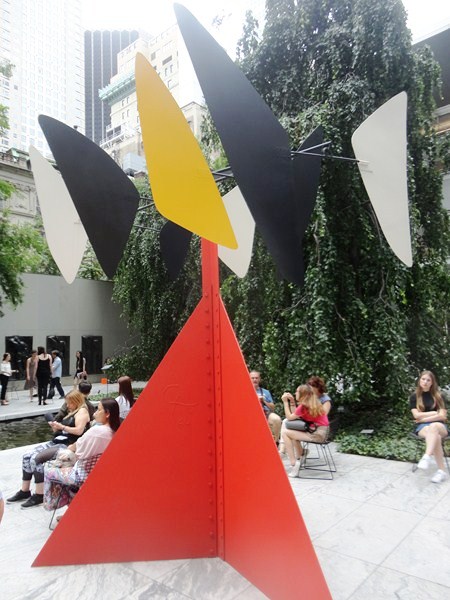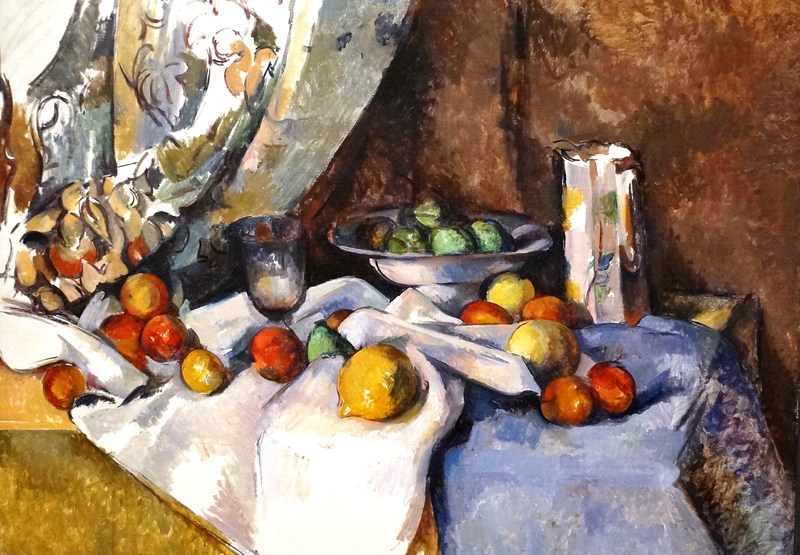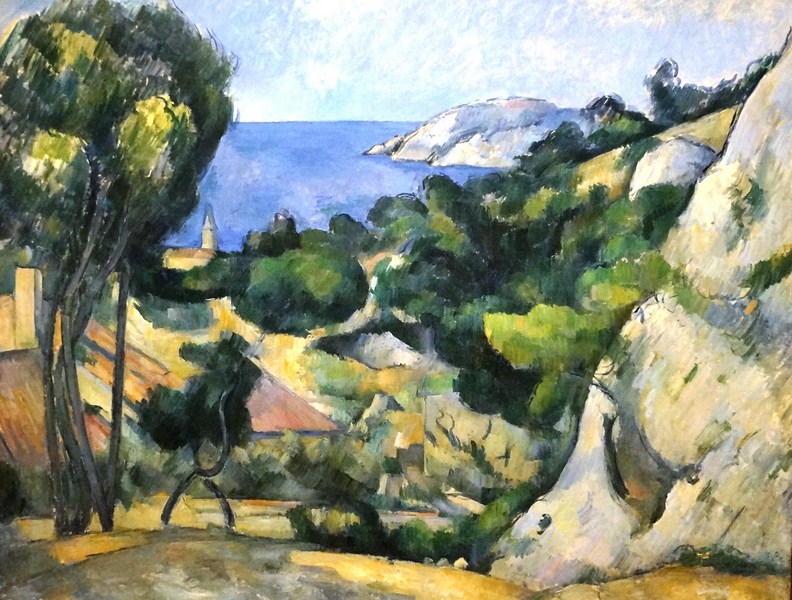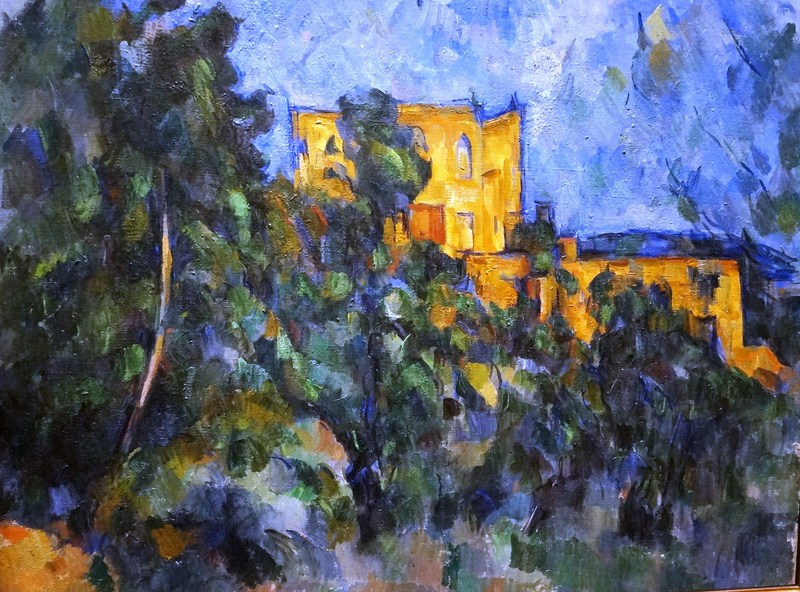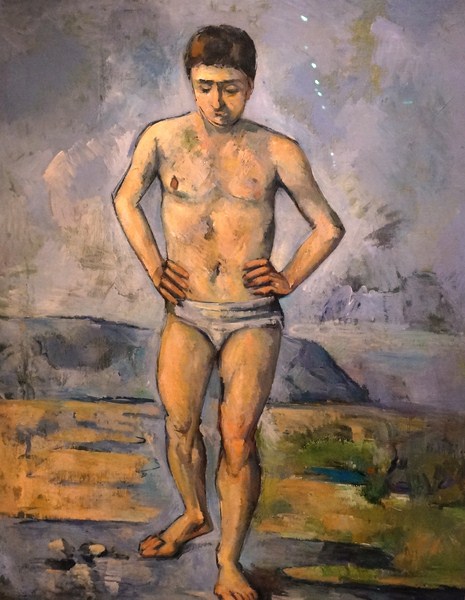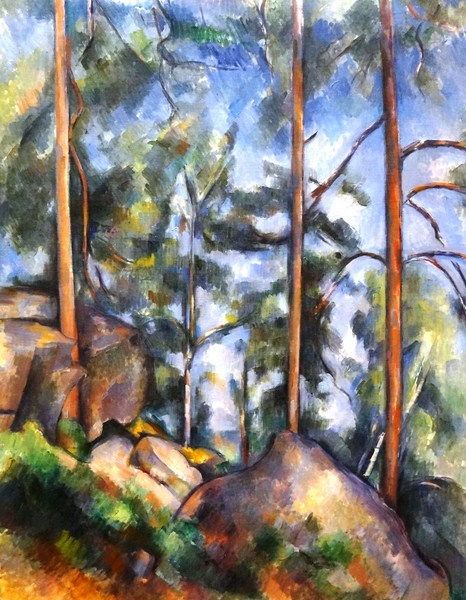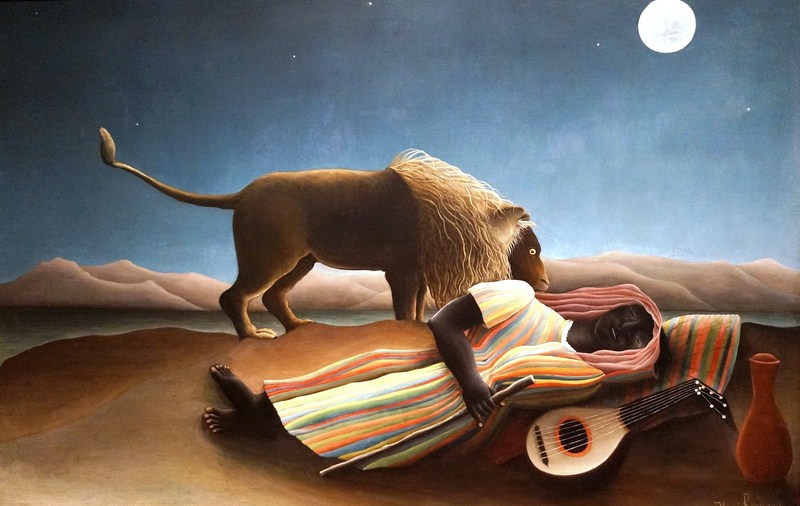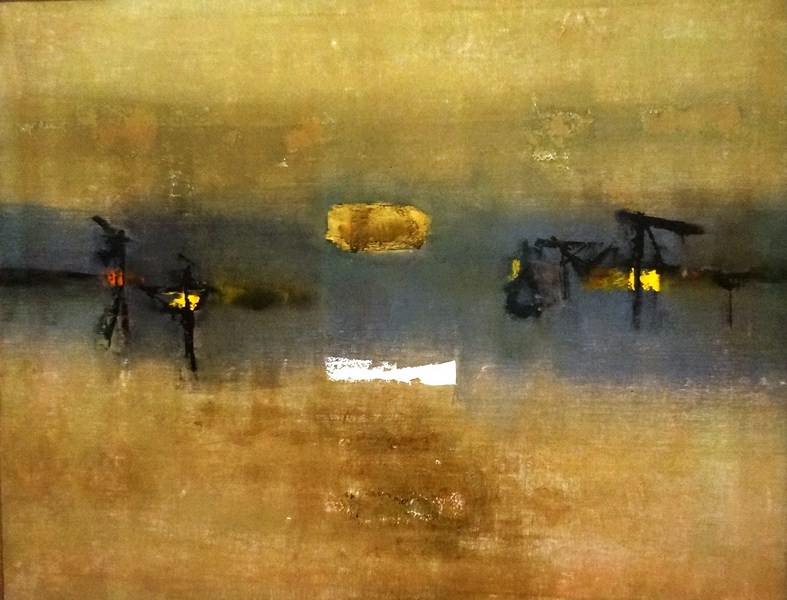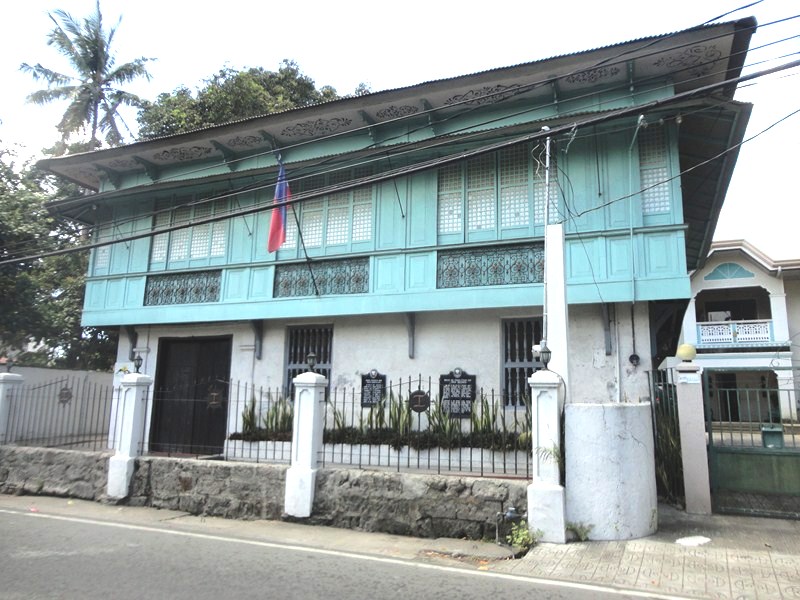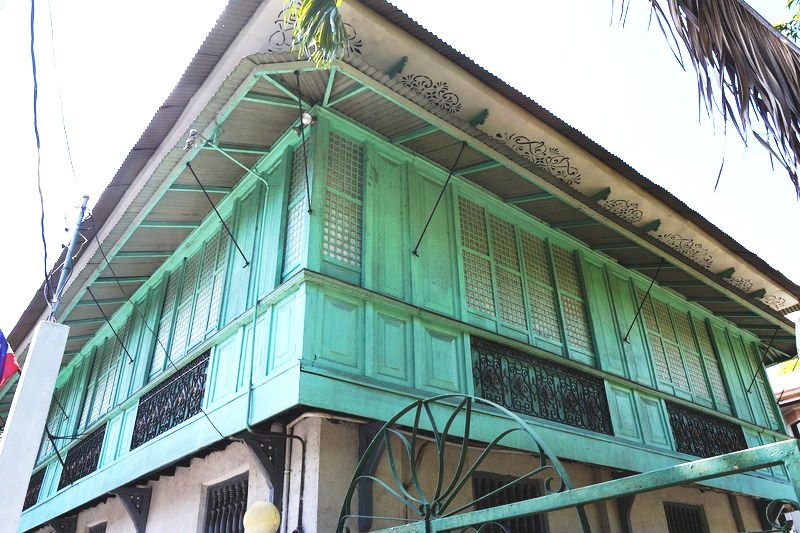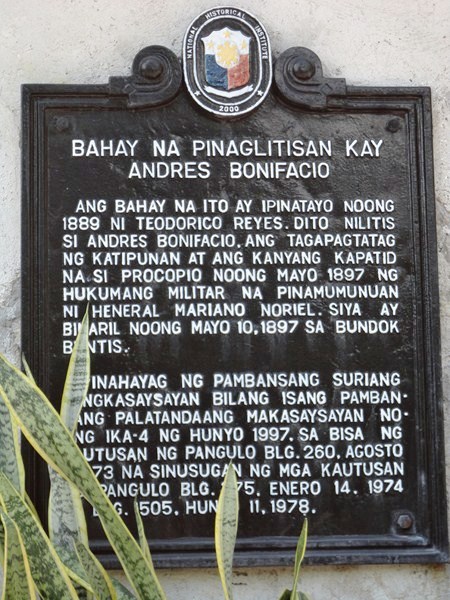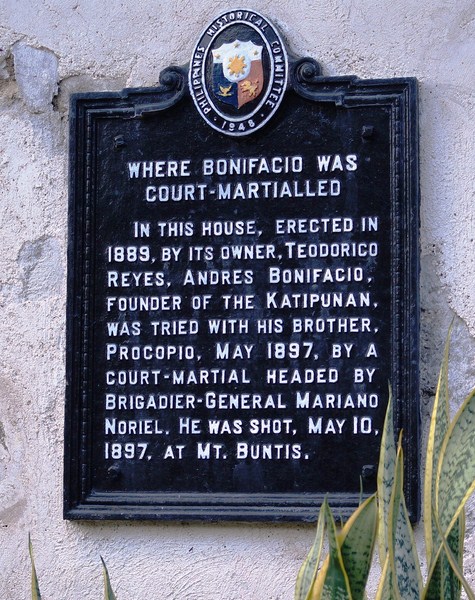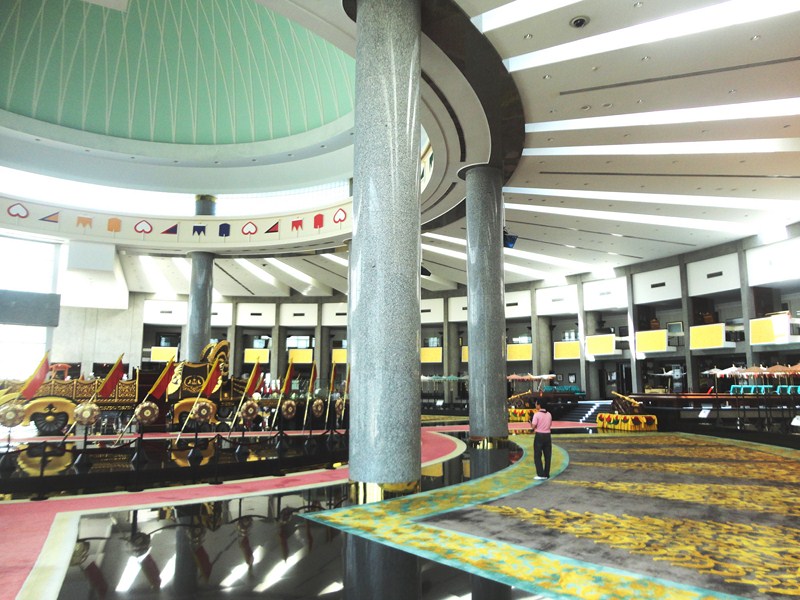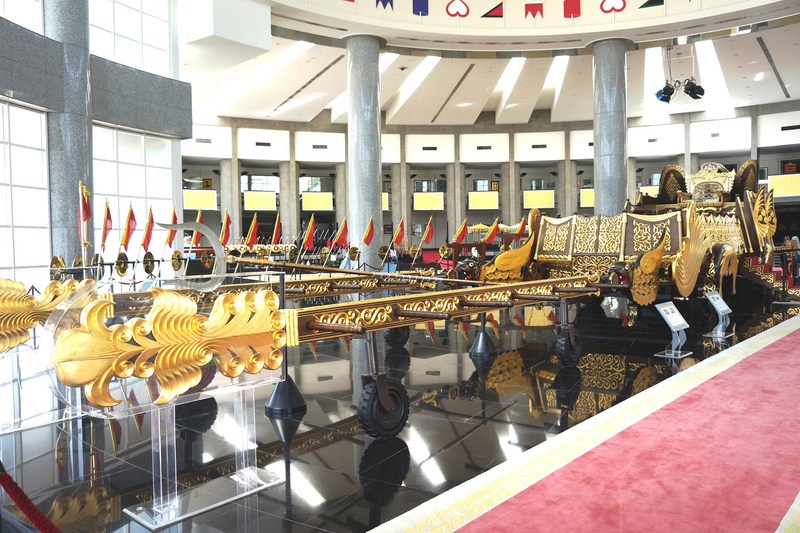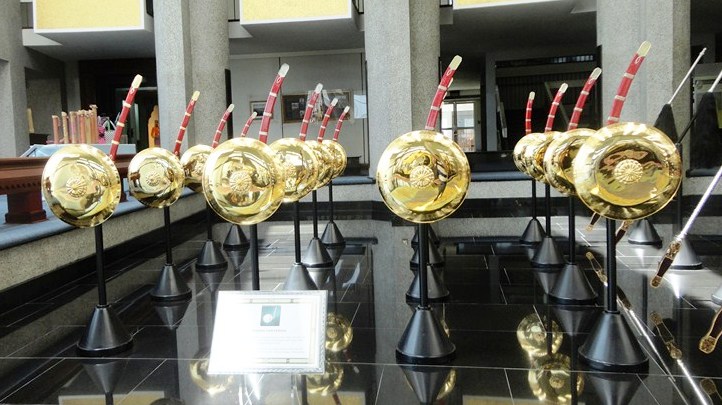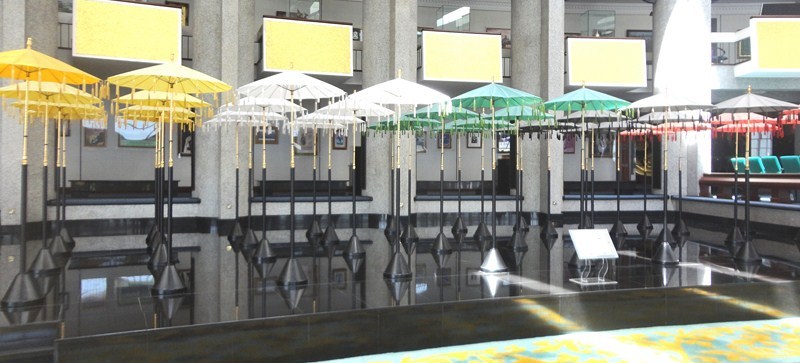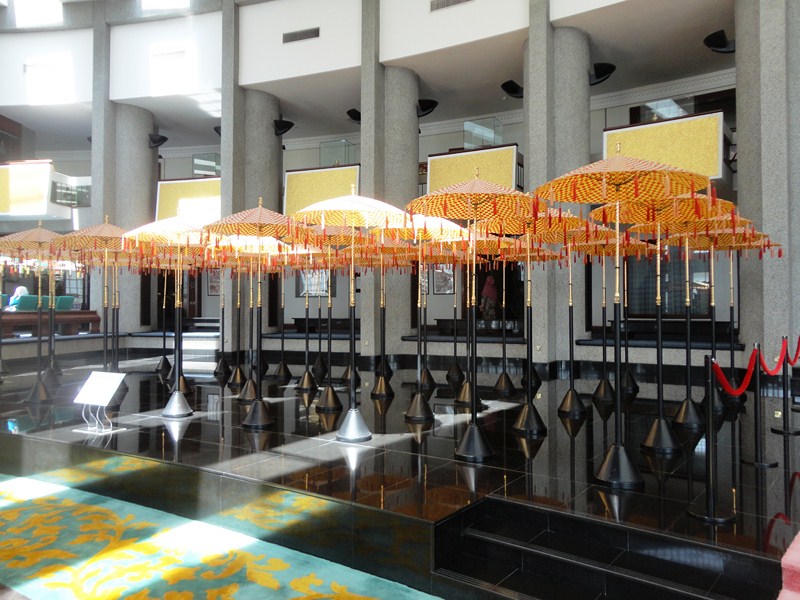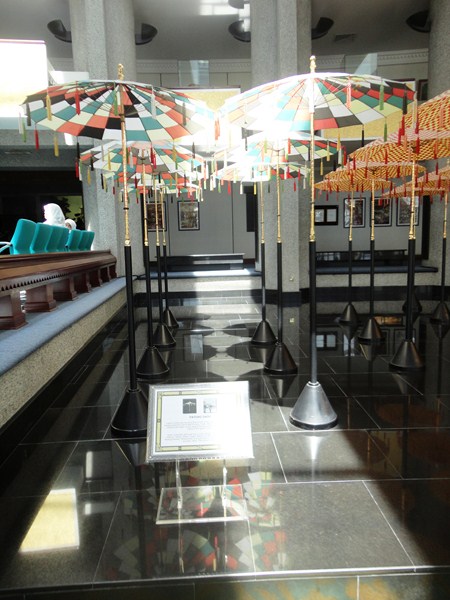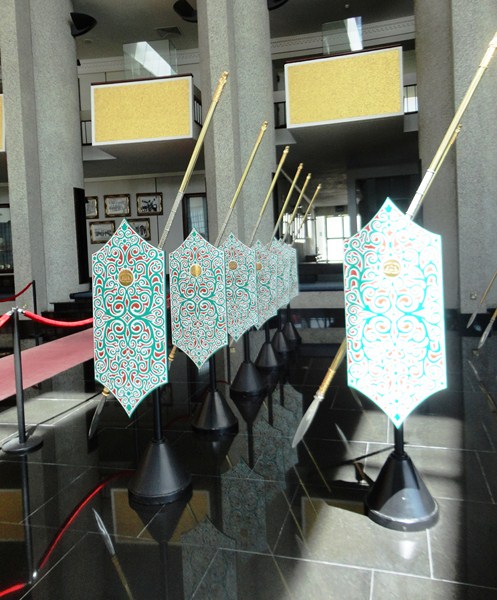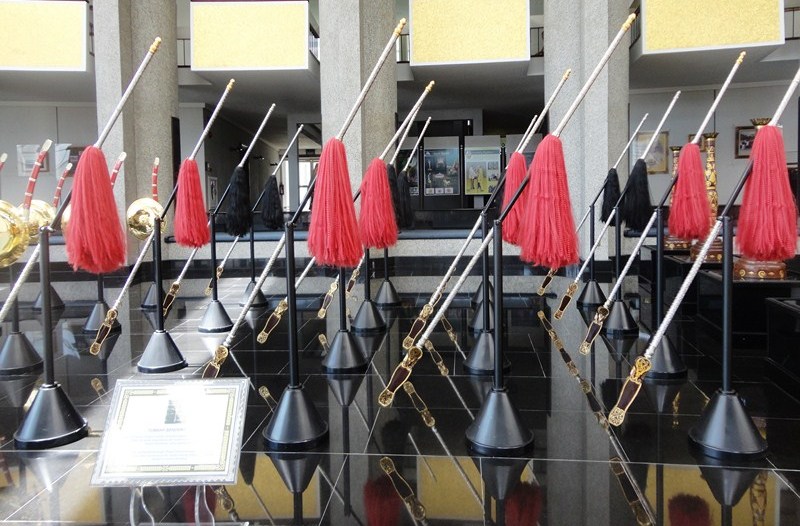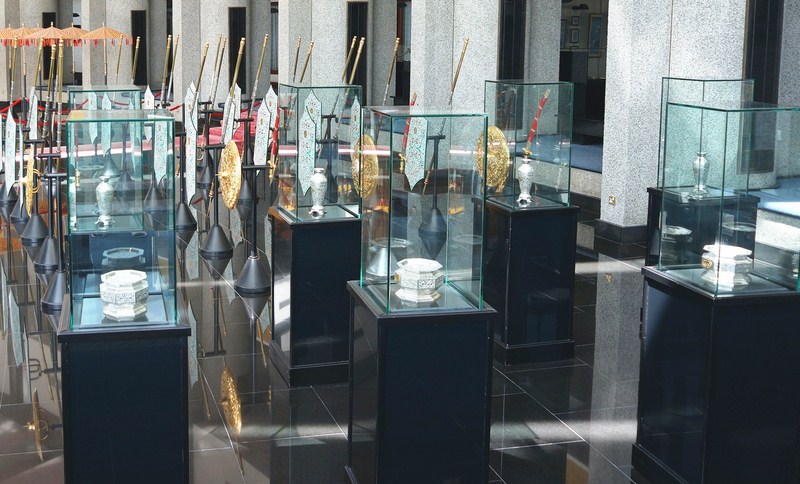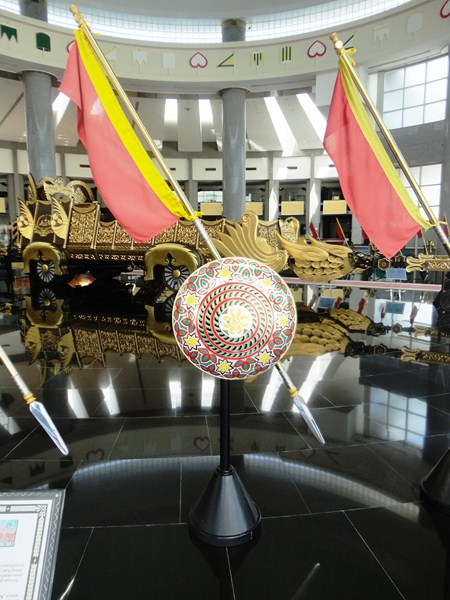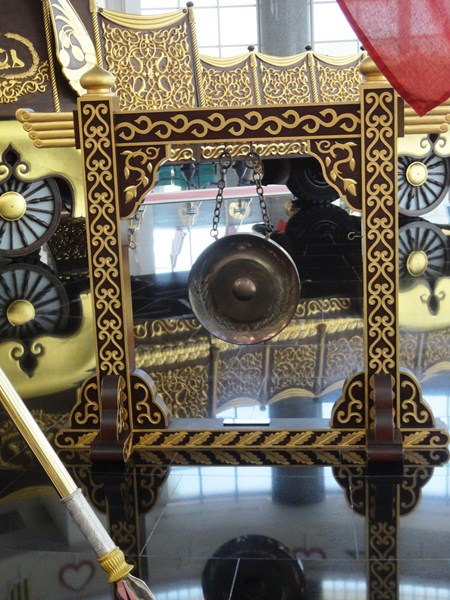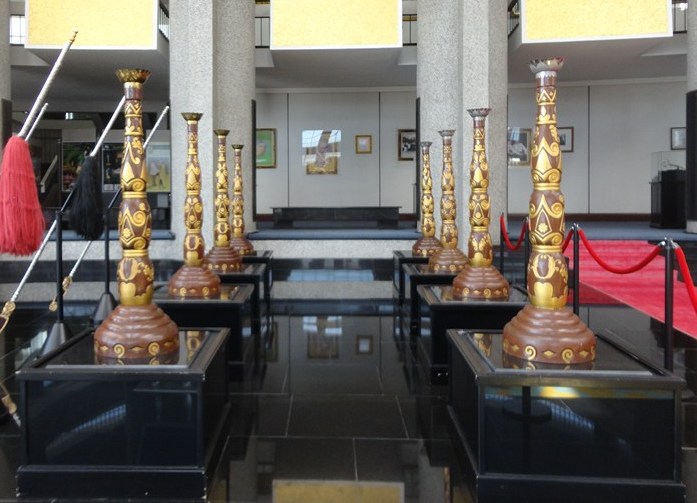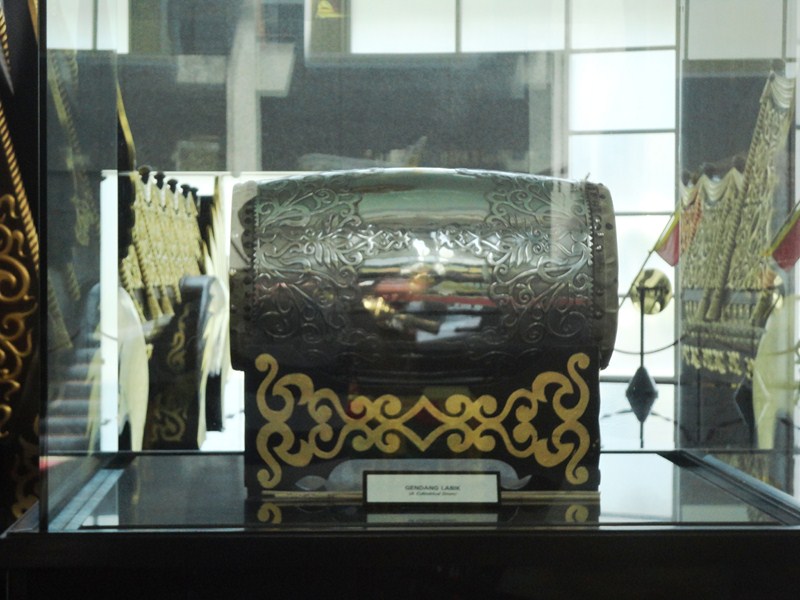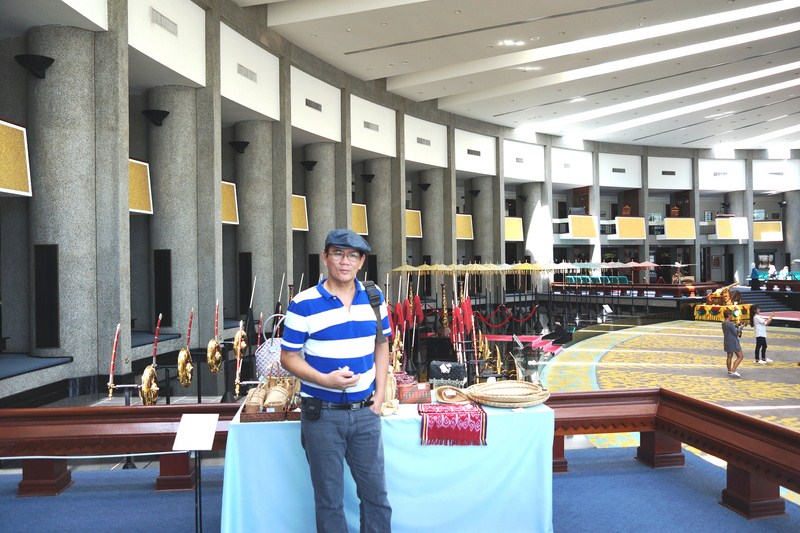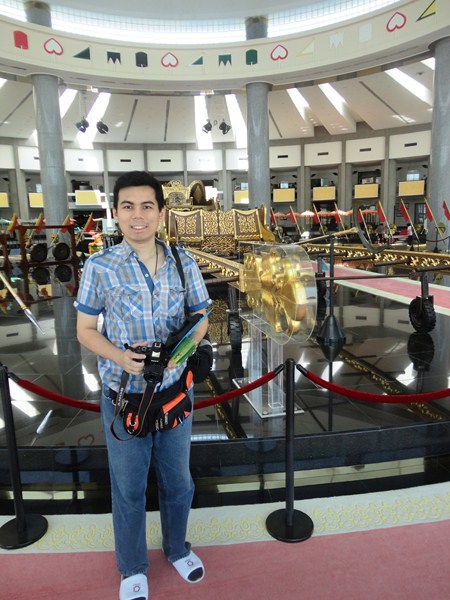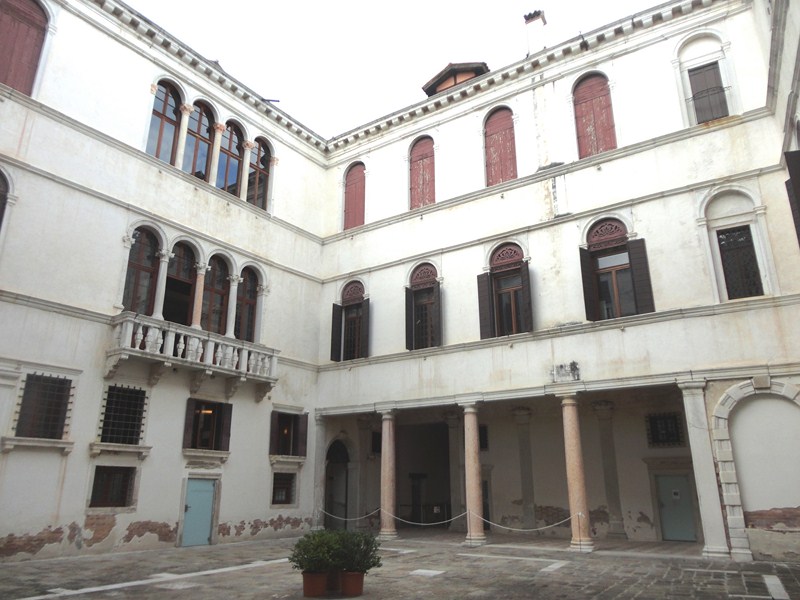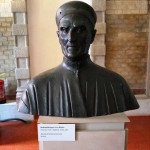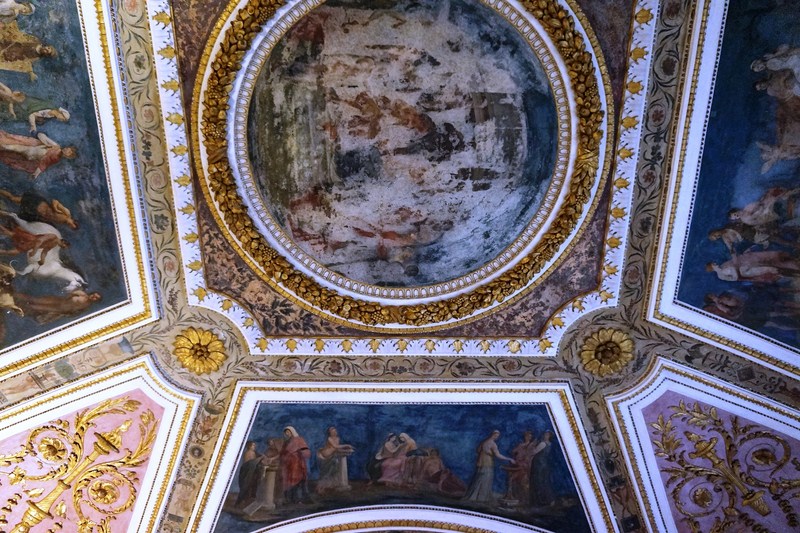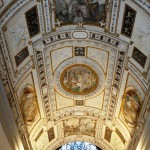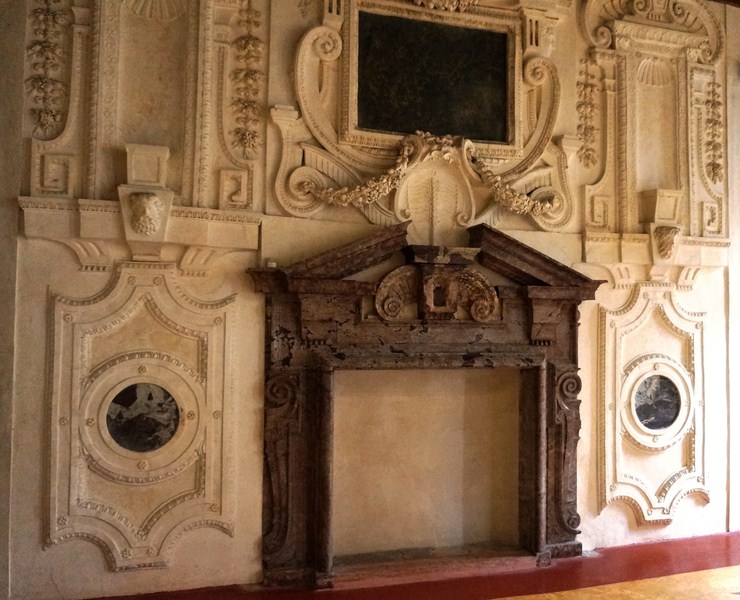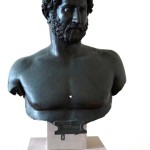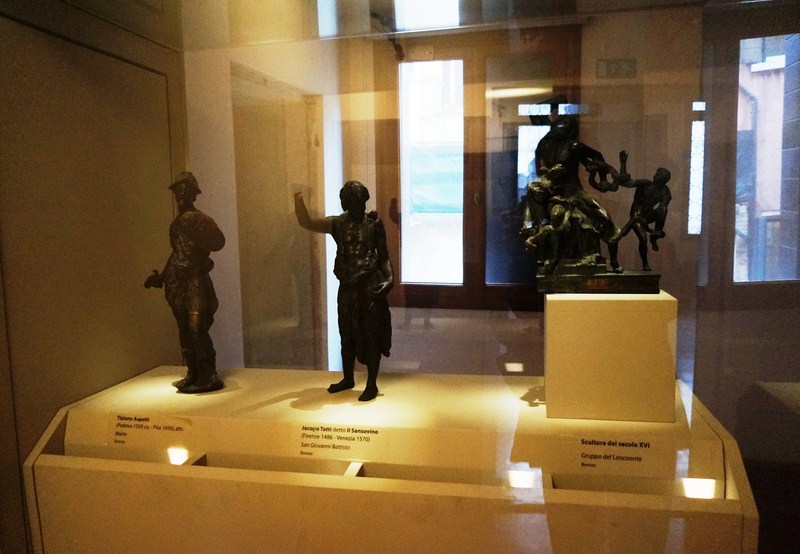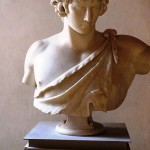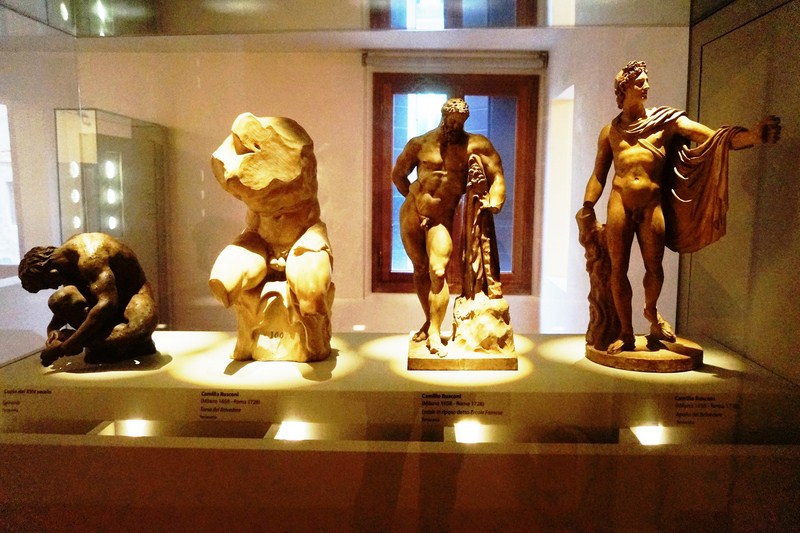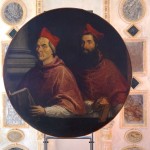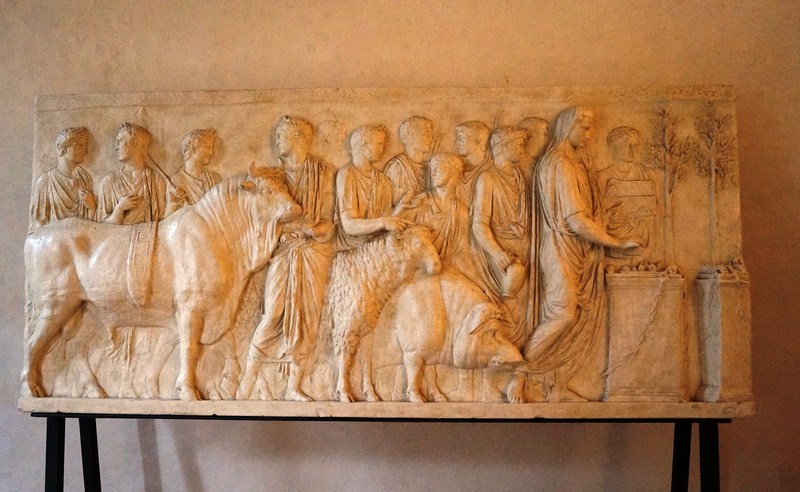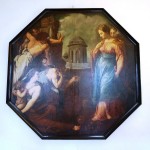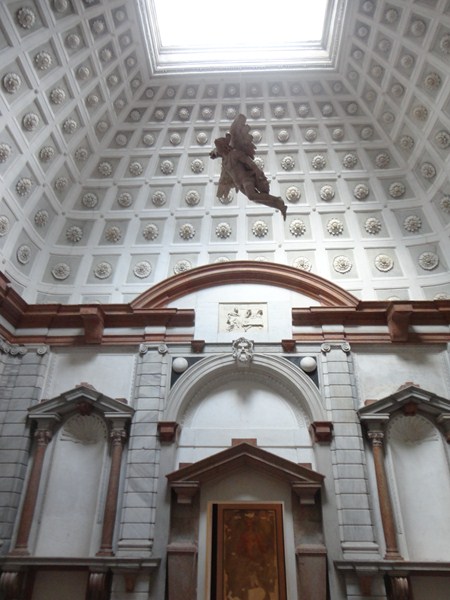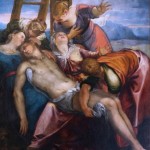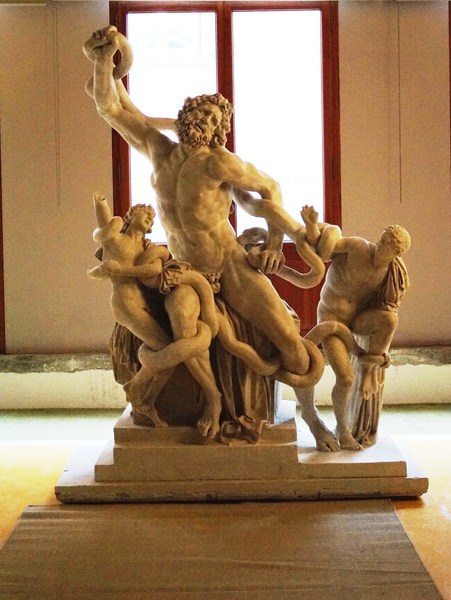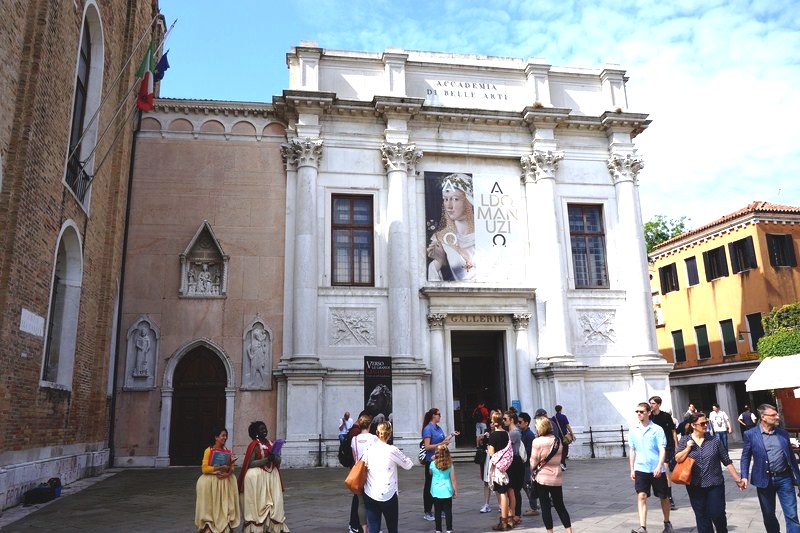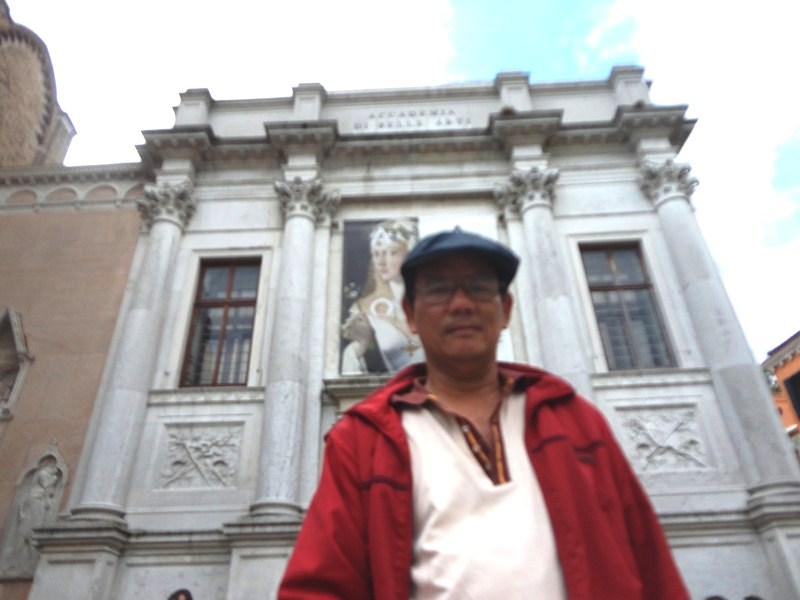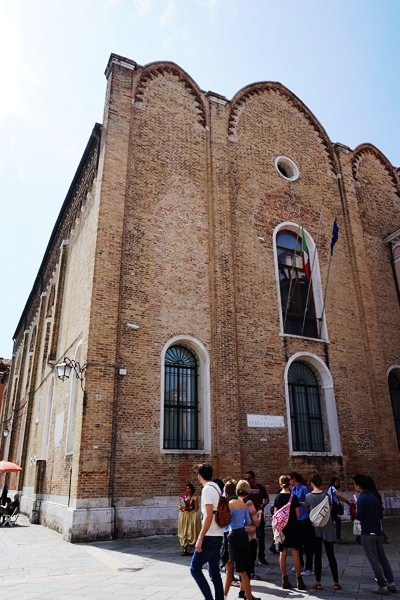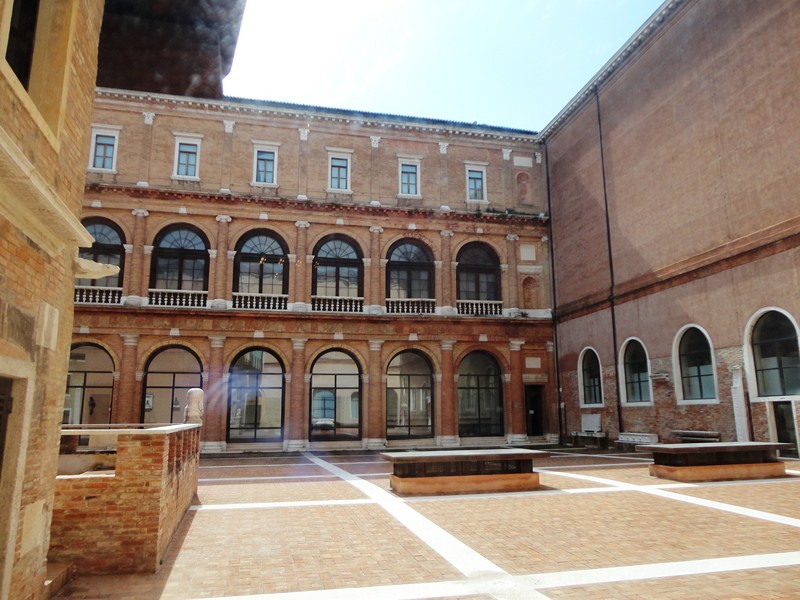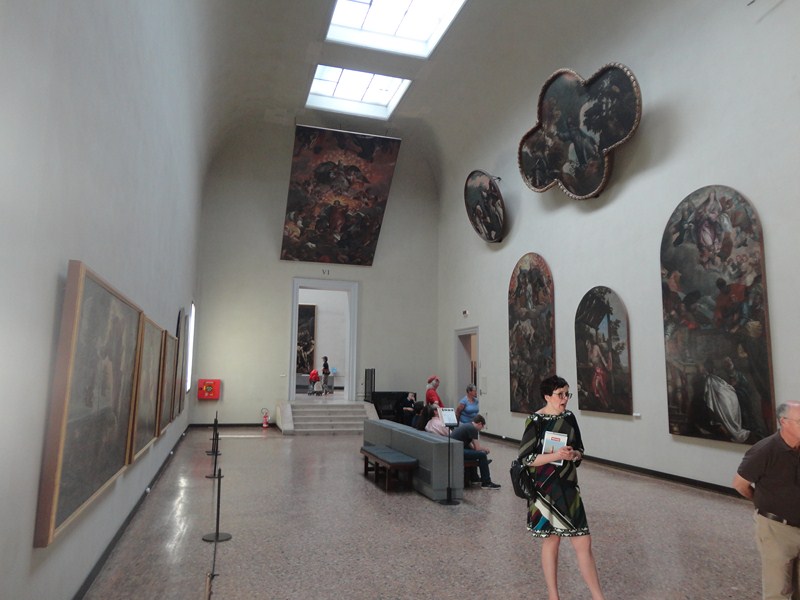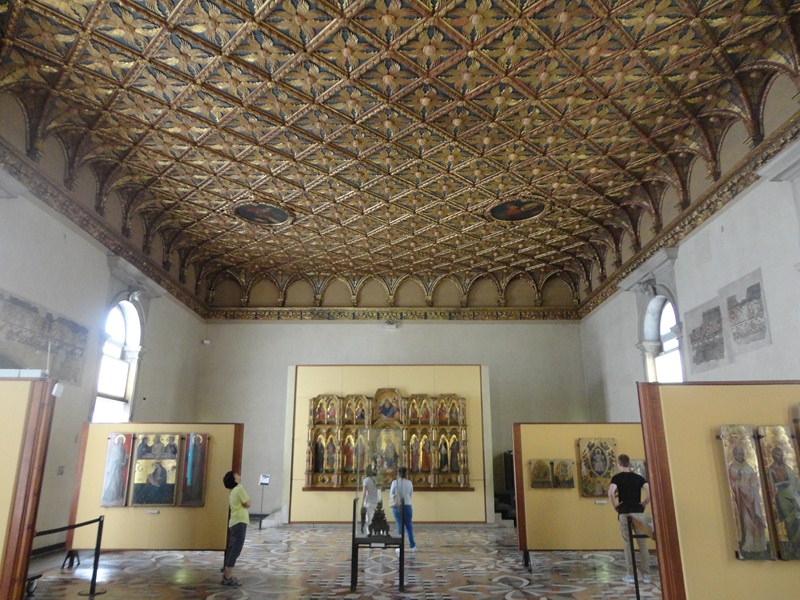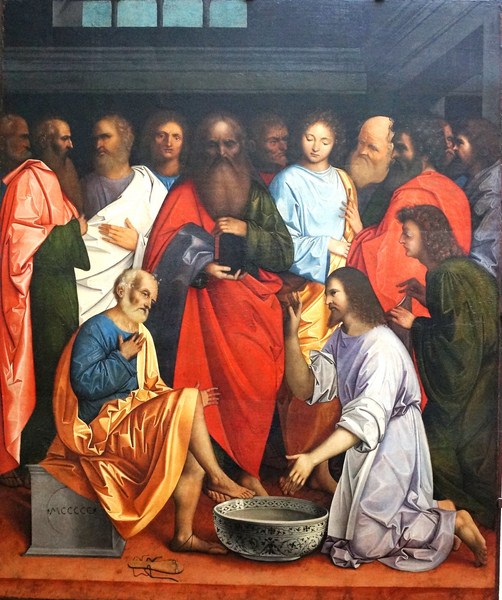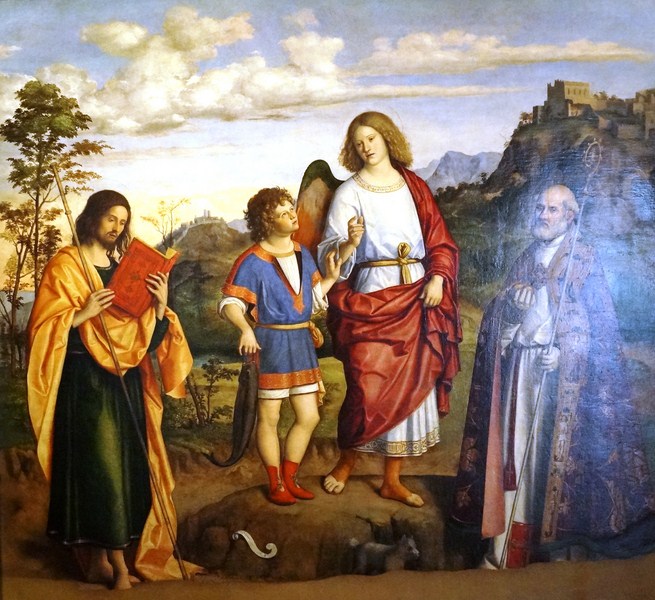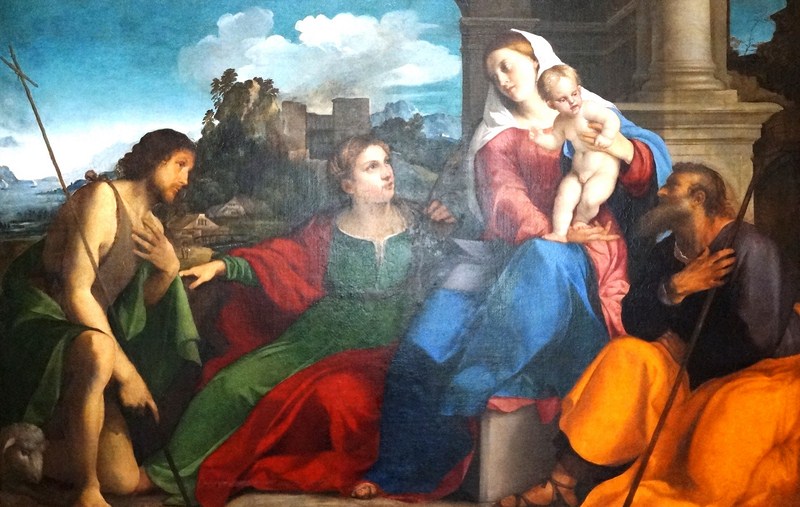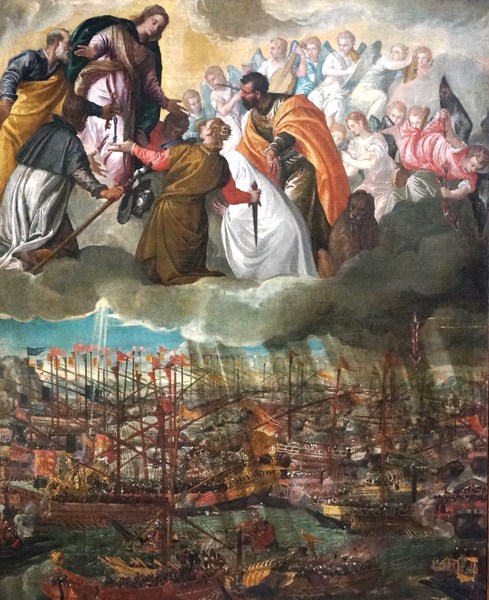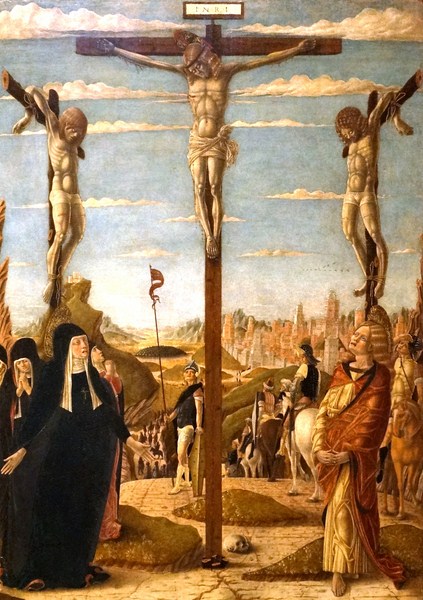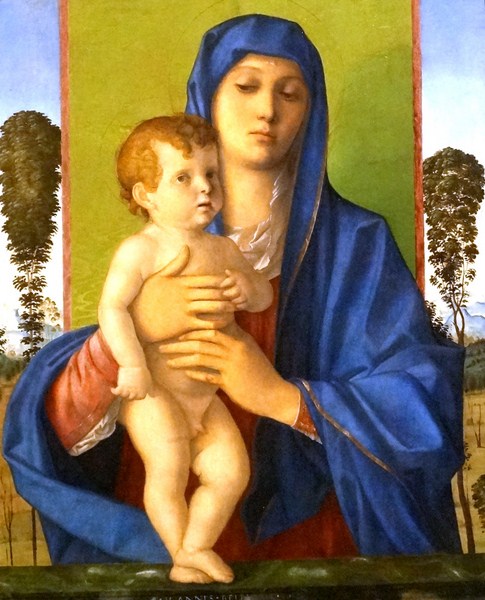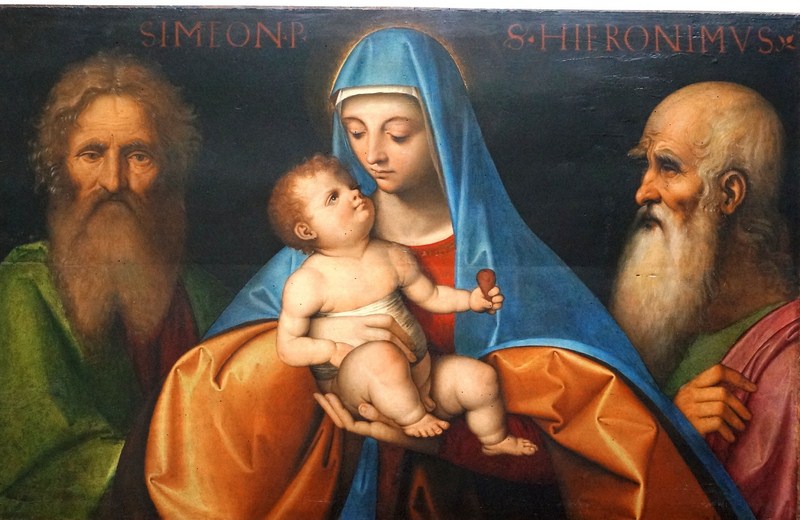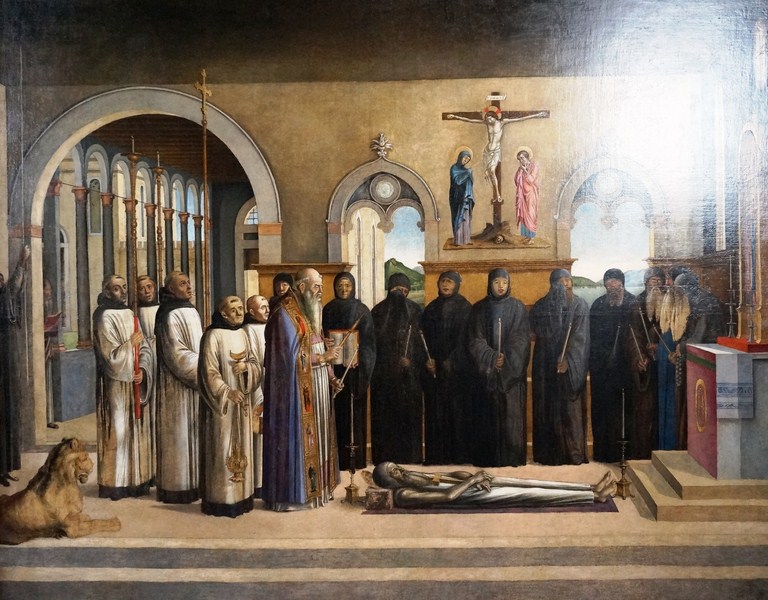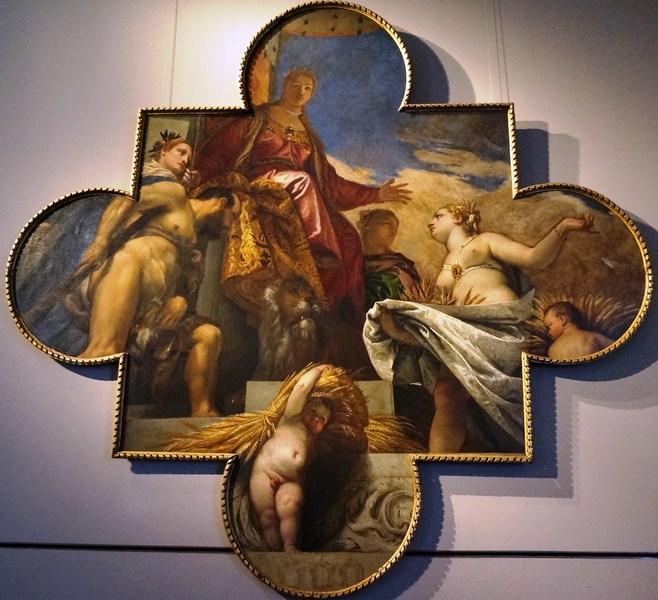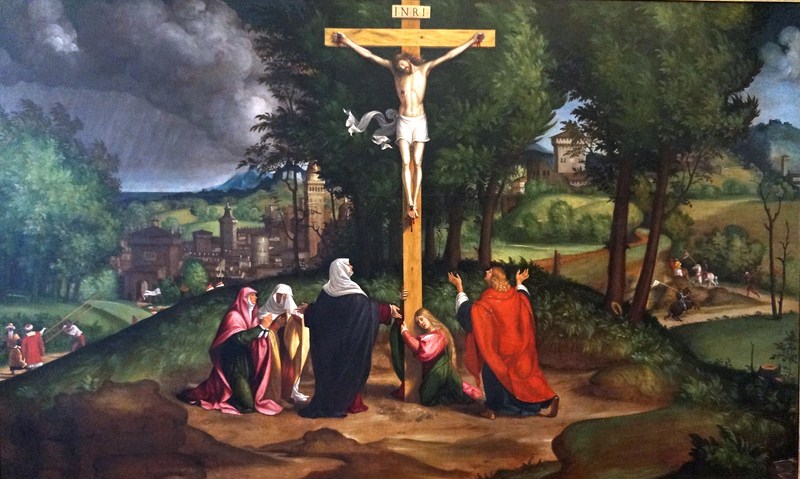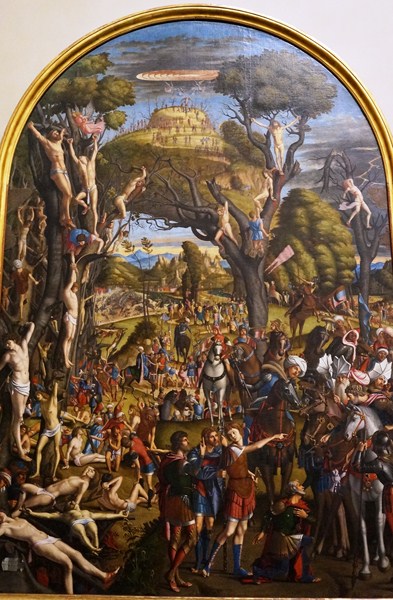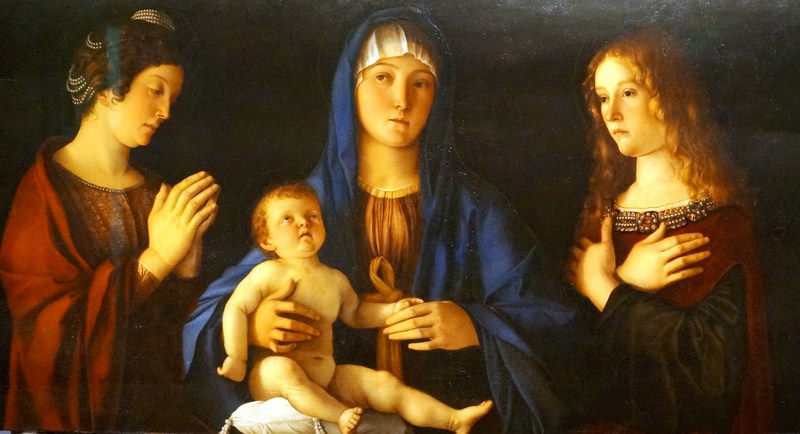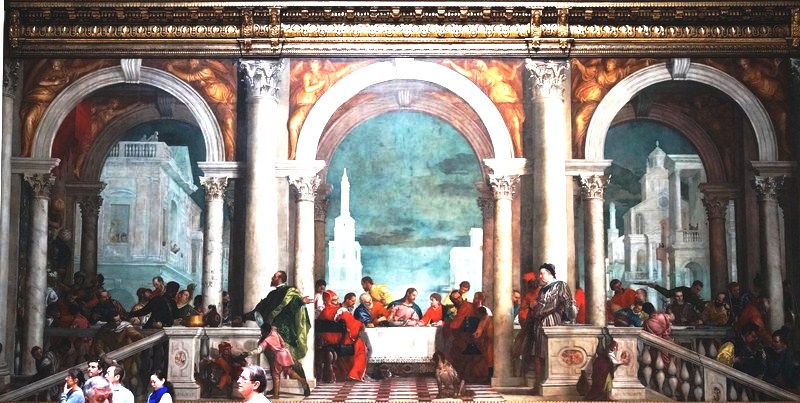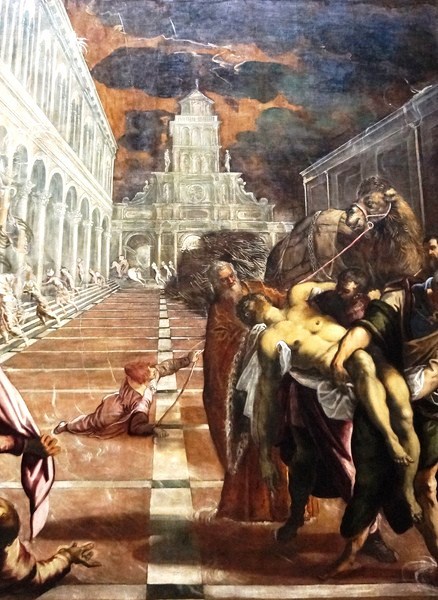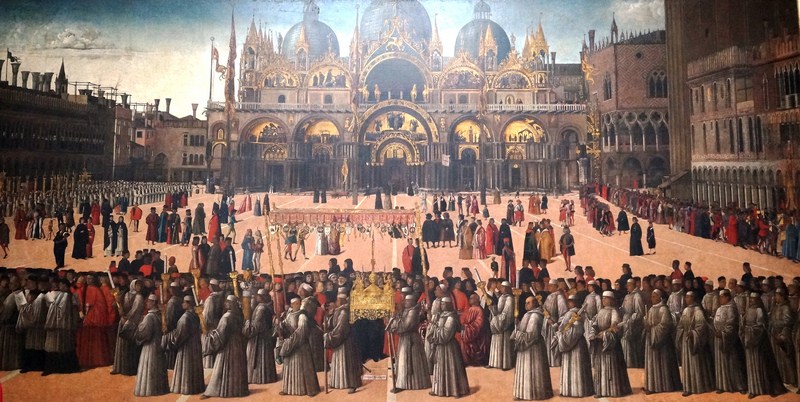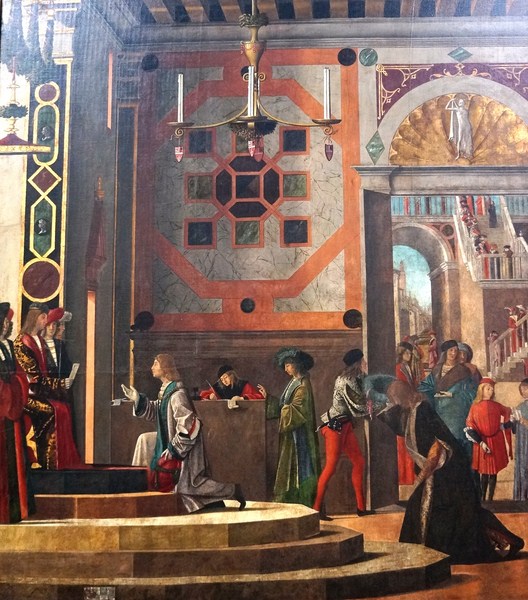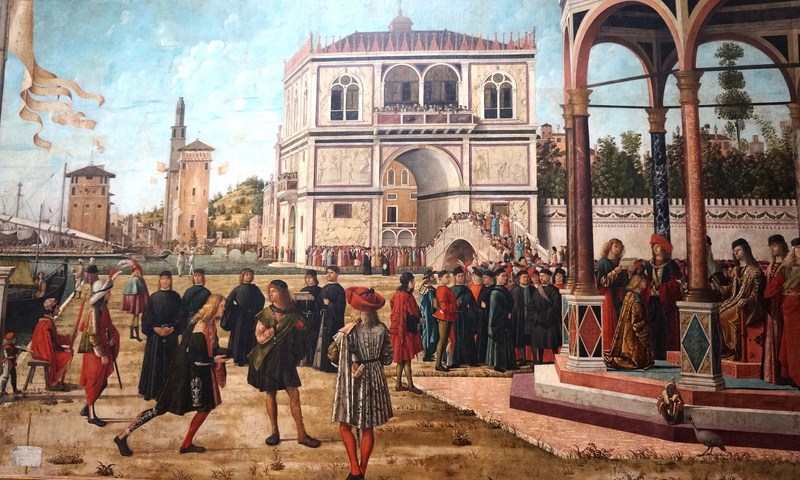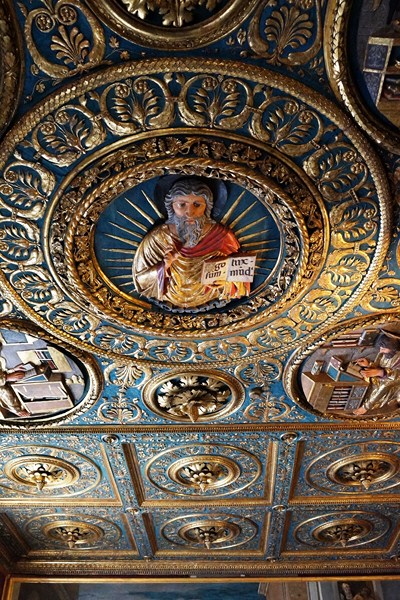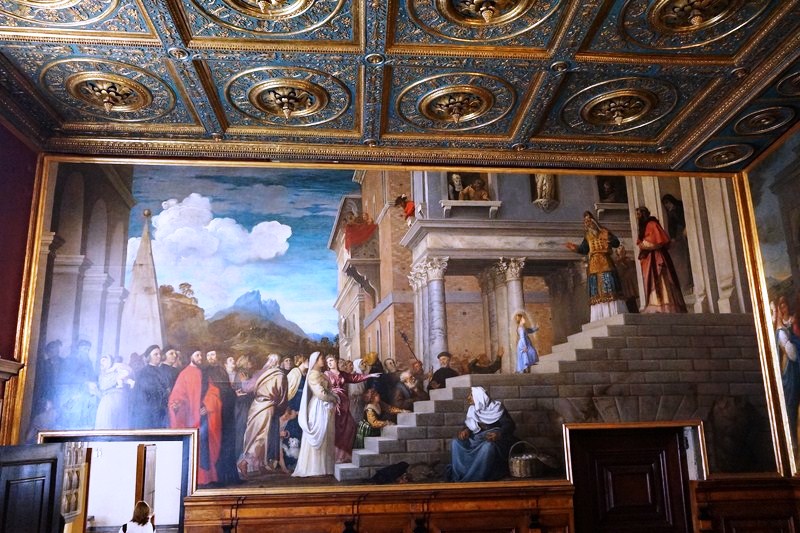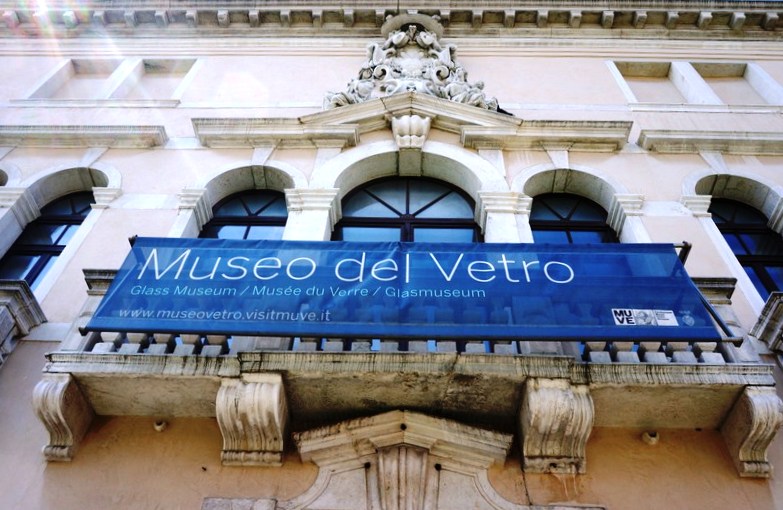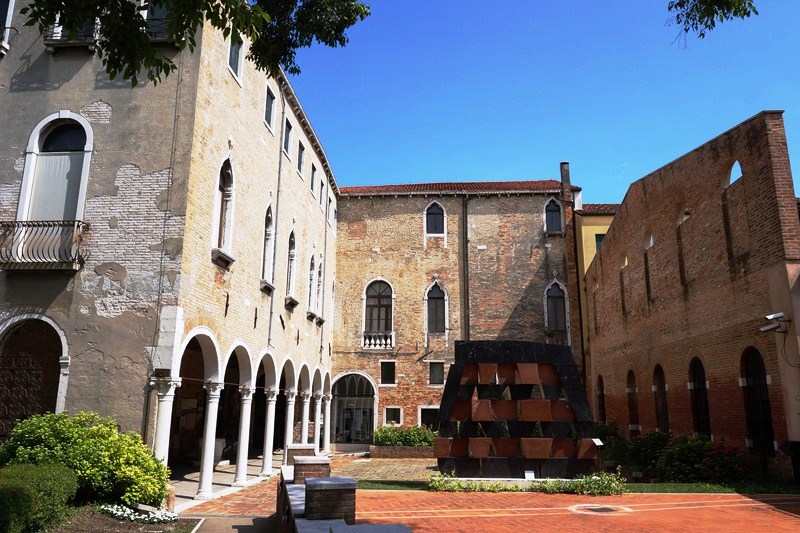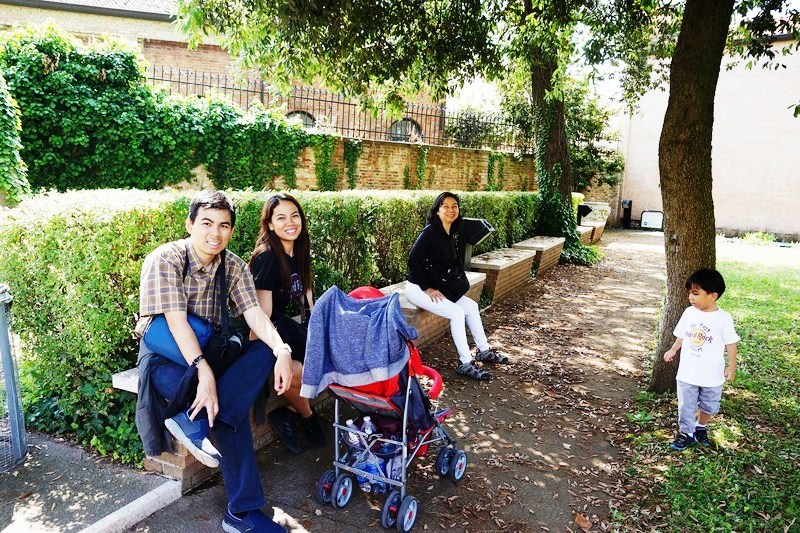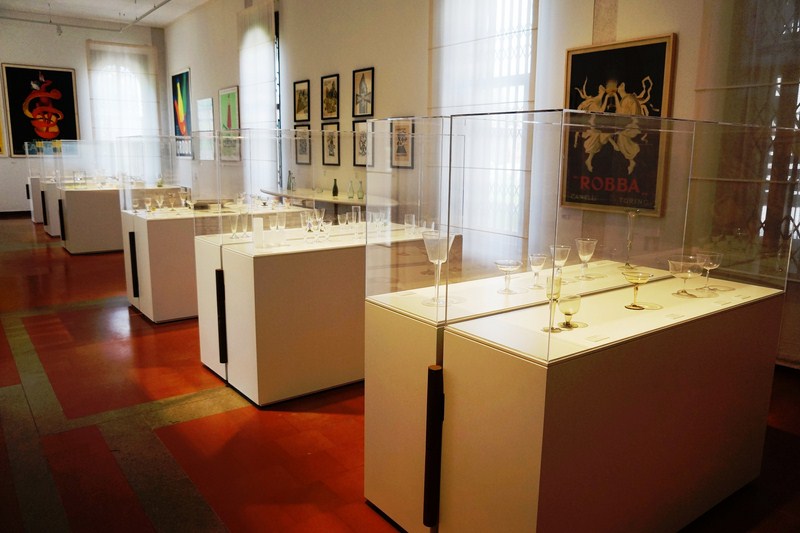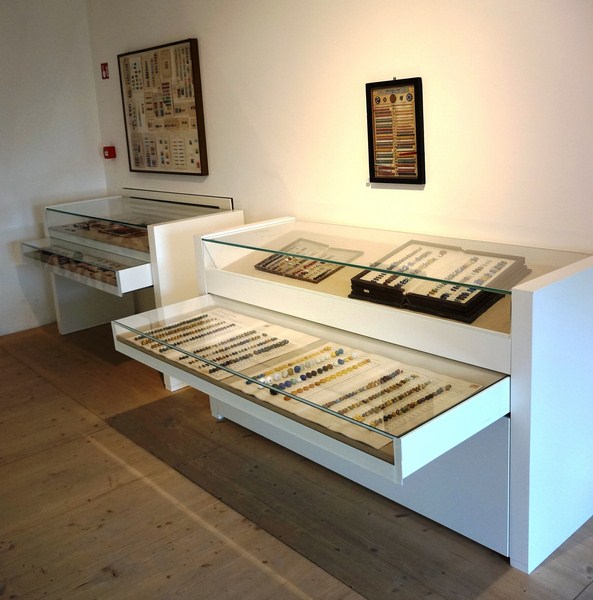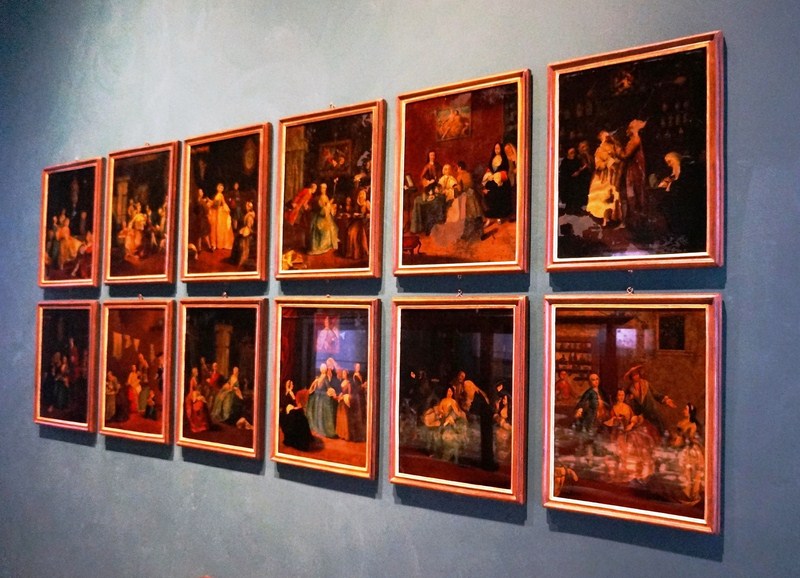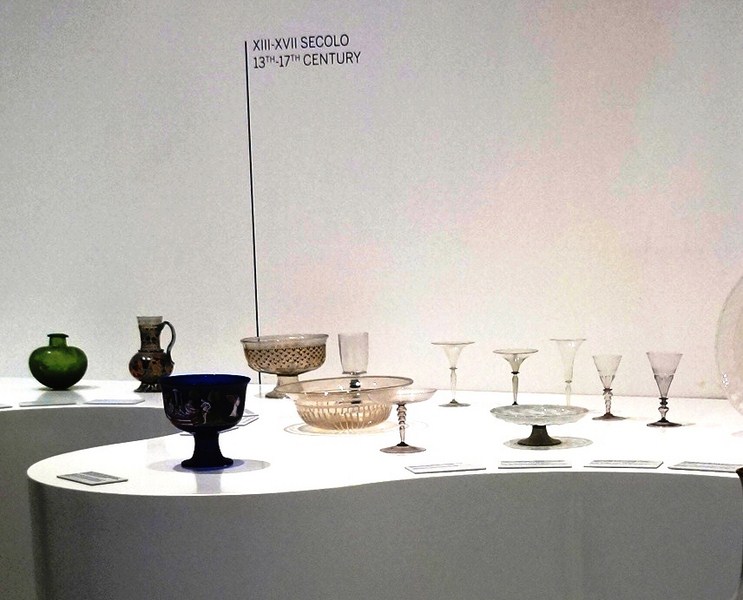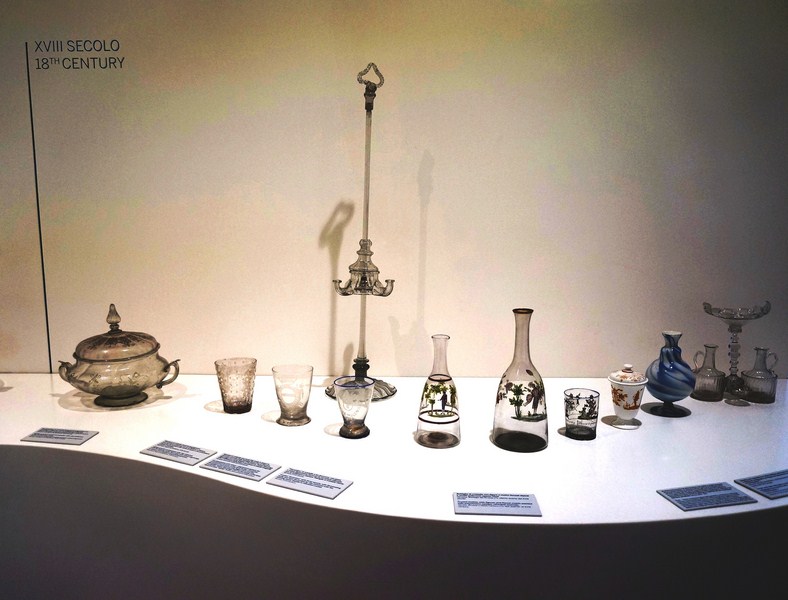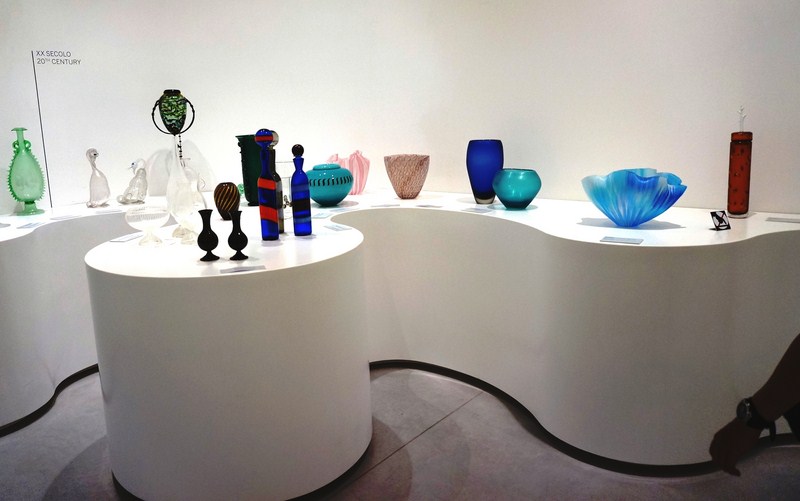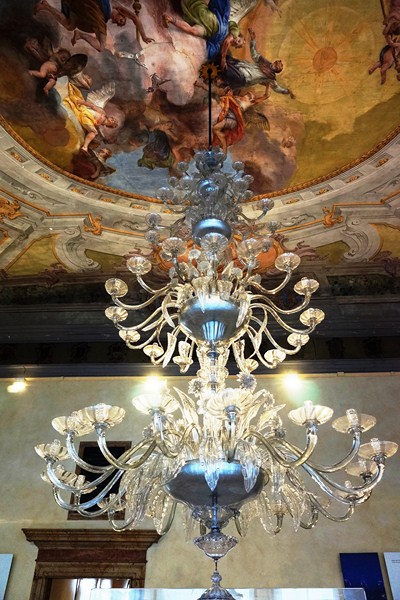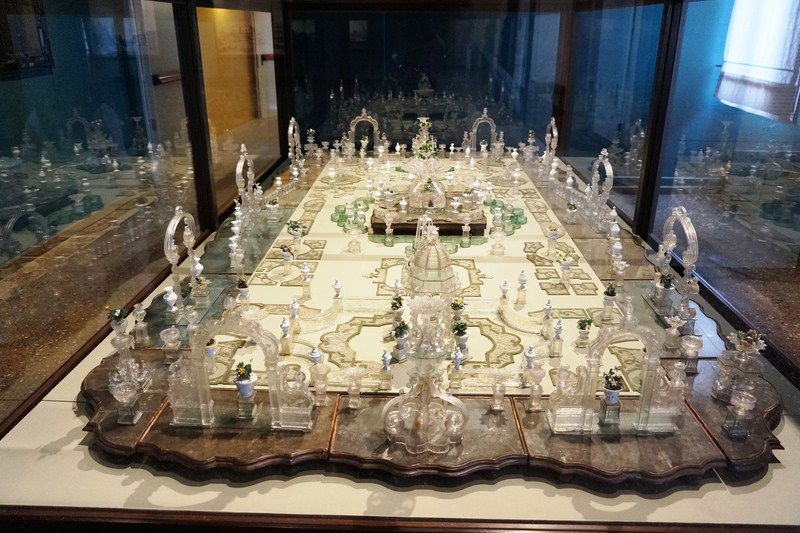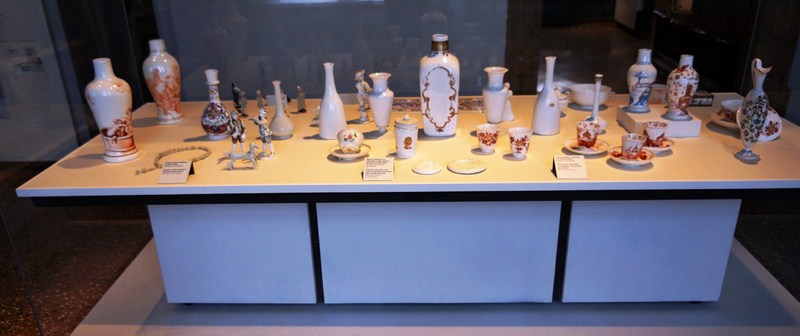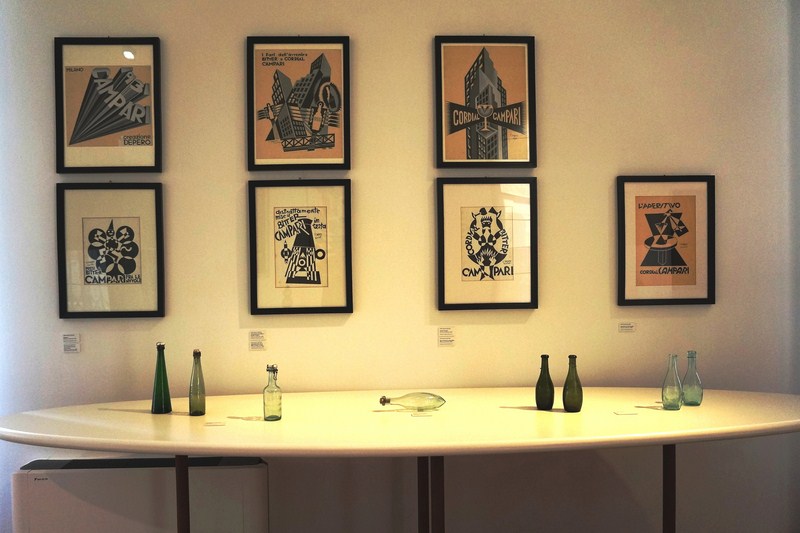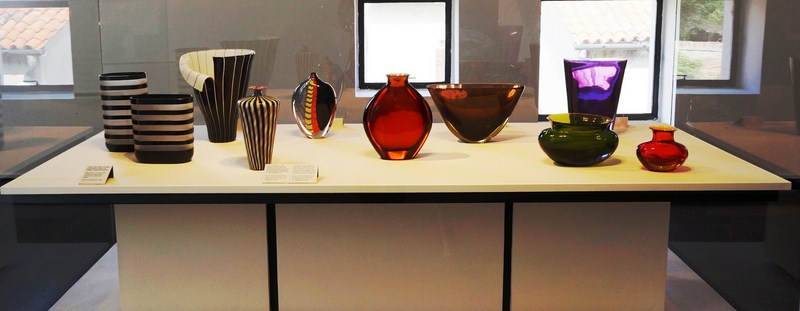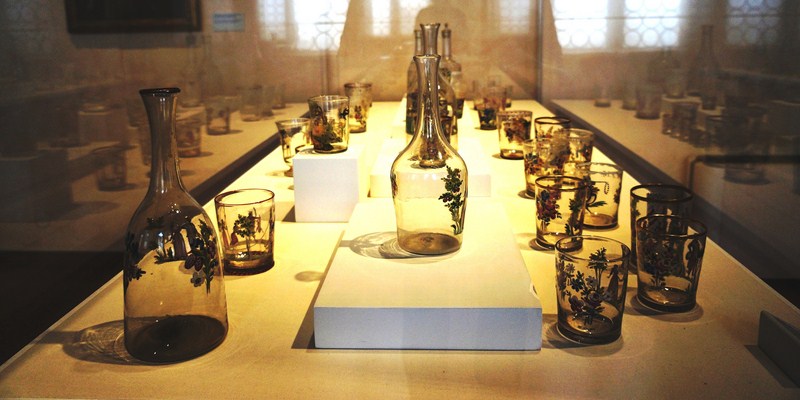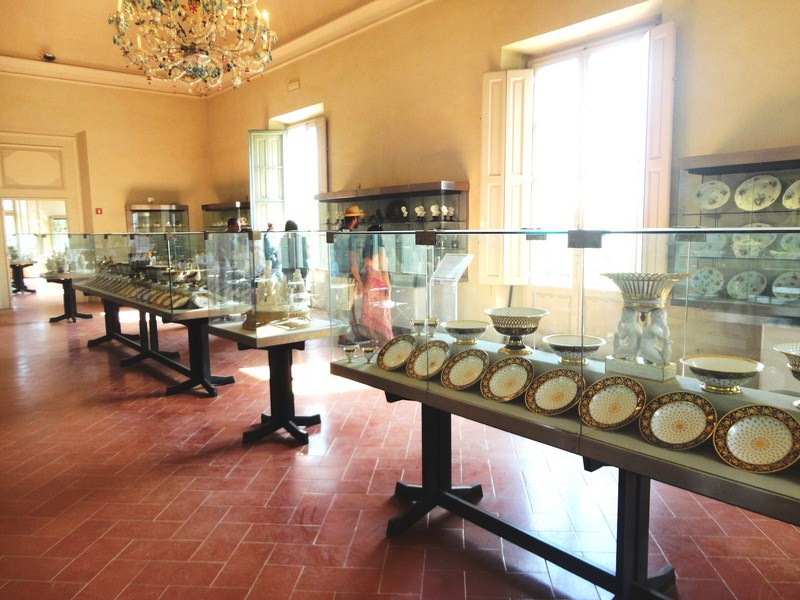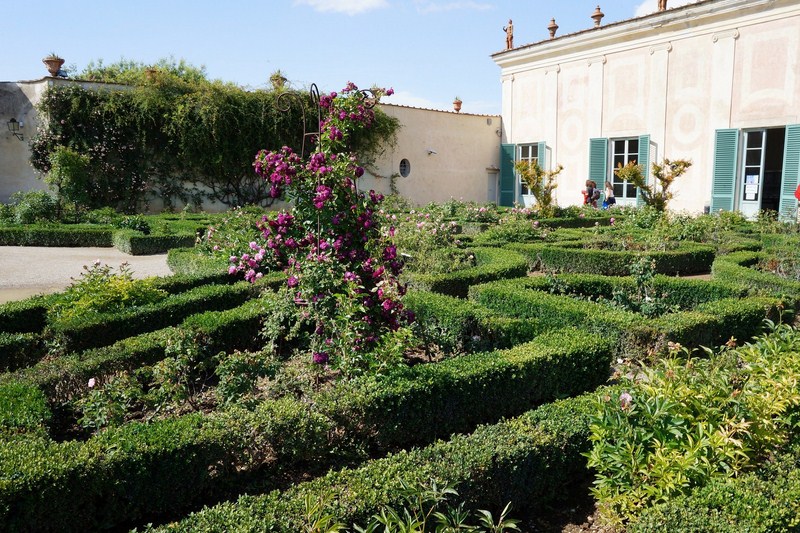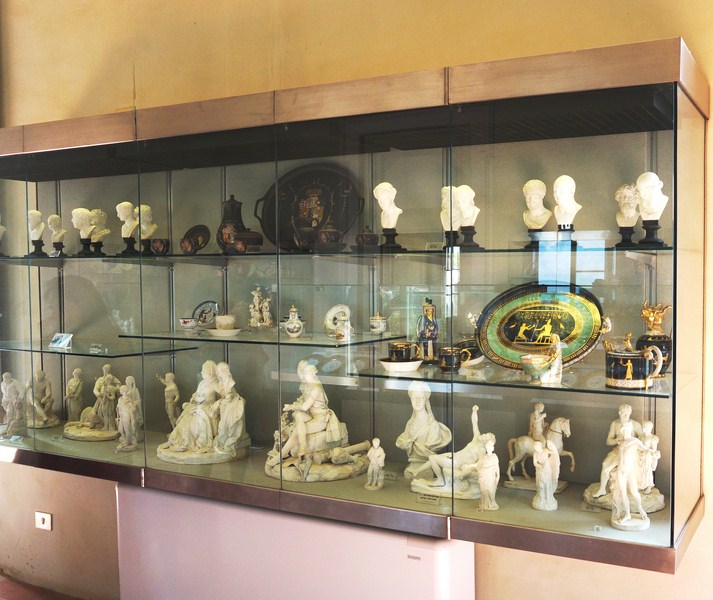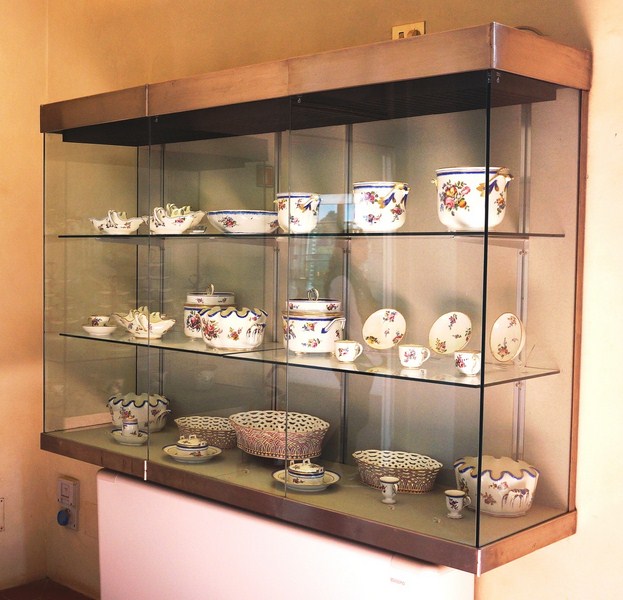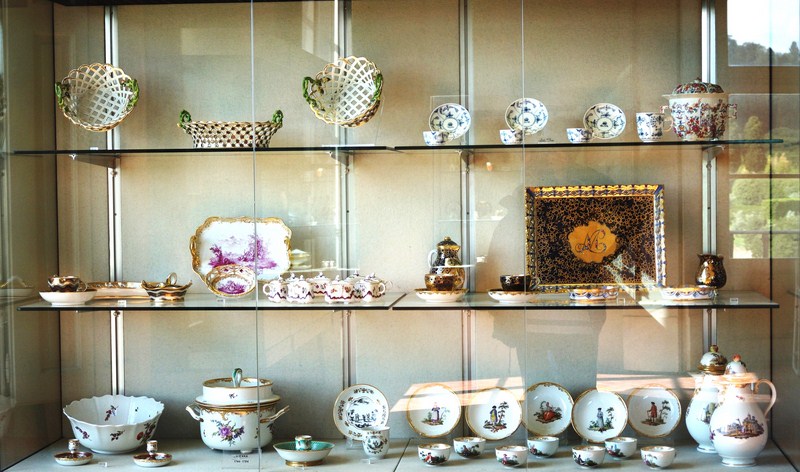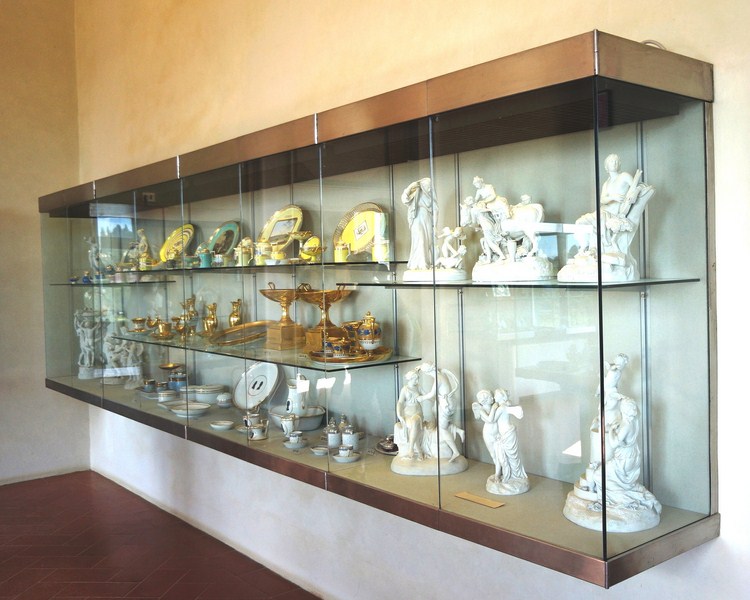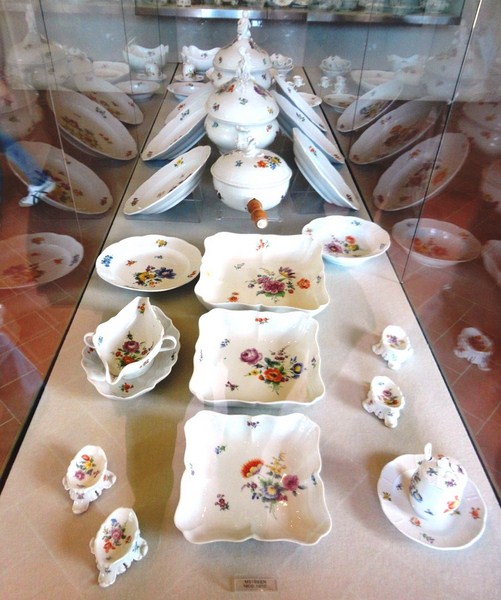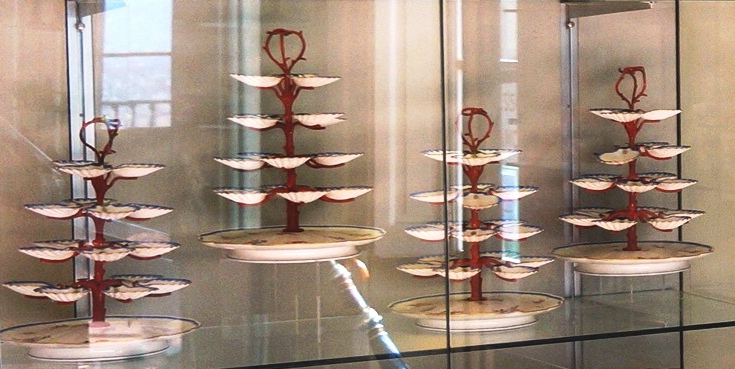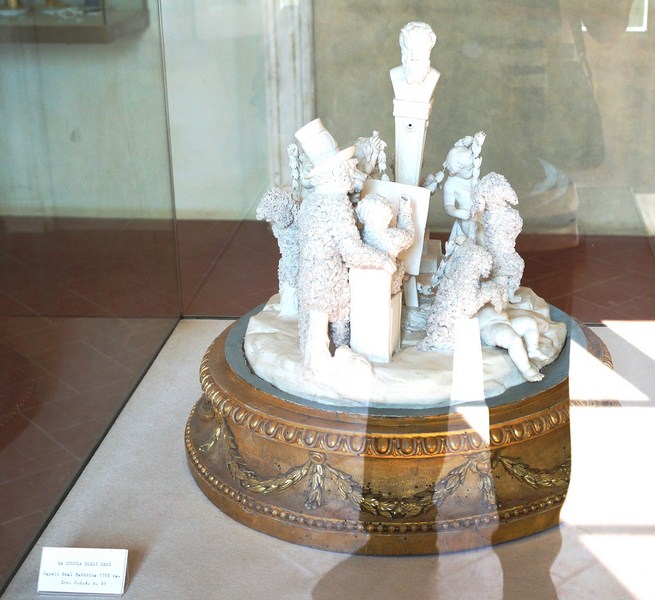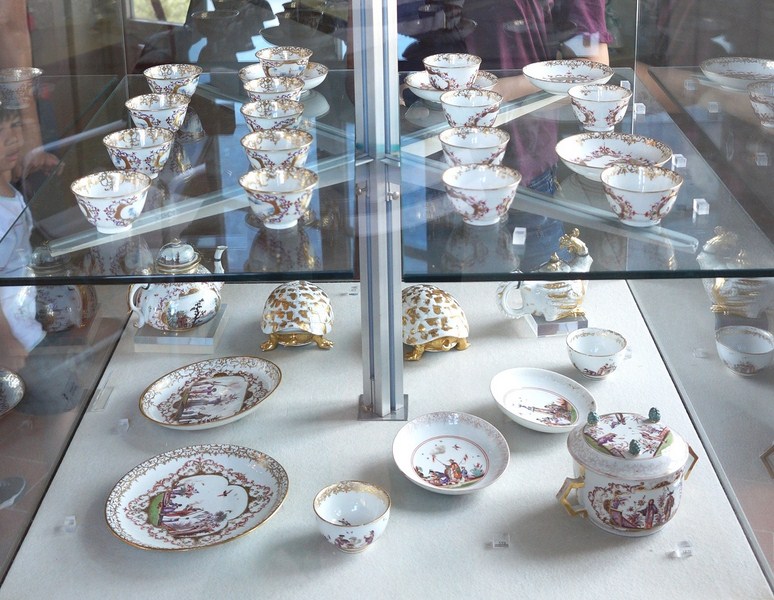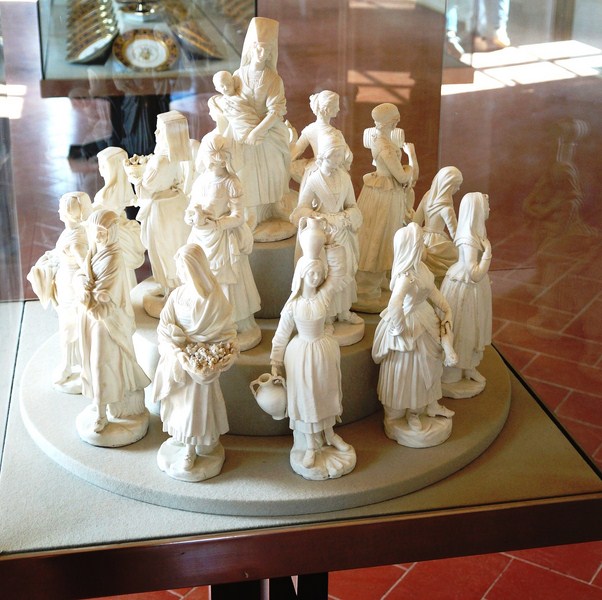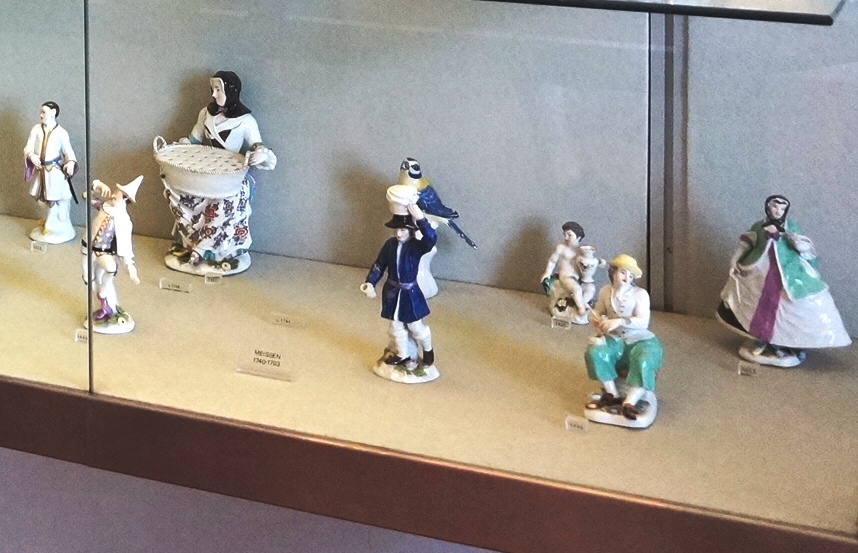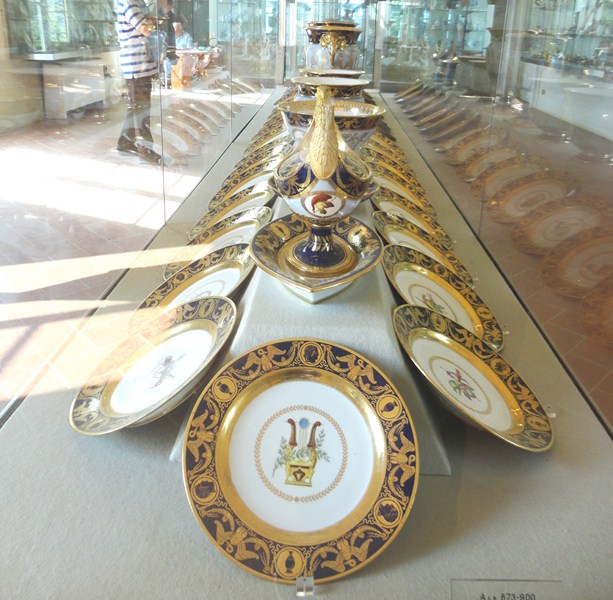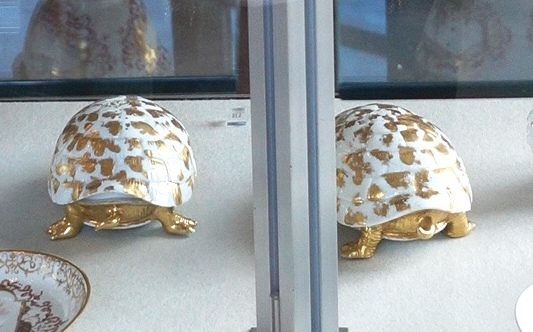The Metropolitan Museum of Art’s collection of Greek and Roman art, comprising more than 30,000 works, ranging in date from the Neolithic period (ca. 4500 B.C.) to the time of the Roman emperor Constantine‘s conversion to Christianity in A.D. 312, naturally concentrates on items from the historical regions of ancient Greece and the Roman Empire.
In 2007, the Greek and Roman galleries were expanded to approximately 6,000 m2 (60,000 sq. ft.), allowing the majority of the collection to be on permanent display.
It represents a wide range of cultures and artistic styles, from classic Greek black-figure and red-figure vases to carved Roman tunic pins. Dating back to the founding of the museum, the museum collection’s first accessioned object was, in fact, a Roman sarcophagus that is still currently on display.
The collection, among the most comprehensive in North America, includes the monumental Amathus sarcophagus; the “Monteleone chariot” (a magnificently detailed Etruscan chariot); several large classical wall paintings and reliefs from different periods (including an entire reconstructed bedroom from a noble villa in Boscoreale, excavated after its entombment by the eruption of Vesuvius in AD 79); as well as many pieces from far earlier than the Greek or Roman empires(among the most remarkable are an abstract; seemingly almost modern collection of early Cycladic sculptures from the mid-third millennium BC).
The collection of Greek and Roman art, representing the geographic regions of Greece (though not as delimited by modern political frontiers) and Italy (its geographical limits coinciding with the expansion of the Roman Empire), includes the art of prehistoric Greece (Helladic, Cycladic, and Minoan) ) as well as art from the Greek colonies (established around the Mediterranean basin and on the shores of the Black Sea) and the increasingly Hellenized Cyprus; and pre-Roman art of Italic peoples (notably the Etruscans).
The Metropolitan Museum of Art’s extensive collection of ancient Greek art, preeminent in the Western Hemisphere and among the finest in the world, feature masterpieces from the Archaic and Classical periods (sixth through fourth centuries B.C.). They are presented in seven large galleries, named after distinguished American collectors and philanthropists such as Mary and Michael Jaharis, Judy and Michael Steinhardt, Joyce and Dietrich von Bothmer and Malcolm Wiener, all refurbished to their original Neo-Classical grandeur.
All are arranged in a contextual display that combines works of many media. Objects in the New Greek Galleries embrace such themes as religion, funerary customs, civic life, and athletics.
The grand, barrel-vaulted Mary and Michael Jaharis Gallery (Greek Art of the Sixth through Fourth Centuries B.C.), formerly used for the display of Cypriot and Roman art, is a soaring, 140-ft.-long space flanked, on each side, by three galleries that present a chronological progression of works in all media of large-scale sculpture and other monumental works of the sixth, fifth, and fourth centuries B.C..
It extends south from The Robert and Renée Belfer Court for Early Greek Art all the way to the Sardis column.
The Museum’s distinguished collection of works of the sixth century, presented more or less chronologically and in close relationship to the art shown in the adjacent galleries, include large-scale sculpture, Panathenaic amphorae, large vases of conventional shape and decoration (once filled with olive oil and presented as prizes to victors in contests held during the Panathenaic festival, which honored Athena, patron goddess of Athens).
The large-scale marble copies, at the central section of the gallery, are among the finest sculptures that dominate this space. Made during the Roman period, these over-life-sized bronze statues, created in Greece during the fifth and fourth centuries (but lost or melted down over time), include a wounded Amazon and a statue of the Greek hero Protesilaus (the first Greek to set foot on the shore of Troy during the Trojan War).
Towering above two original, fourth century B.C. marble statues of draped women as well as an over-life-sized head of a youthful goddess, in an area devoted to the works of the fourth century B.C., are large marble foliate sculptures that once crowned tall Athenian grave monuments.
The Judy and Michael H. Steinhardt Gallery (Greek Art of the Sixth Century B.C.), three galleries on the east side of the Mary and Michael Jaharis Gallery, is unique in the Western Hemisphere in its display of the three major types of Greek freestanding marble sculpture of the sixth century B.C. – the kouros and kore, which served as funerary monuments or dedications, and the pillar-like grave stele.
The gallery is devoted primarily to original marble sculpture of the Archaic and Classical periods when Athens supplanted Corinth as the center of pottery production. It is exemplified by several works attributed to the Amasis Painter, one of the most skillful and innovative of the black-figure artists. The gallery opens this sequence with the museum’s outstanding collection of Athenian funerary monuments of the sixth century B.C.
The New York Kouros, a marble statue of a nude youth (kouros) standing in the center of the room, once marked the grave of a young member of a wealthy landowning family and is one of the earliest monumental kouroi to have survived complete.
Other grave markers, displayed nearby, include rectangular shafts decorated with finely carved and painted reliefs of the deceased. One of the best preserved archaic Attic Greek stelai in existence, standing over 13 ft. high, bears traces of most of its original painted decoration.
Free-standing and relief sculptures, monuments demonstrating the rapid development in naturalistic representation, includes one in particularly good state of preservation, complete with the crowning member in the form of a sphinx.
Also displayed throughout the room are vases, small bronzes and other objects of this period, are all grouped in a way that elucidates important customs and beliefs concerning death, warfare and drinking parties (known as symposia) which were current in Athens throughout the Archaic period.
The Bothmer Gallery I (Greek Art of the Sixth Century B.C.), through the museum’s exceptional collection of painted terracotta vases, provides an insight into the lives of Athenians of this time. The pieces in this gallery are arranged in a roughly chronological order – from ca. 600 B.C. to 525 B.C., covering the mature Archaic style in Athens and ending with a major historical development – the initial westward push of the Persian Empire (which ultimately was defeated by the Greeks in the Persian Wars).
Some vase painters were known from their signatures (such as Nearchos, Lydos, Exekias, among others) while others remain anonymous and are given modern names of convenience (such as the Affecter or Amasis Painter) which may stem from the name of a collaborator that is known (such as a potter); a significant location; a particular collector in modern times; or a feature of the artist’s style.
Whether their ancient names are known or not, the potters and painters revealed distinctive artistic personalities and a singular capacity to depict a story. Decoration included all manner of scenes from daily life as well as from the colorful and complex world of mythology.
In the black-figure technique, practiced from about 600 to 530 B.C., glazed portions of a work were black and the remaining surface was the deep orange color of the clay. Exekias, among the known leading artistic personalities represented in this gallery, was the consummate master of this technique. During the time of the initial westward push of the Persian Empire, the red-figure technique in vase painting was invented and, gradually, began to replace the earlier black-figure technique.
The Robert and Renée Belfer Court (Prehistoric and Early Greek Art), next to the Great Hall on the first floor, provides the introduction to all the galleries of ancient Greek and Roman art and includes a map of the ancient world.
It displays prehistoric and early Greek art as well as, from time to time, rotating major artworks on loan of varying periods.
The Bothmer Gallery II (Greek Art of the Fifth Century B.C.), providing examples of Athenian vase painting between about 530 and 400 B.C. (when the flexibility of the newly developed red-figure technique permitted artists to draw freely over the convex and concave surfaces of vases), displays vases (a high proportion were made for containing, pouring, and drinking wine), bronzes, terracottas, and gems of this period. Original works of art from a time when the great creations of bronze and marble sculpture are, in large part, lost or preserved only in later copies of the Roman period, these are particularly important.
Coinage on display here, significant not only for its historical and commercial aspects but also for its iconographical and aesthetic qualities, represents specific cities (the head of Athena for Athens or Pegasus, the flying horse, for Corinth, etc.) and is also recurrent motifs in other media. In this gallery, the museum’s collections of coins were supplemented by a loan, from the American Numismatic Society, of approximately 75 significant coins.
Figuring prominently in this gallery are an extraordinary group of Greek potters and vase painters active in Athens who mastered, during the first half of the fifth century, the organic representation of the human body.
They include Euphronios and Euthymides (innovators who exploited the expressive possibilities of the red-figure technique at the end of the sixth and the beginning of the fifth century B.C.) as well as their successors (who often specialized in specific vessel shapes) Brygos Painter, Douris and Makron, who devoted themselves to the embellishment of drinking cups, and Kleophrades Painter, the Berlin Painter, Myson, and others who devoted themselves to larger pots. For the first time in many years, the current reinstallation makes it possible to see the major works of the foremost painters grouped together.
During this time, white-ground vases found particular favor. The most popular vases in the collection are superlative examples by the Achilles Painter as well as a toilet box (pyxis), decorated with the Judgment of Paris, and a bobbin (yo yo), that was made as a dedication, both attributed to the Penthesilea Painter.
The Carolyn, Kate, Elizabeth, Thomas, and Jonathan Wiener Gallery (Greek Art of the Fifth Century B.C.) presents a collection of some of the museum’s finest marble grave markers from Athens dating from the mid-fifth century B.C. through the early fourth century B.C.
There are also cases with clay and bronze vases, small bronze statuettes, glass vessels, gold jewelry, and terracotta figurines, all arranged to provide an overview of Athenian society.
Beautifully carved funerary reliefs include the well-known relief of a girl with doves (conveying some of the ideal beauty and sweetness of expression that is found in figures on the great architectural frieze that embellished the upper walls of the Parthenon in Athens); that of a young woman and her servant, and another of an entire family group, all giving a sense of the unprecedented flowering of art and culture that took place during the fifth century in Athens.
The Stavros and Danaë Costopoulos Gallery (Greek Art of the Fifth and Early Fourth Centuries B.C.), presenting the art of Athens during the second half of the fifth century B.C. (the time in which the Parthenon was being erected between 447 and 432 B.C. on the Athenian Acropolis and when vase painting attained its most serene and classical expression), prominent displays funerary vases covered with a white slip (known as white ground) and decorated in a range of colors not previously used in Greek ceramics.
The Museum’s collections represent the major artists and, most importantly, convey the innovations that they brought to traditional subjects such as warfare, the life of women, and mythology.
The Achilles Painter, the great master and innovator trained in the red-figure technique by the Berlin Painter whose greatest innovations can be seen in the funerary lekythoi (oil flasks) that were covered with a white slip (permitting the use of polychromy), is represented by an important krater as well as by a variety of smaller vases.
The Spyros and Eurydice Costopoulos Gallery (Greek Art of the Fourth Century B.C.) includes Athenian funerary monuments (including large-scale marble vases that were used as grave markers) of this period (when Athens was still a center of artistic excellence) that became more and more elaborate over the years.
The graceful charm of the Athenian sculptor Praxiteles (famous throughout antiquity for having carved the first nude statue of Aphrodite) can be seen in one pair of fully three-dimensional figures of young girls that stood over a tomb. Four colossal, three-dimensional stone funerary monuments, in the form of marble vessels decorated with low reliefs and commonly used to hold oil or water during funerary rites, stand at the center of the gallery.
Terracotta statuettes in several cases, known today as “Tanagra figurines” (since great numbers were found during the late 19th century at the site of the ancient city of Tanagra in Boeotia, north of Attica), were first made in Athens (during the second half of the fourth century B.C.) and represent fashionable women or girls. These terracottas are still prized today for their naturalness, vitality and charm.
Also on display in this gallery are large bronze vases decorated with reliefs; elaborate bronze mirrors; silver and glass vessels; and gold jewelry of a type found in the rich Macedonian tombs. An exceptional pair of earrings, a superb set of jewelry found in Macedonia, has tiny figures of Zeus in the form of an eagle abducting the young Trojan prince, Ganymede, and carrying him through the air to Mount Olympus (home of the gods).
The spectacular Leon Levy and Shelby White Court for Hellenistic and Roman art, created by the renowned architectural firm of McKim, Mead and White between 1912 and 1926, has an atrium which evokes the ambulatory garden of a large private Roman villa, with a glass roof allowing the objects below to be viewed in natural daylight.
The Met’s representative collection of Roman portrait busts, depicting emperors, other members of the imperial family, and private individuals, is displayed, in chronological order, along the perimeter of the court while on display at the center of the court are nearly 20 Roman sculptures created between the first century B.C. and the third century A.D. Some of the Roman art on display include:
- The Old Market Woman (Roman, Julio-Claudian, A.D. 14-68)
- The life-size bronze Portrait Statue of an Aristocratic Boy (Roman, Augustan, 27 B.C.-A.D. 14)
- Two larger-than-life-size statues of Hercules facing one another from either side of the court (both Roman, Flavian, A.D. 69-98) -both works were part of the Giustiniani Collection in Rome, first published in 1631
- A marble portrait head of the Emperor Augustus (Roman, Julio-Claudian, ca. A.D. 14-37)
- A fine marble bust of Caligula (Roman, Julio-Claudian, A.D. 37-41)
- A marble portrait of Antoninus Pius (Roman, Antonine, A.D. 138-161)
- The Marble Garland Sarcophagus (Roman, Severan, ca. A.D. 200-225) – found at Tarsus (southern Turkey) in 1863, it entered the Metropolitan in 1870 as the first object offered to and accepted by the museum.
- The marble statue of Hope Dionysos (Roman, Augustan or Julio-Claudian, 27 B.C.-A.D. 68) – named after the prominent collector Thomas Hope (who acquired it in 1796, it is an adaptation of a Greek statue of the fourth century B.C.
- A decorative support for a basin (Roman, Mid-Imperial, second century A.D.) – formed part of the collection of William Waldorf Astor (later Baron Astor of Hever) who assembled his collection of antiquities between 1890 and 1905.
- Architectural fragments from the Emperor Domitian‘s palace on the Palatine in Rome (Roman, ca. A.D. 90-92)
- The Badminton Sarcophagus (Roman, Late Imperial, A.D. 260-70) – carved in high relief from a single block of marble, it came from the collection of the dukes of Beaufort and was formerly displayed in their country seat, Badminton Hall in Gloucestershire, England.
Adjoining the Leon Levy and Shelby White Court are galleries designated for the presentation of South Italian art (fourth-first century B.C.); Hellenistic art and architecture, the Hellenistic treasury, and Hellenistic art and the Hellenistic tradition (third-first century B.C.); and the art of Augustan Rome (first century A.D.), Roman imperial art (second century A.D.), and the art of the later Roman empire (third century A.D.).
Highlights of these galleries are two actual rooms from Roman villas – with their stunning wall paintings – that were buried nearly two thousand years ago by the eruption of Mount Vesuvius in A.D. 79.
South Italian Art (Fourth-First century B.C.) – One of the principal features of culture in South Italy, known since antiquity as “Magna Graecia” (“Greater Greece”), is its interest in Greek drama, often reflected in works of art. On display here are a number of kraters (bowls for mixing wine and water):
- A red-figure calyx-krater (ca. 400-390 B.C., Greek, South Italian, Apulian, Late Classical) – vase painting attributed to the Tarporley Painter.
- A terracotta column-krater (ca. 360-350 B.C., Greek, South Italian, Apulian, Late Classical). – at the entrance to the gallery.
Prominently displayed within the Leon Levy and Shelby White Gallery for Hellenistic Art and Architecture is the newly conserved, nearly 12 ft. high, fluted marble Sardis Column (Greek, Hellenistic, ca. 300 B.C.) – part of the shaft of a column, from the Temple of Artemis (one of the largest temples ever built in antiquity) at Sardis, that once stood some 58 feet high (from its scale-patterned base to its finely crafted Ionic capital) in its original setting.
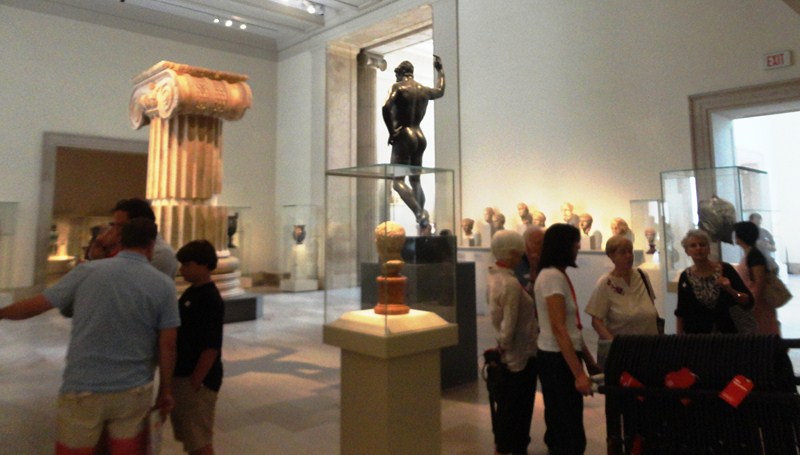 It was excavated at Sardis (the ancient capital of Lydia, in western Turkey) early in the 20th century.
It was excavated at Sardis (the ancient capital of Lydia, in western Turkey) early in the 20th century.
Also on display is a noble, radiant and monumental marble Head of a Ptolemaic Queen (Greek, Ptolemaic, ca. 270-250 B.C.). Highly idealized in a pure Greek style and retaining its original polish, it ranks with the finest Ptolemaic royal portraits.
The Hellenistic Treasury is an intimate showplace for outstanding examples of luxury goods, primarily made of precious metals, gemstones or glass as well as coins (important loans from the American Numismatic Society) and refined small-scale objects having a private or religious use. Among those on display here are a pair of spectacular gold serpentine armbands (Greek, Hellenistic, ca. 200 B.C.) and a small bronze statue of a veiled and masked dancer (Greek, third-second century B.C.).
The John Georgas Family Gallery for Hellenistic Art and the Hellenistic Tradition (Third – First Century B.C.) displays a collection of bronze sculptures including a statue of Eros sleeping (Greek or Roman, Hellenistic or Augustan, third century B.C.-early first century A.D.), one of the few bronze statues that have survived from antiquity.
At its reception hall are several fresco panels, the largest of which is a grouping of three frescoes, from Boscoreale (located near Pompeii, it was buried by the eruption of Vesuvius in A.D. 79), the sumptuous villa of the wealthy Roman patron P. Fannius Synistor (Roman, Late Republican, ca. 50-40 B.C.), with figures that are generally agreed to be copies of a cycle of royal paintings created for one of the Macedonian courts of the Hellenistic period. They probably celebrate a dynastic marriage.
The Black Room (Gallery 165, Roman, Augustan, last decade of first century B.C.), a reconstruction of a room from the imperial villa (partially excavated between 1903 and 1905 after its accidental discovery during work on a railway) of Agrippa Postumus at Boscotrecase, incorporates surviving panels from the original walls. The wall panels, set against a flat, monochrome surface, features Egyptianizing motifs and medallions with portraits of members of the imperial family.
The Sylvia Josephs Berger and Joyce Berger Cowin Gallery for the Art of Augustan Rome (First Century A.D.) contains many exquisite examples of Roman imperial art.
They include:
- A sardonyx cameo (Roman, Claudian, A.D. 41-54) – a masterpiece in miniature carving, it was part of the celebrated 17th-century collection of Thomas Howard, Earl of Arundel.
- A beautiful cast glass bowl (Roman, Augustan, late first century B.C.)
- A glass jug (Roman, Julio-Claudian, first half of first century A.D.) – signed by Ennion (from the eastern Mediterranean coastal city of Sidon in modern Lebanon), the most famous and gifted of the known makers of Roman mold-blown glass.
Roman Imperial Art (Second Century A.D.) focuses on the arts of Rome during the peaceful and prosperous second century A.D. It includes a recently acquired marble cinerary urn or container for the ashes of a cremated body (Roman, Julio-Claudian, first half of the first century A.D.), a singular example of Roman funerary art.
The John A. and Carole O. Moran Gallery for the Art of the Later Roman Empire (Third Century A.D.) prominently displays a collection of Roman sarcophagi figures including:
- A fine strigillated sarcophagus (a type that was very popular in Rome and Italy), although the marble from which it was made comes from northwest Asia Minor (Turkey).
- The bronze statue of Trebonianus Gallus (Roman, Late Imperial, A.D. 251-53)
- The monumental marble head of Constantine the Great (Roman, Late Imperial, ca. A.D. 325-70).
Also on display are gold, silver, and bronze coins that were minted primarily to supply money for state expenditure and to facilitate the collection of taxes. Additional galleries and a study collection are located on the mezzanine level.
The dramatic Leon Levy and Shelby White Gallery for Etruscan Art (Ninth-Second Century B.C.), located at the Mezzanine Level, overlooking the Leon Levy and Shelby White Court to the north and Central Park to the south, is devoted to the art of the Etruscans, from their earliest creations to the time of Roman rule.
Its centerpiece is the newly restored, world-famous Etruscan chariot (second quarter of the sixth century B.C.), one of the great works in the museum’s collection and one of very few complete chariots to survive from antiquity. Made with bronze mounted on a wooden substructure, it is inlaid with precious elephant and hippopotamus ivory and richly decorated with scenes from the life of the Greek hero Achilles. It was probably used solely for ceremonial purposes before being buried in a tomb.
Displayed nearby is a rich array of smaller bronze and terracotta objects found in the same tomb as well as the Bolsena tomb-group, which includes works that were part of the burial of a woman.
Also on view are the following:
- A small, charming Etruscan vase (which may originally have contained ink) in the shape of a cockerel (ca. 630-620 B.C.), inscribed with the 26 letters of the Etruscan alphabet.
- A small bronze statuette of a young, elaborately dressed Etruscan woman (Archaic, late sixth century B.C.), most likely used as a religious offering in a sanctuary.
- The so-called “Morgan amber” (Etruscan, Late Archaic, ca. 500 B.C.) – the most complex and most important carved amber surviving from ancient Italy, it shows a couple reclining on a couch. It came to the museum with the bequest of the collection of J. Pierpont Morgan.
- A set of jewelry found in a tomb (late archaic Etruscan, early fifth century B.C.) – the richest and most impressive set of Etruscan jewelry ever found, it comprises a splendid gold and glass pendant necklace, a pair of gold and rock-crystal disk earrings, a gold fibula decorated with a sphinx, a pair of plain gold fibulae, a gold dress pin, and five finger ring. Two of the rings have engraved scarabs. One is decorated with embossed satyr heads while the other two have decorated gold bezels.
- A group of Etruscan and Italic armor
- Elaborately carved cinerary urns
- 14 beautifully engraved Etruscan mirrors.
Leon Levy And Shelby White Gallery For The Greek And Roman Study Collection (Prehistoric Greek-Late Roman), located at the Mezzanine Level, features a large display of study material, comprising more than 3,400 works in all media and covering the entire cultural and chronological span of the department’s collection, from the art of prehistoric Greece through late Roman art. Among its noteworthy works are:
- A collection of prehistoric Greek vases – given to the Metropolitan Museum in 1927 by the Greek government
- A Roman transport amphora – given by the noted underwater explorer Jacques Cousteau.
- Several hundred examples of Roman glass in fantastic shapes and colors, ranging from clear colorless to darkest blue, and from greenish yellow to deep amber.
In lieu of traditional labels inside the display cases, an interactive system, developed specifically for the Metropolitan, allows the information to be kept up-to-date with the latest scholarship on each object. Six wall-mounted computer touch screens, located throughout the study collection, allow visitors to access information about each object on view.
An additional gallery, also on the mezzanine level, is devoted to the display of special exhibitions.
The Norbert Schimmel Gallery (Prehistoric Art from Cyprus: Seventh Millennium–ca. 1000 B.C.), focusing on objects of the Bronze Age (ca. 2500–1050 B.C.), houses a collection of ancient art from Cyprus that was acquired by the Museum in 1874, having been assembled on the island by Gen. Luigi Palma di Cesnola (American consul and later Met’s first director). Though not surely from Cyprus, the bronze ingot represents the island’s single most significant resource.
Archaic Art from Cyprus (ca. 1000–ca. 480 B.C.) displays stone sculpture of the sixth through third century B.C., made from soft local limestone. The works, preserving considerable polychromy, reflect the successive influence of Assyrian, Egyptian, Persian and Greek domination. The most significant object, in terms of scale, quality, and importance, is the sarcophagus from the site of Amathus. Also well represented here are metal vases, particularly of silver.
Metropolitan Museum of Art: 1000 5th Ave, New York, NY 10028, USA. Tel: (212) 535-7710 and (212) 570-3951. Fax: (212) 472-2764. E-mail: communications@metmuseum.org. Website: www.metmuseum.org. Open 10 AM – 9 PM. Admission: US$25/adult, children below 12 years old is free.

